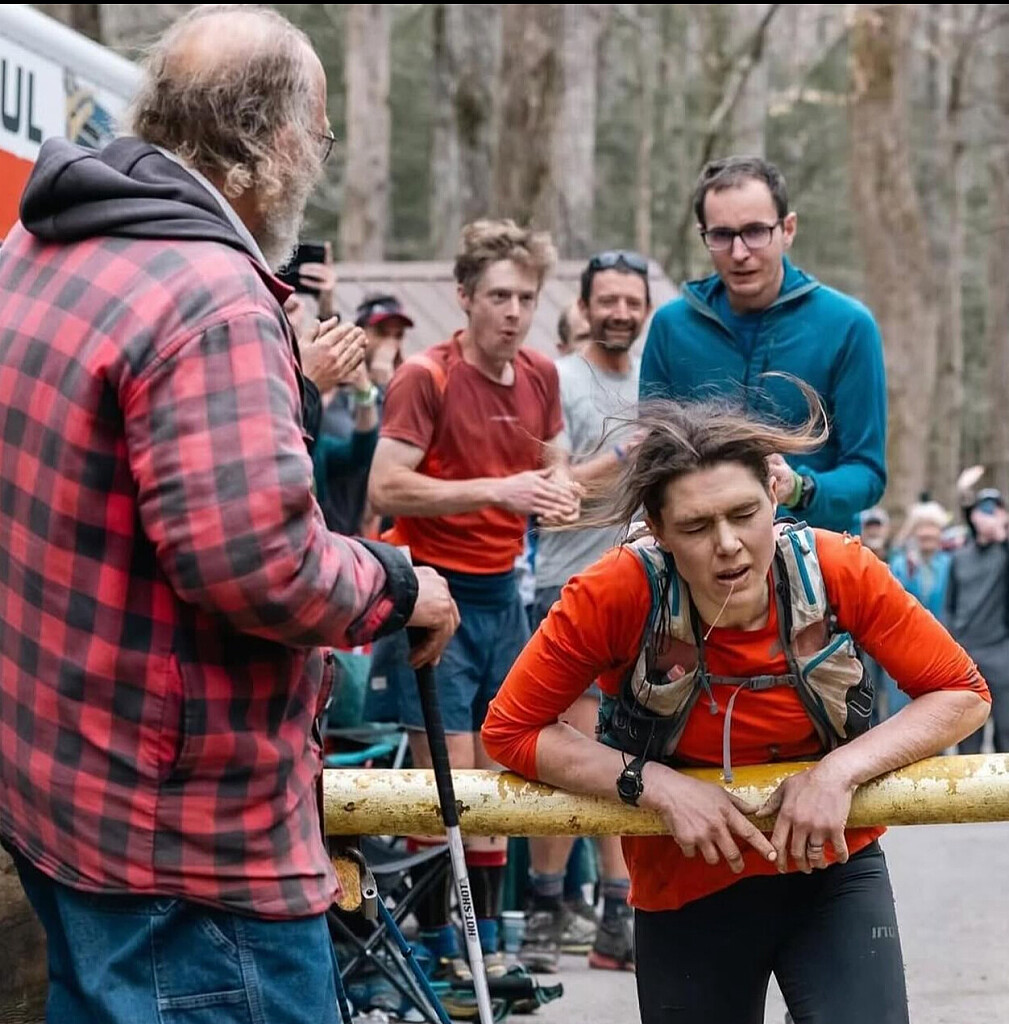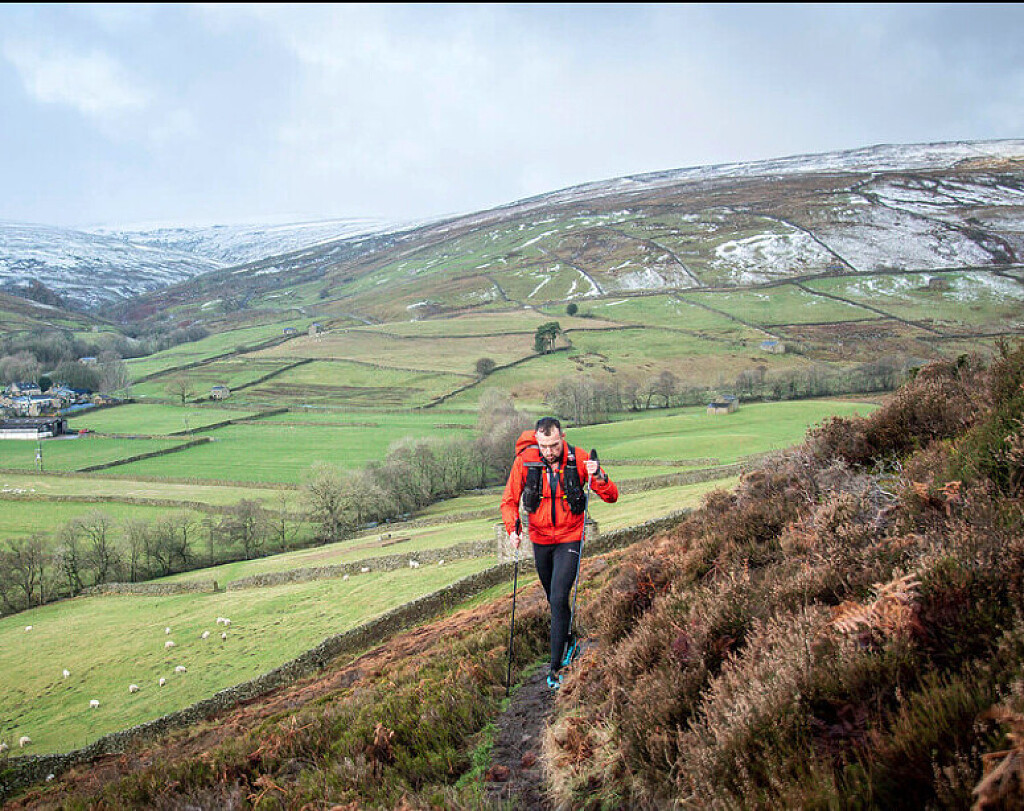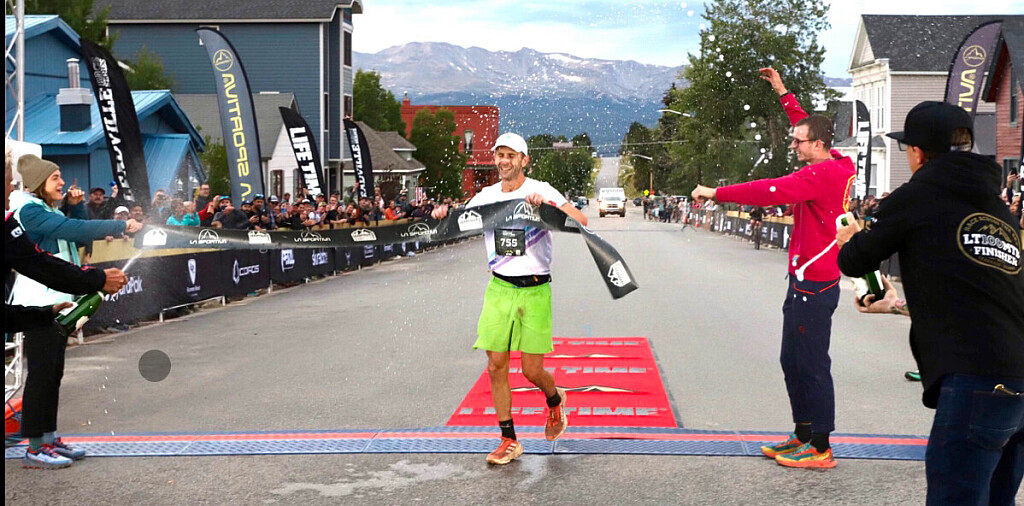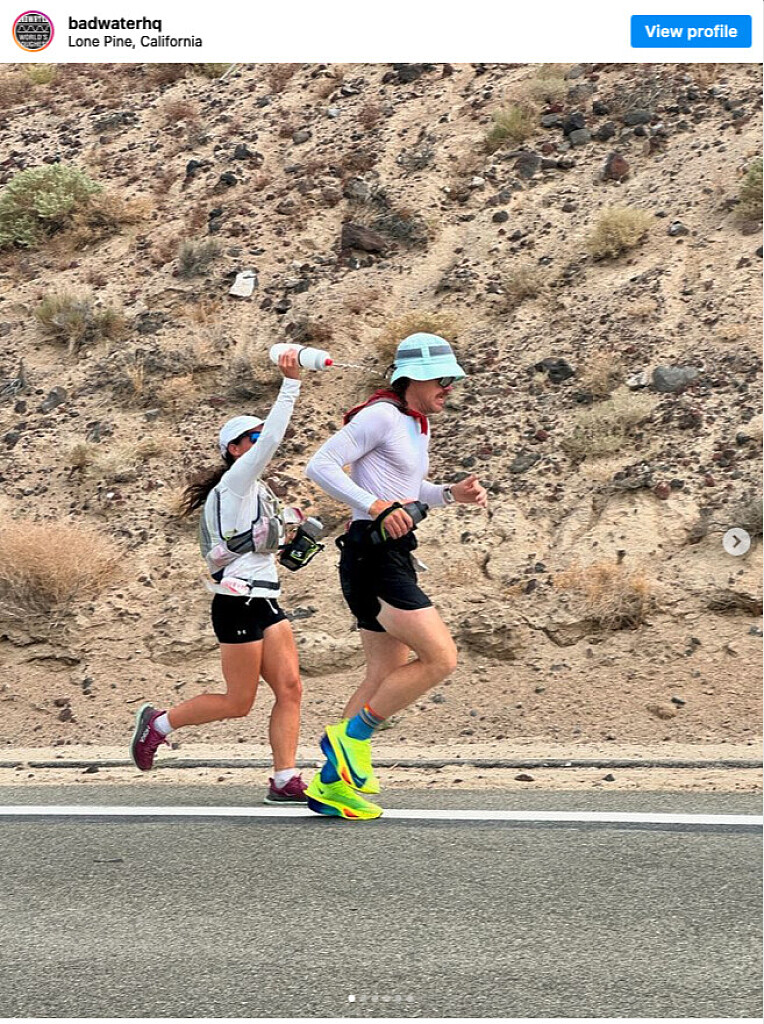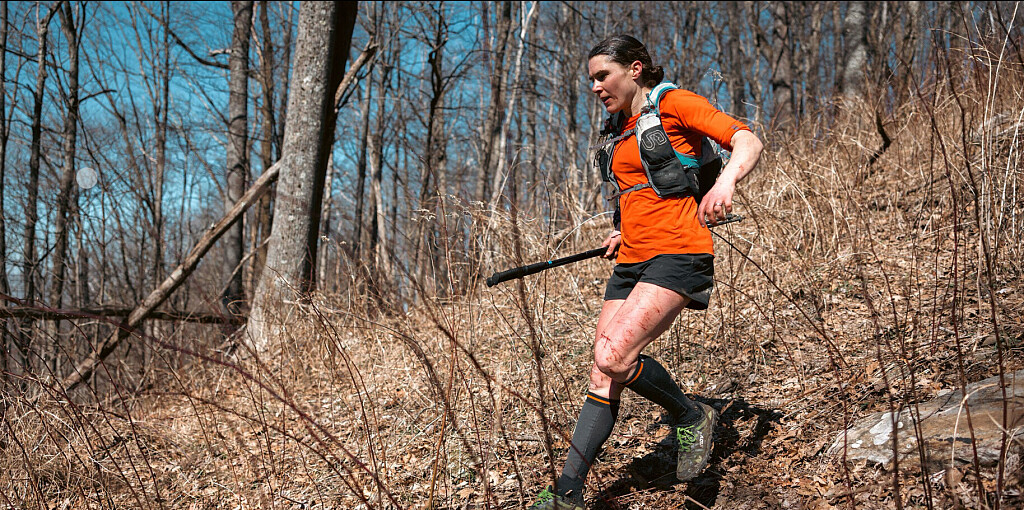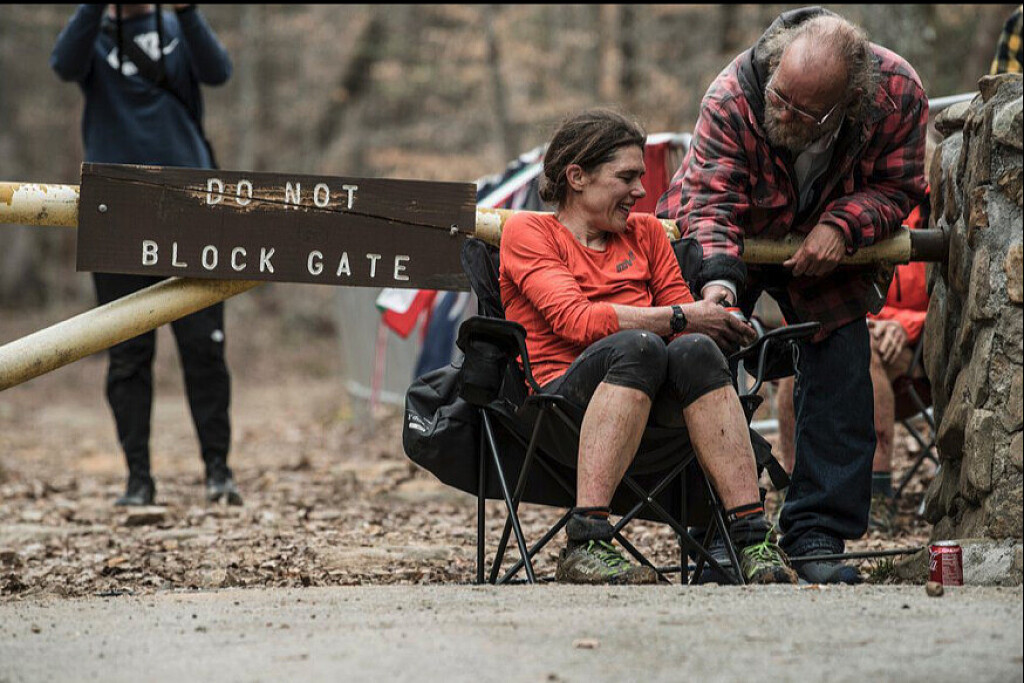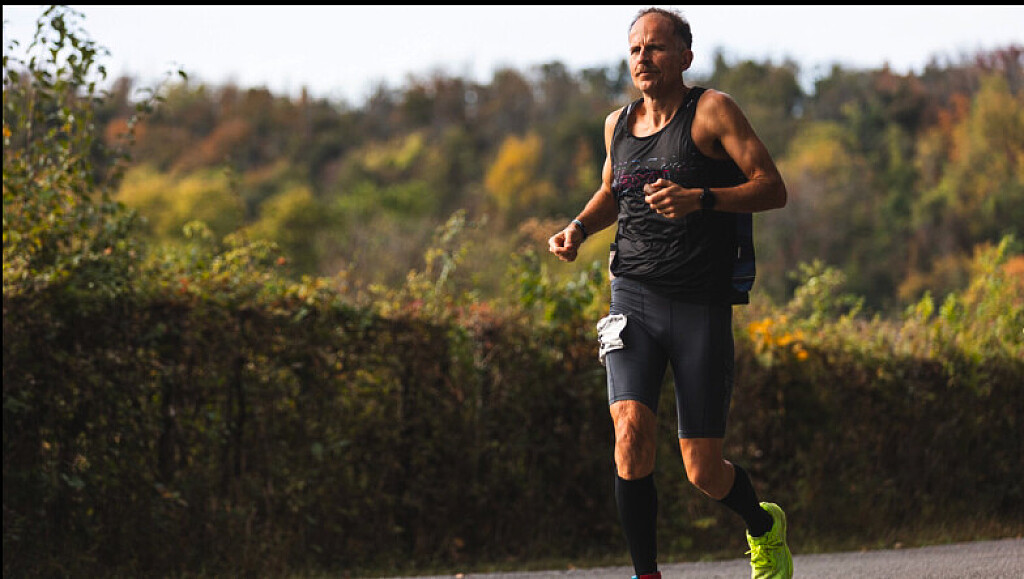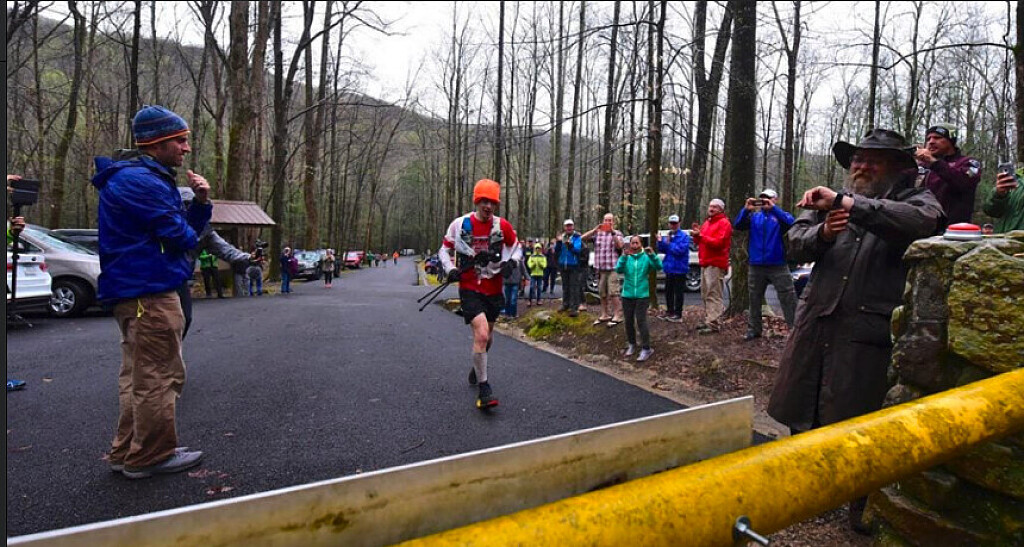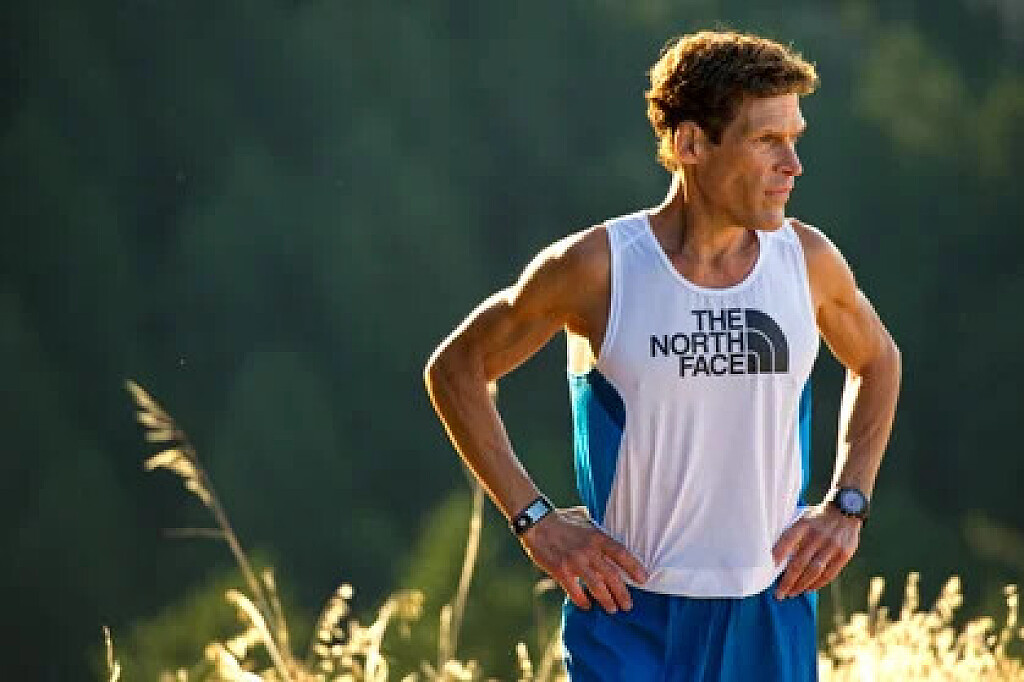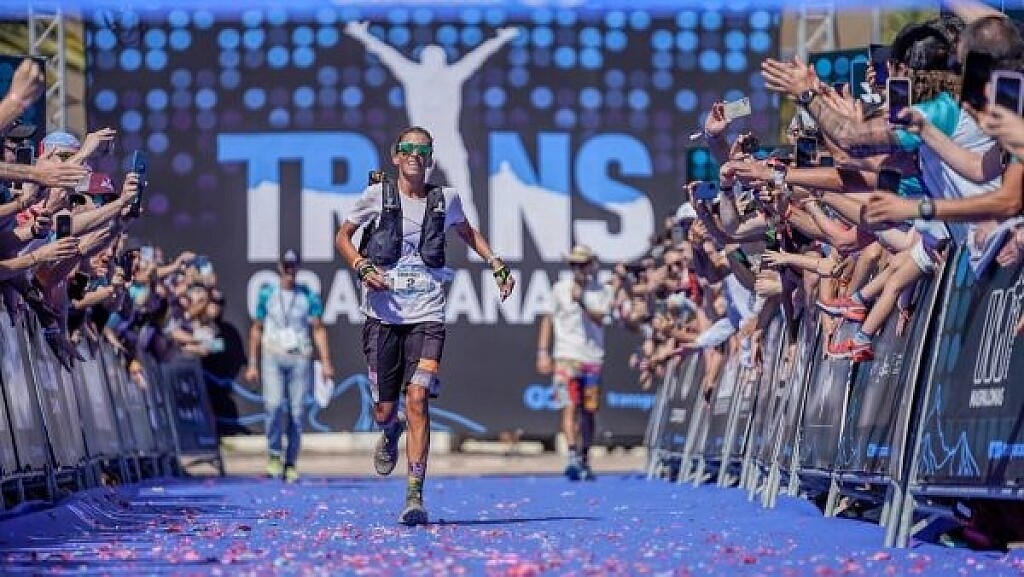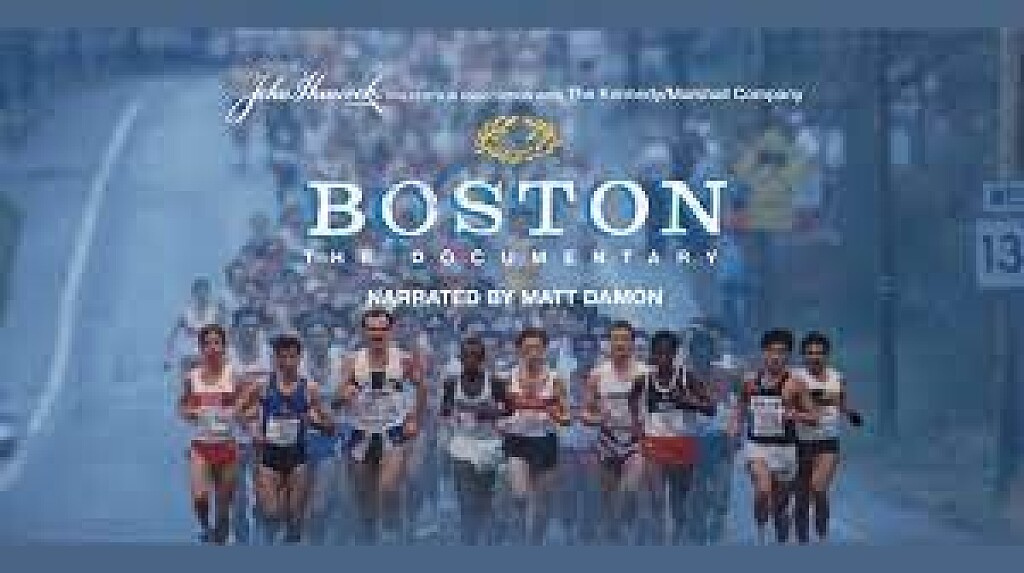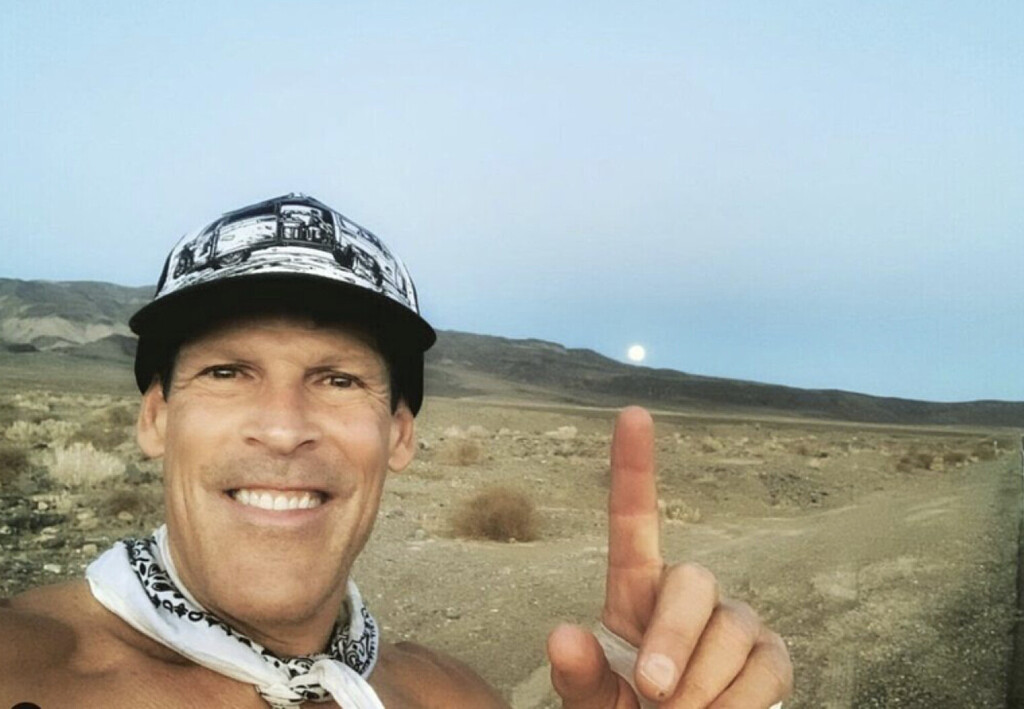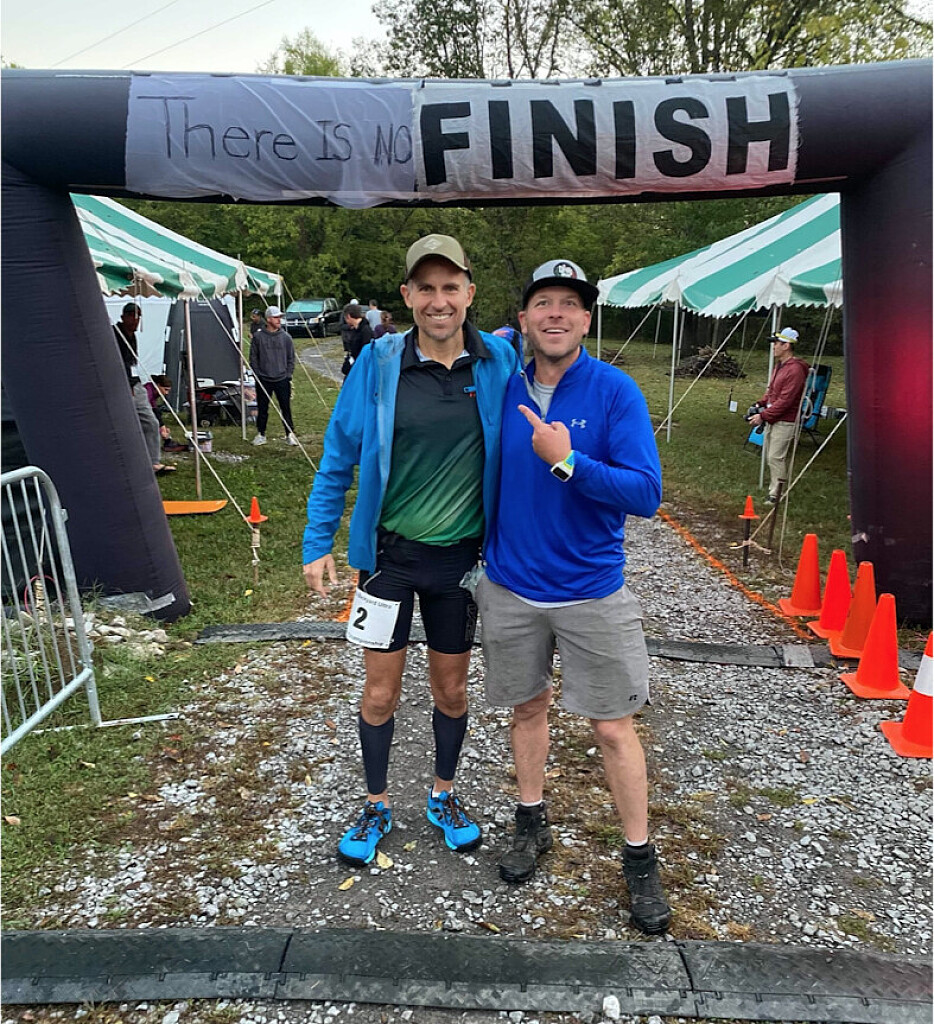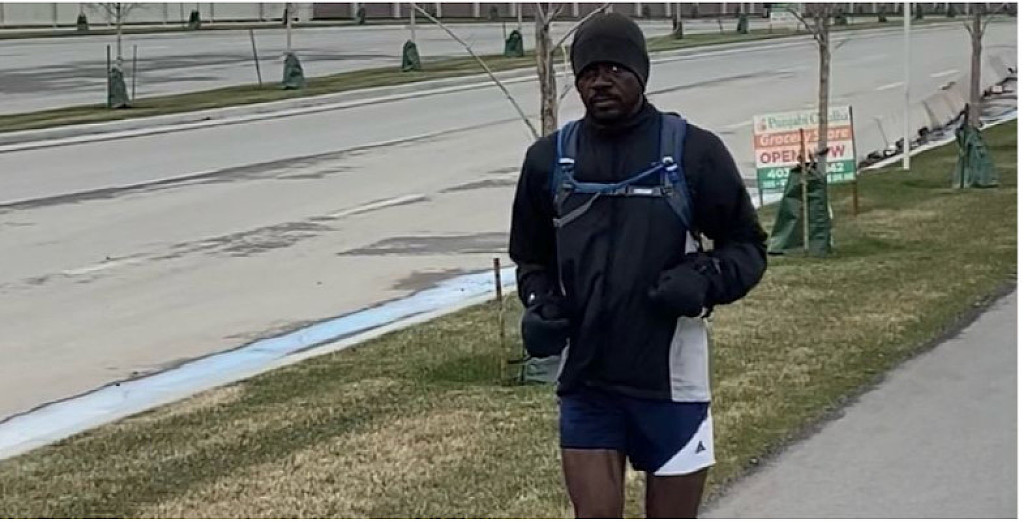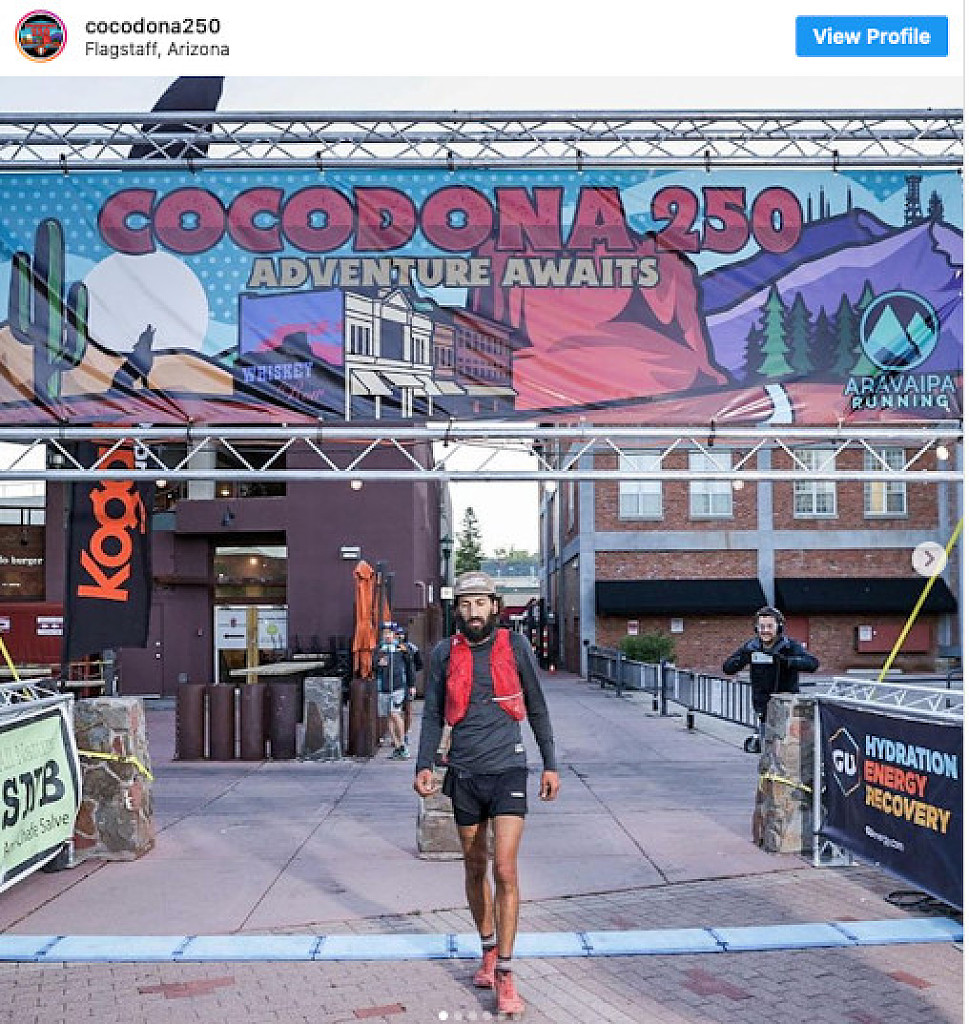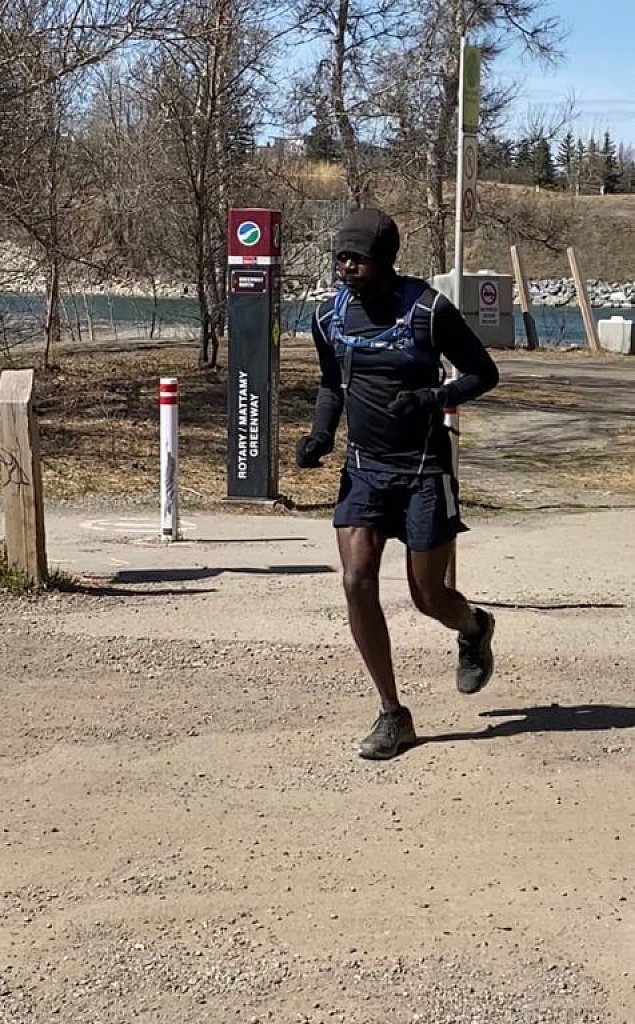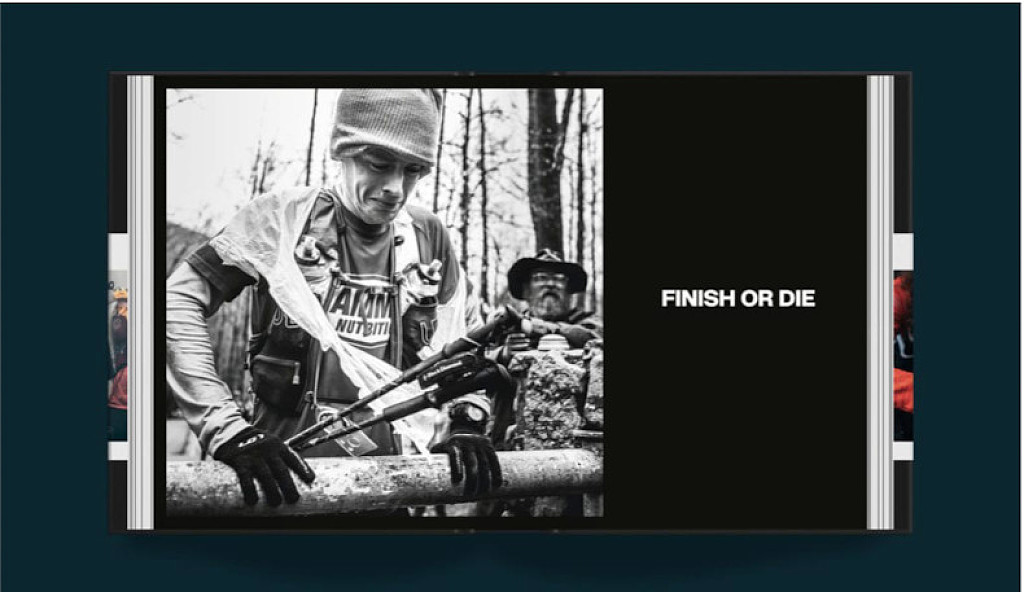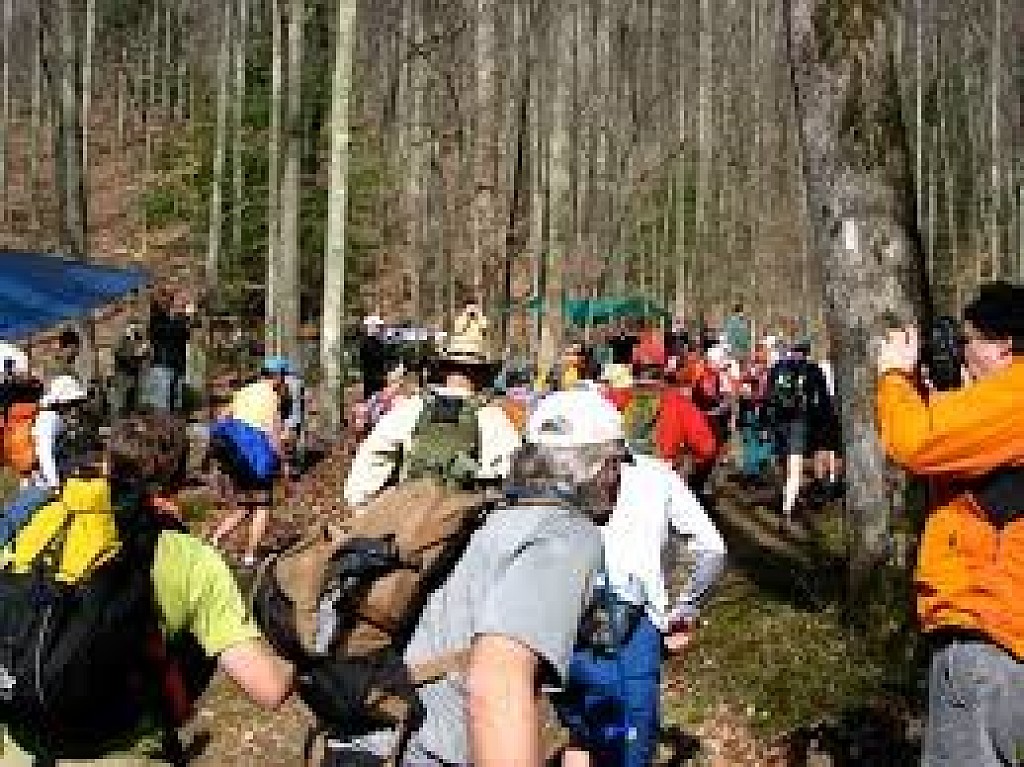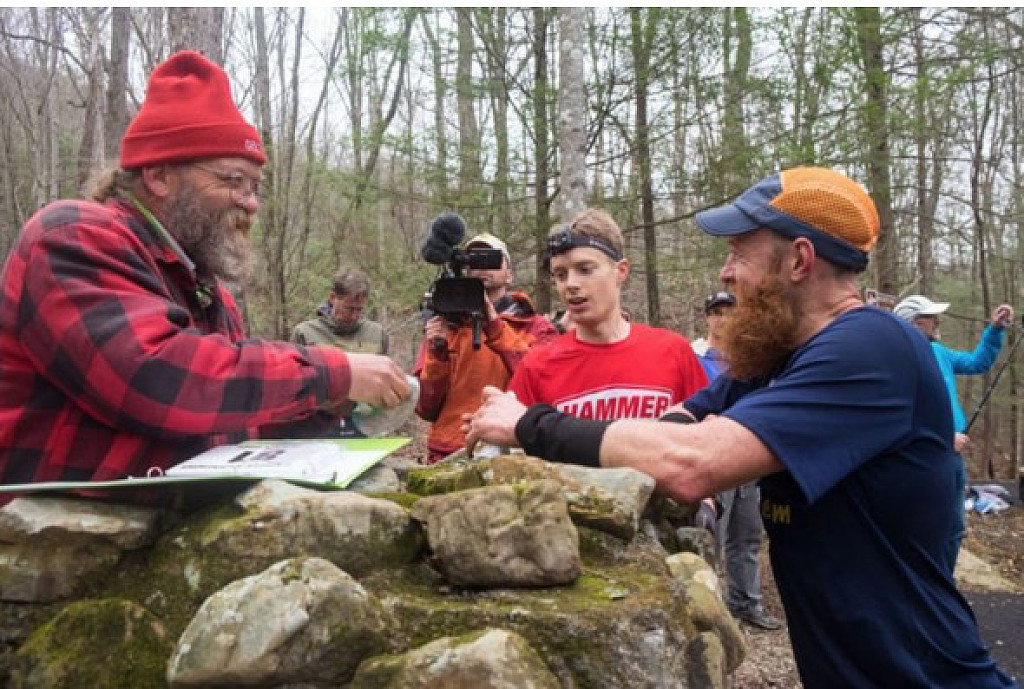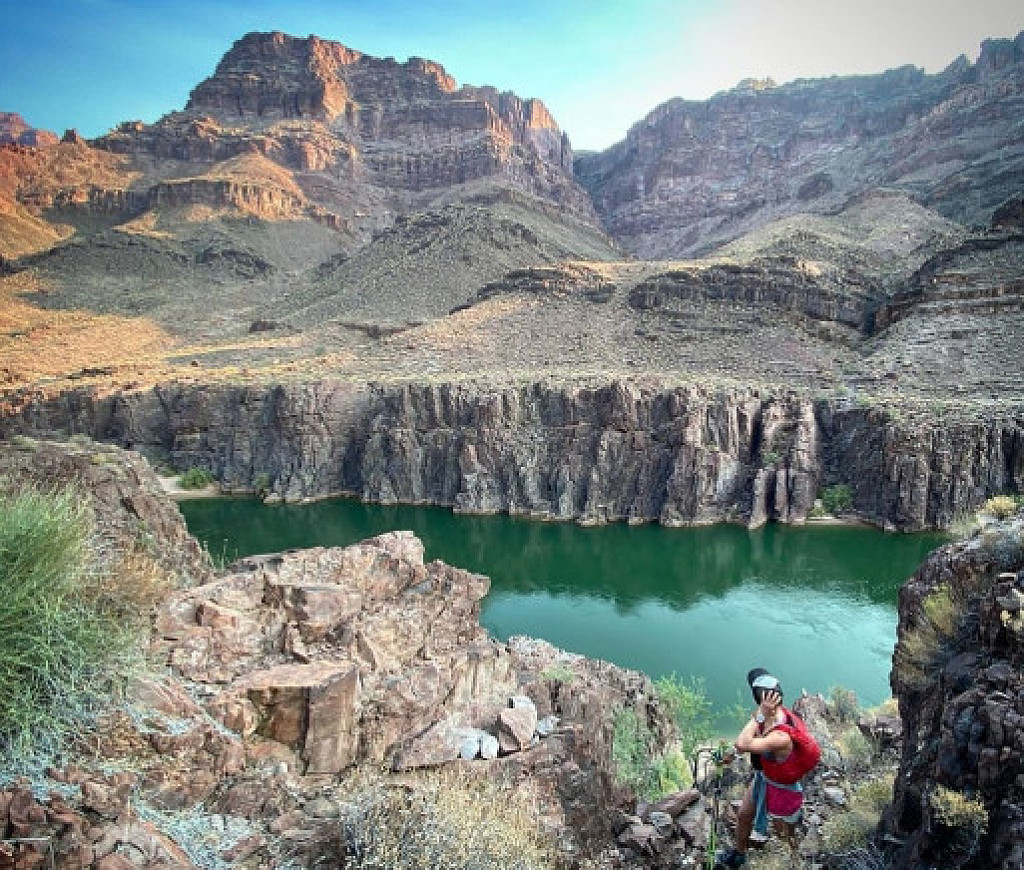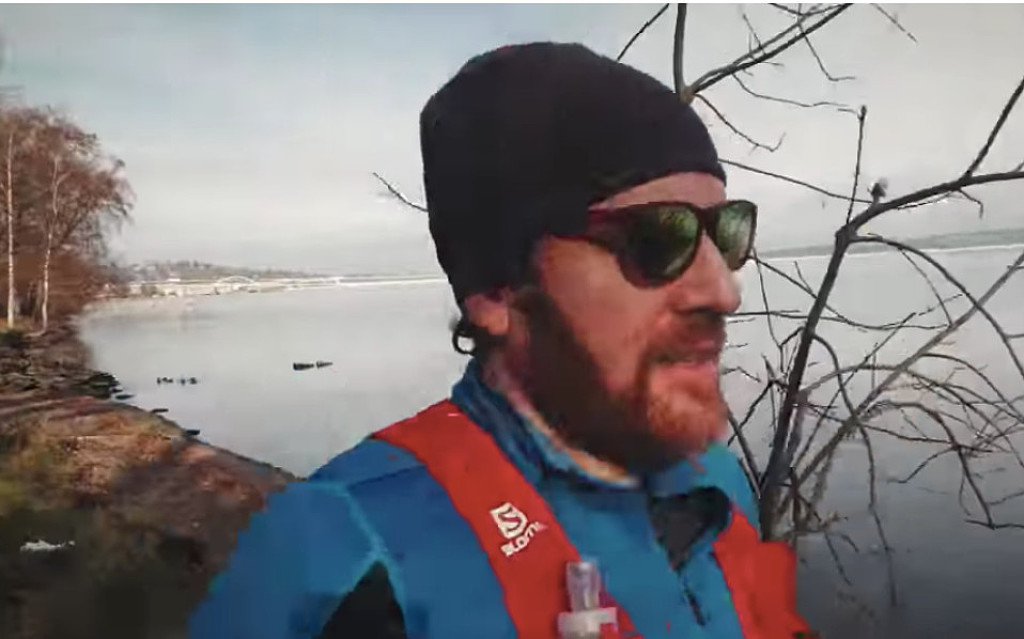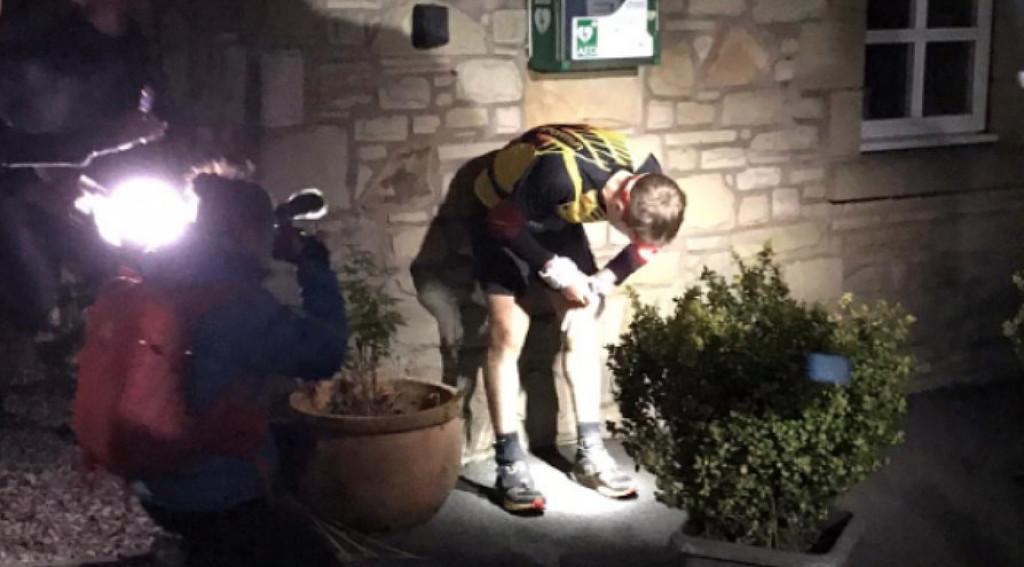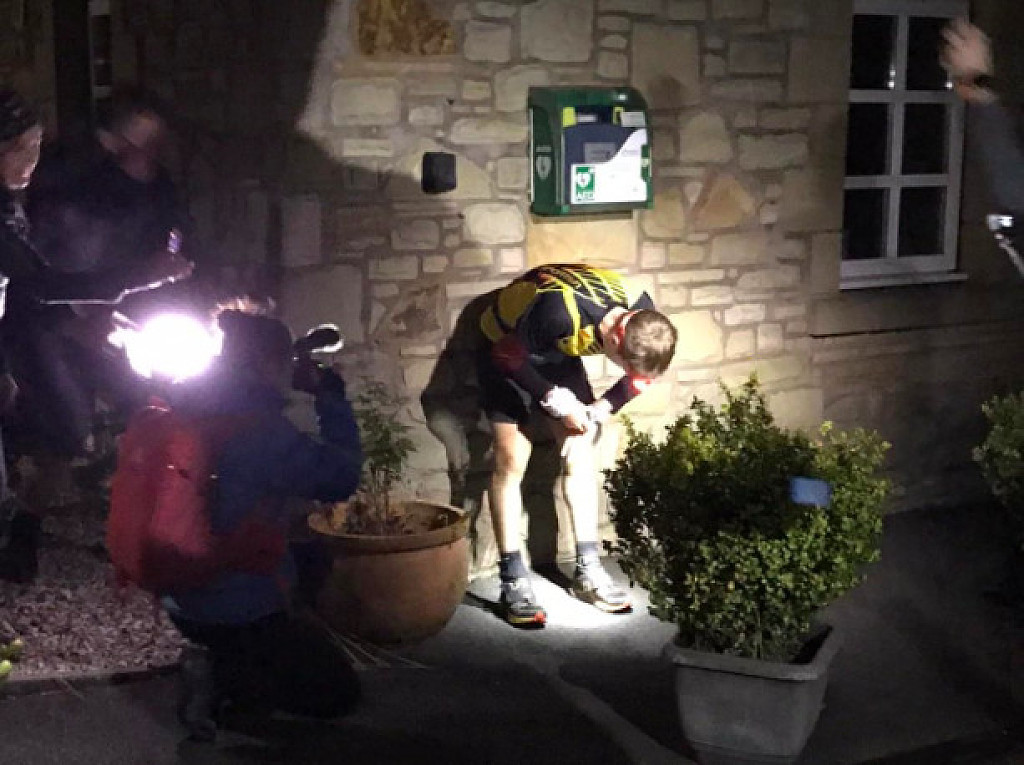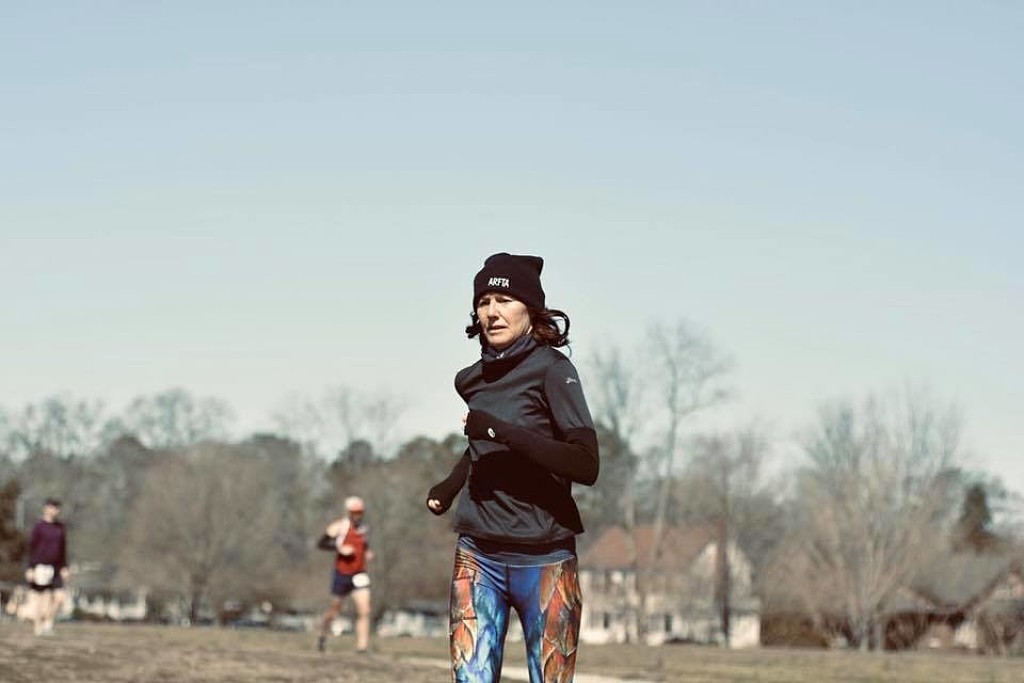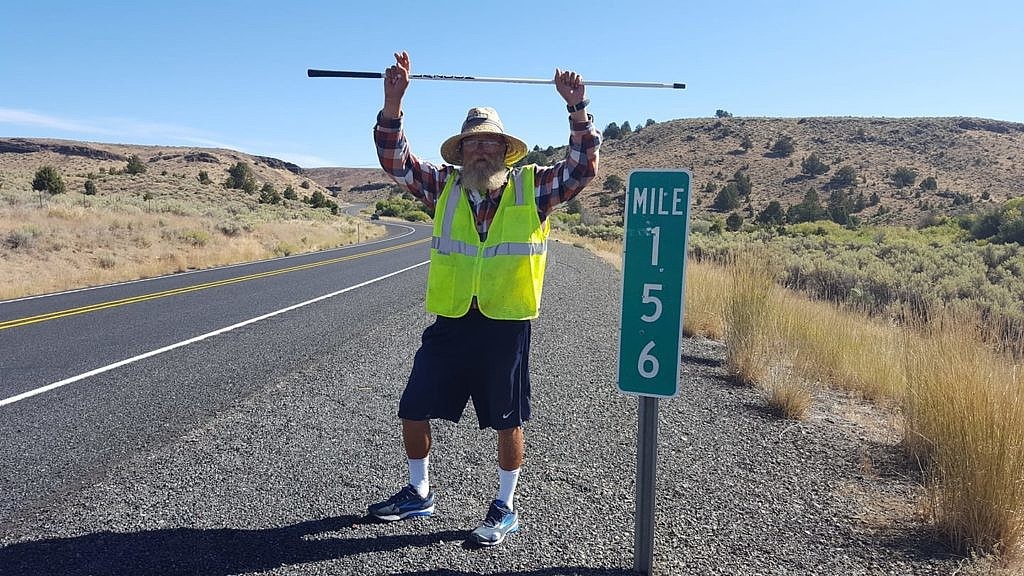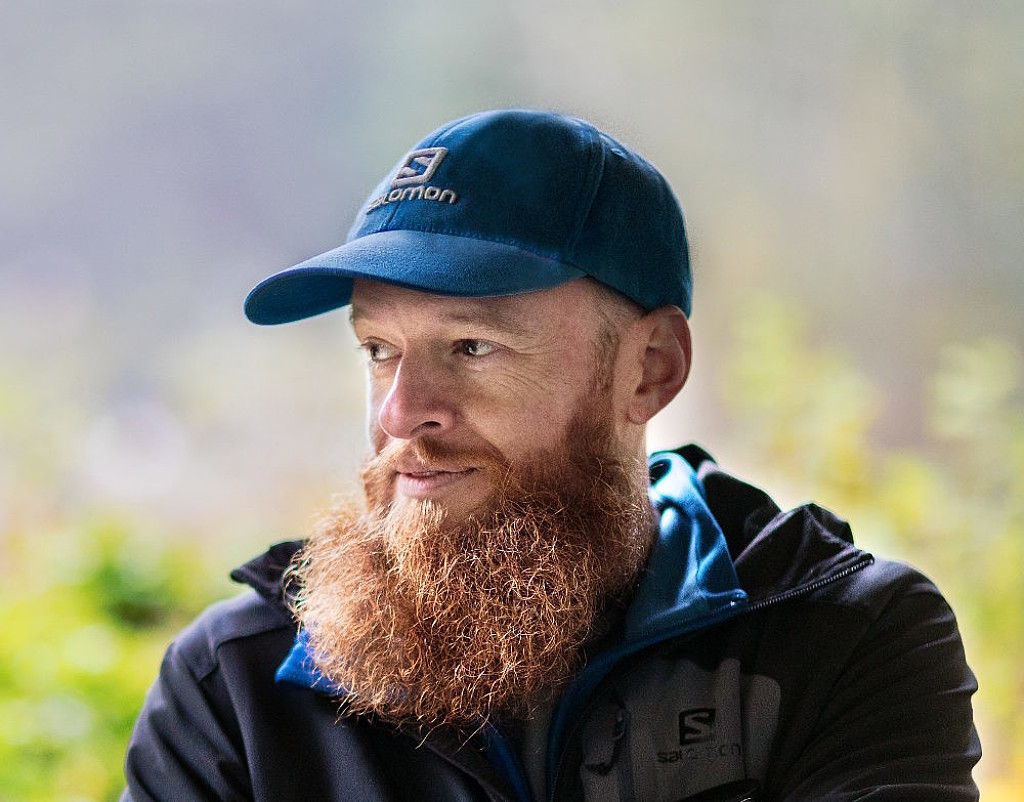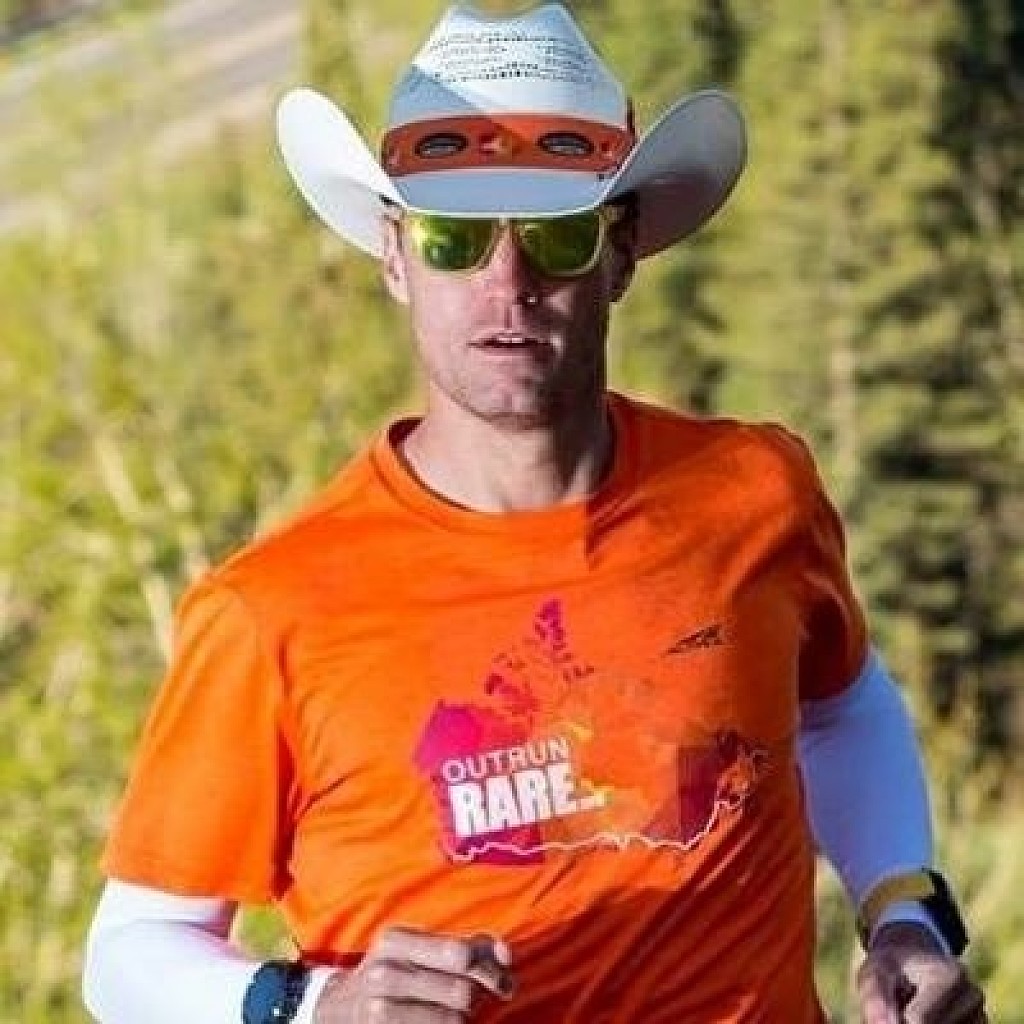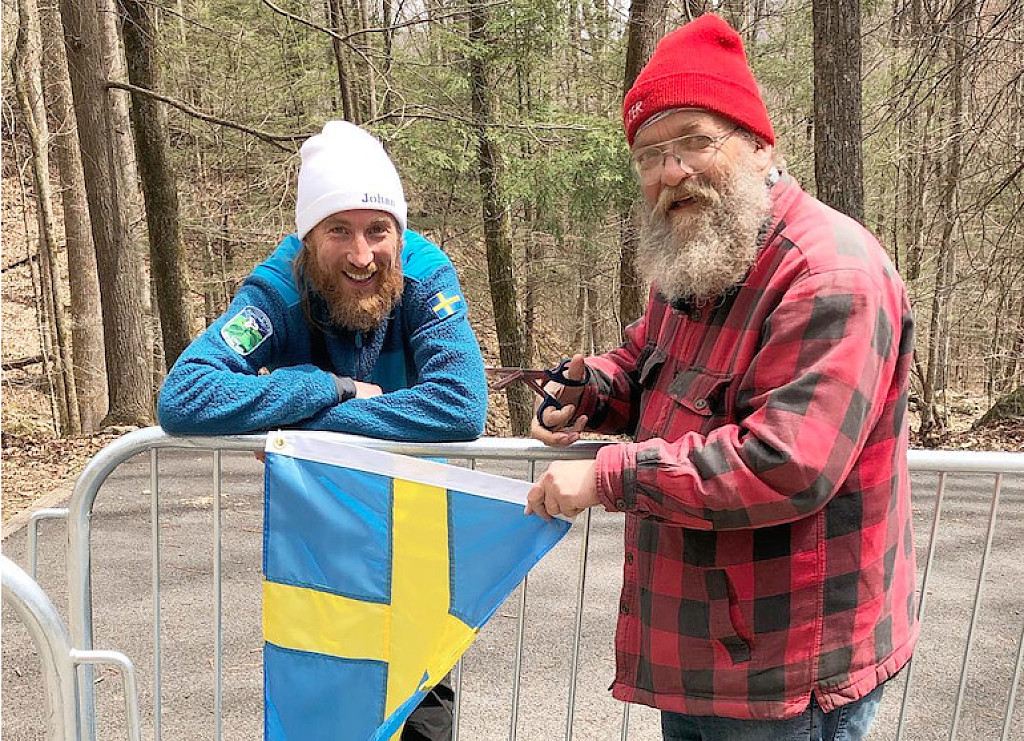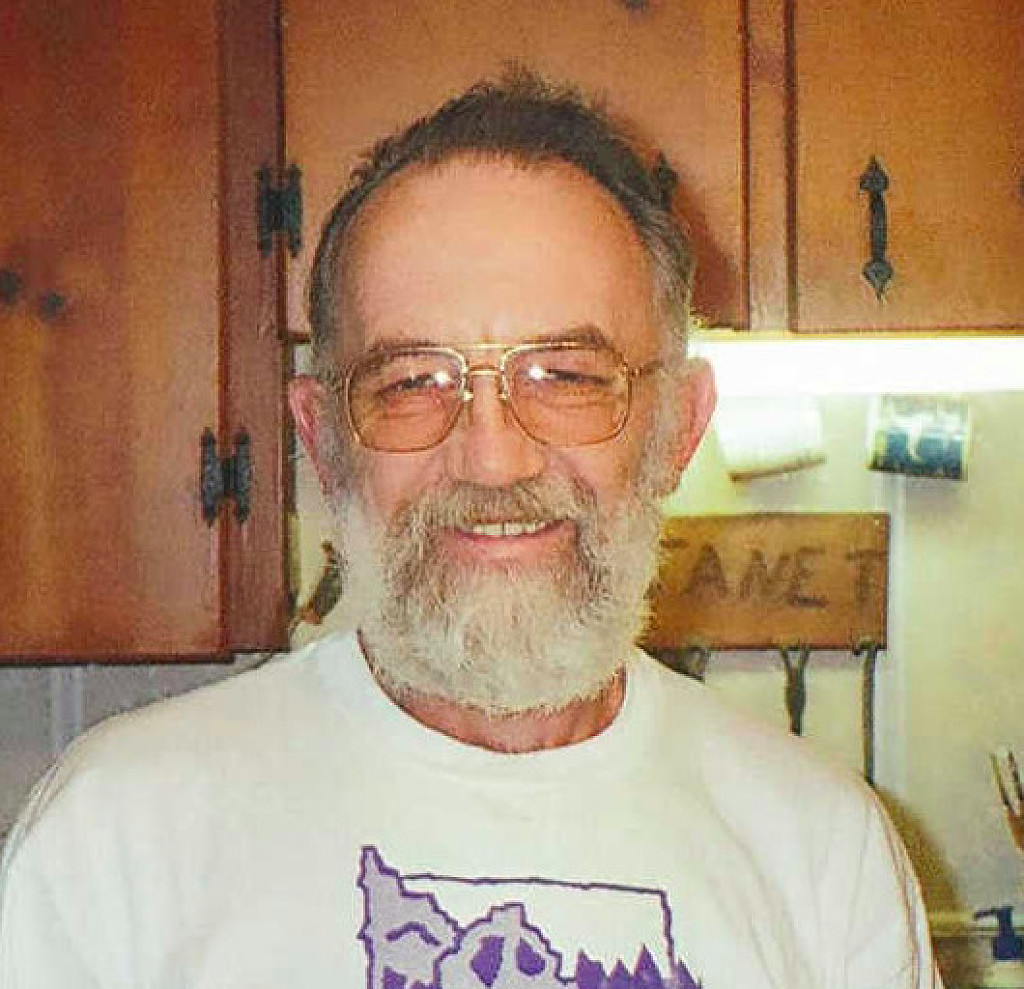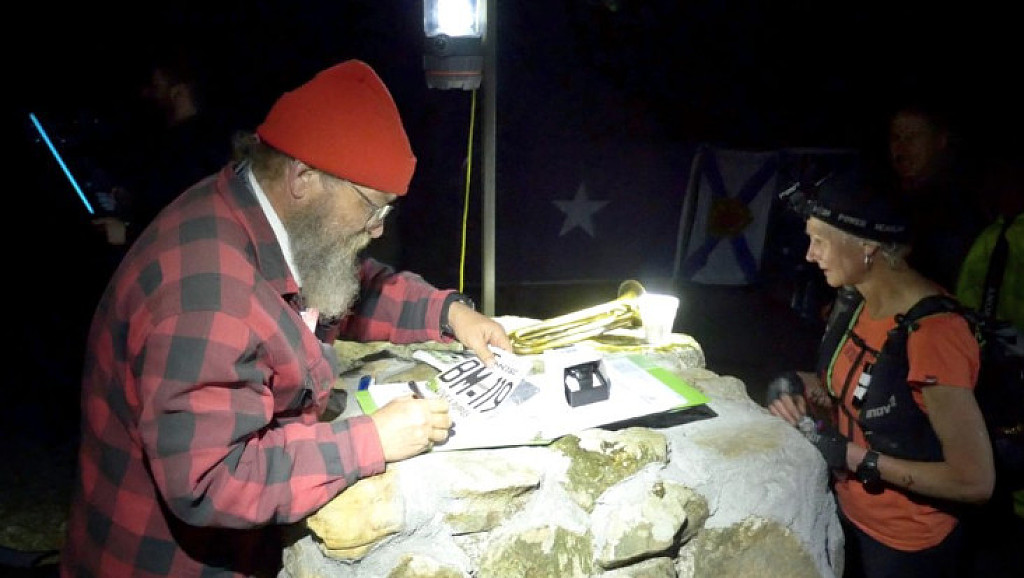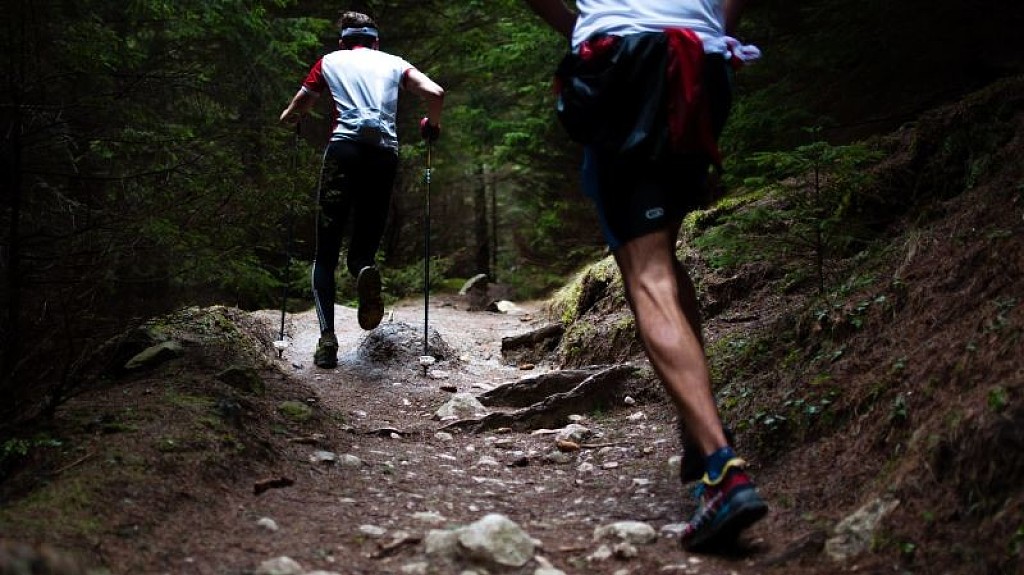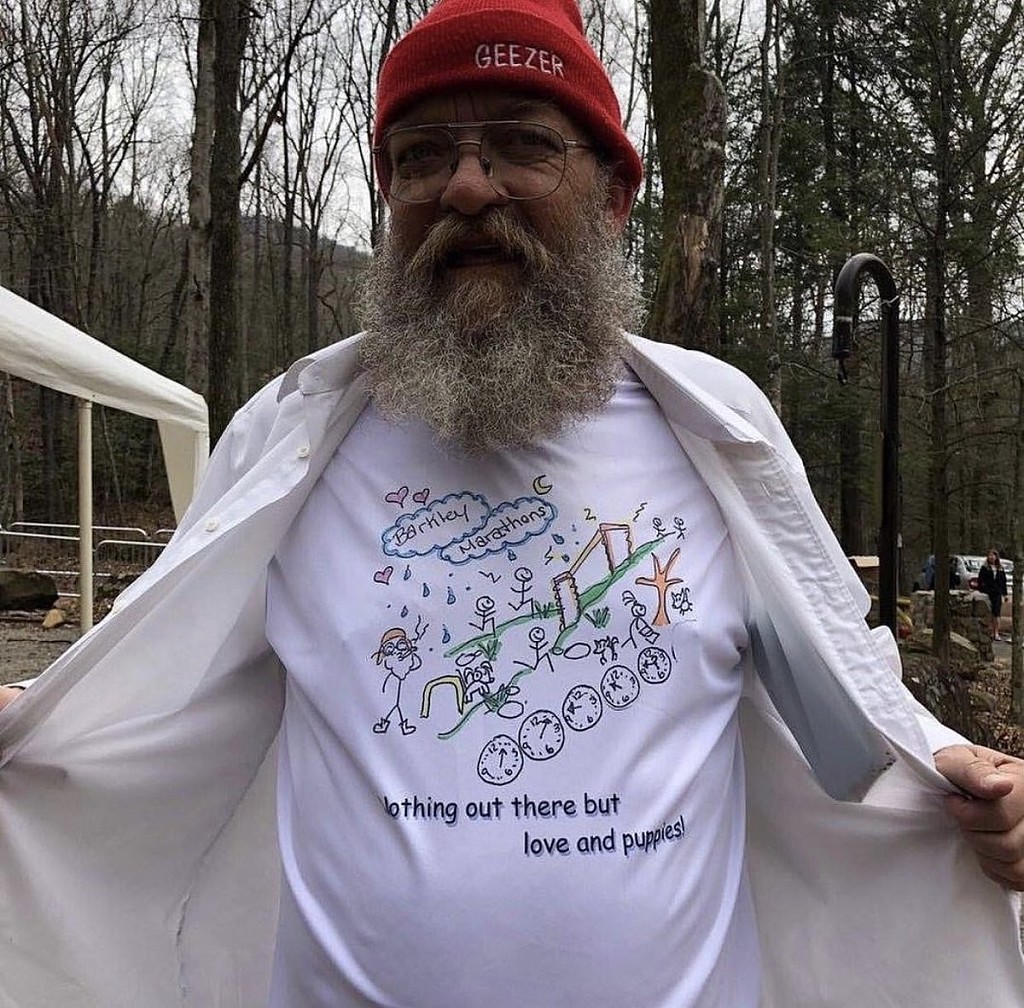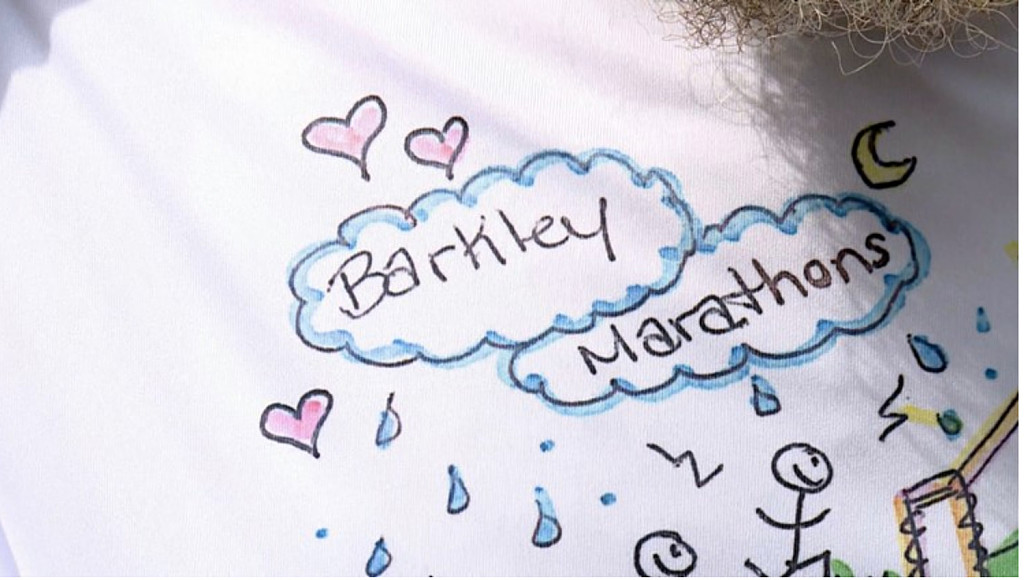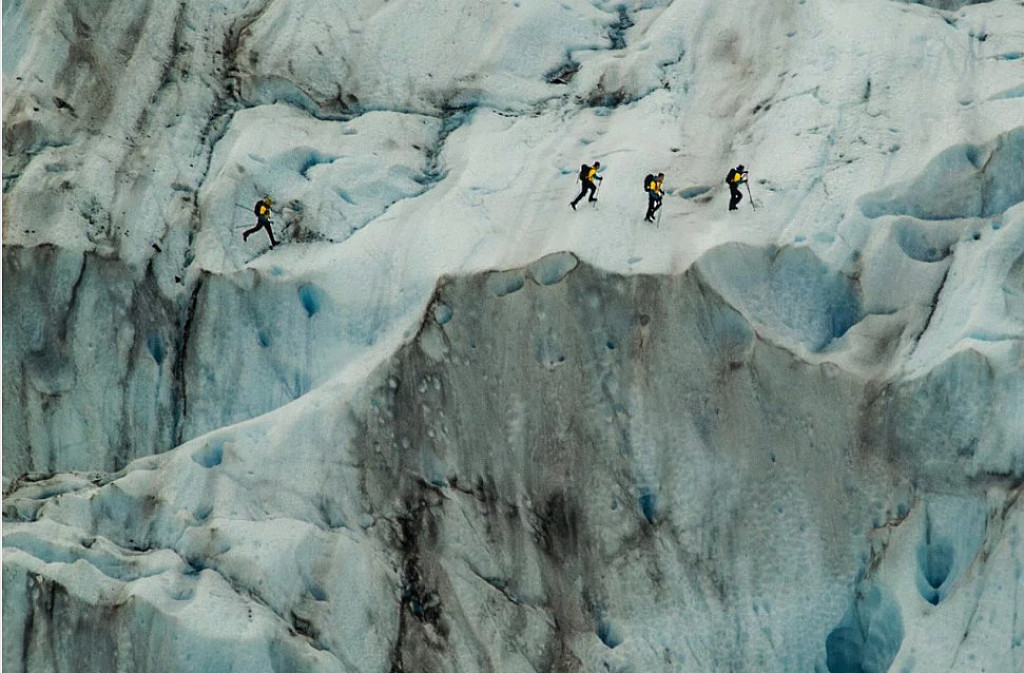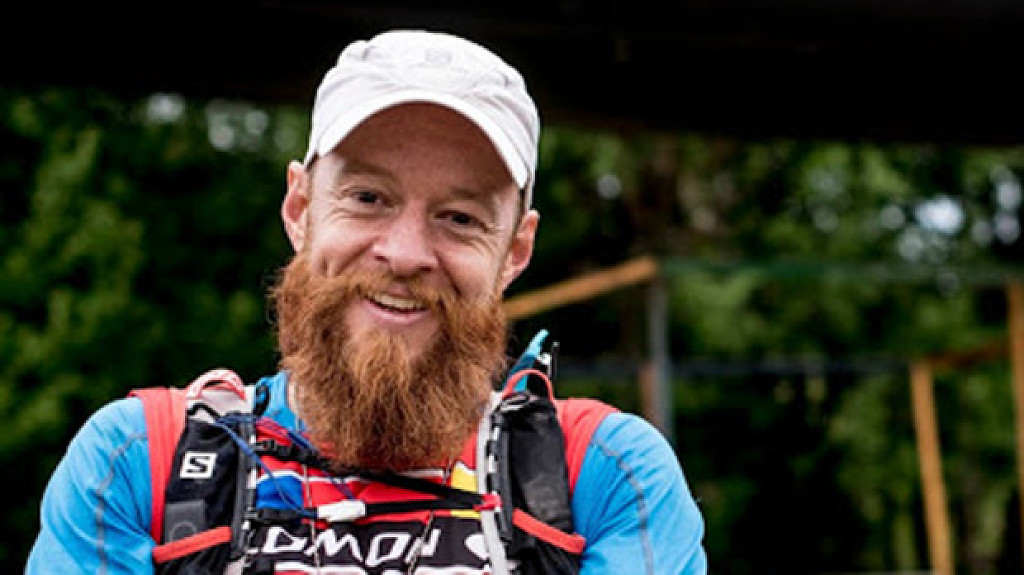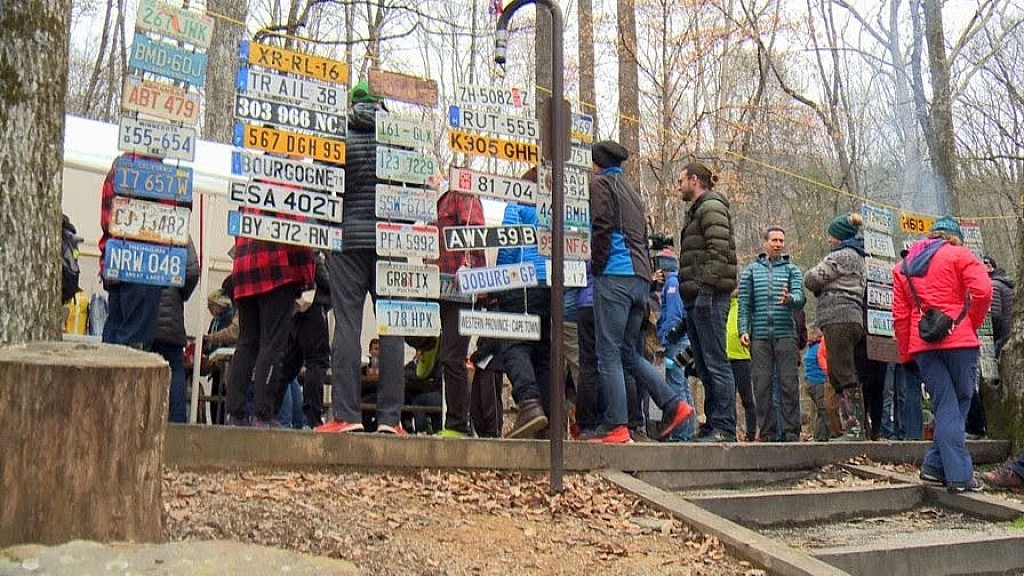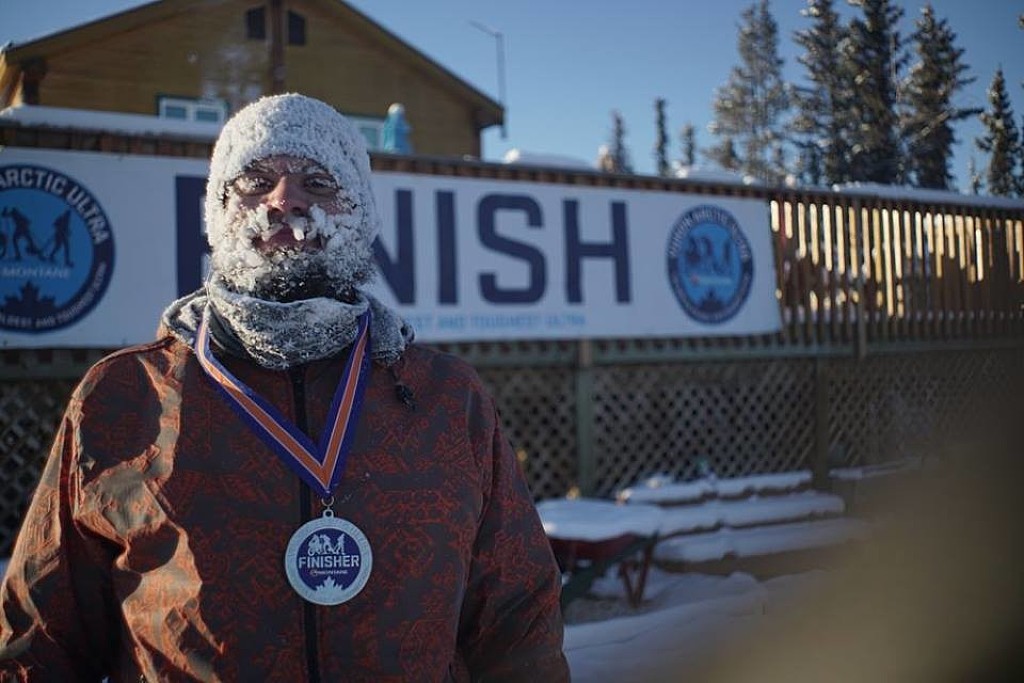Running News Daily
Running News Daily is edited by Bob Anderson. Send your news items to bob@mybestruns.com Advertising opportunities available. Train the Kenyan Way at KATA Kenya and Portugal owned and operated by Bob Anderson. Be sure to catch our movie A Long Run the movie KATA Running Camps and KATA Potato Farms - 31 now open in Kenya! https://kata.ke/
Index to Daily Posts · Sign Up For Updates · Run The World Feed
Articles tagged #Barkley Marathons
Today's Running News
Only one women has ever finished the Barkley Marathons since it started in 1986 - Jasmin Paris
Jasmin Paris cemented her place in ultrarunning history by becoming the first woman to finish the Barkley Marathons in 2024. Known for her endurance and mental toughness, Paris completed the brutal 100-mile course in 59 hours, 58 minutes, and 21 seconds, finishing with just 99 seconds to spare.
A seasoned ultrarunner and former winner of the Spine Race, she battled extreme terrain, sleep deprivation, and navigation challenges to achieve this groundbreaking feat. Her success not only shattered barriers but also proved that women can conquer one of the toughest endurance events ever devised, inspiring runners worldwide.
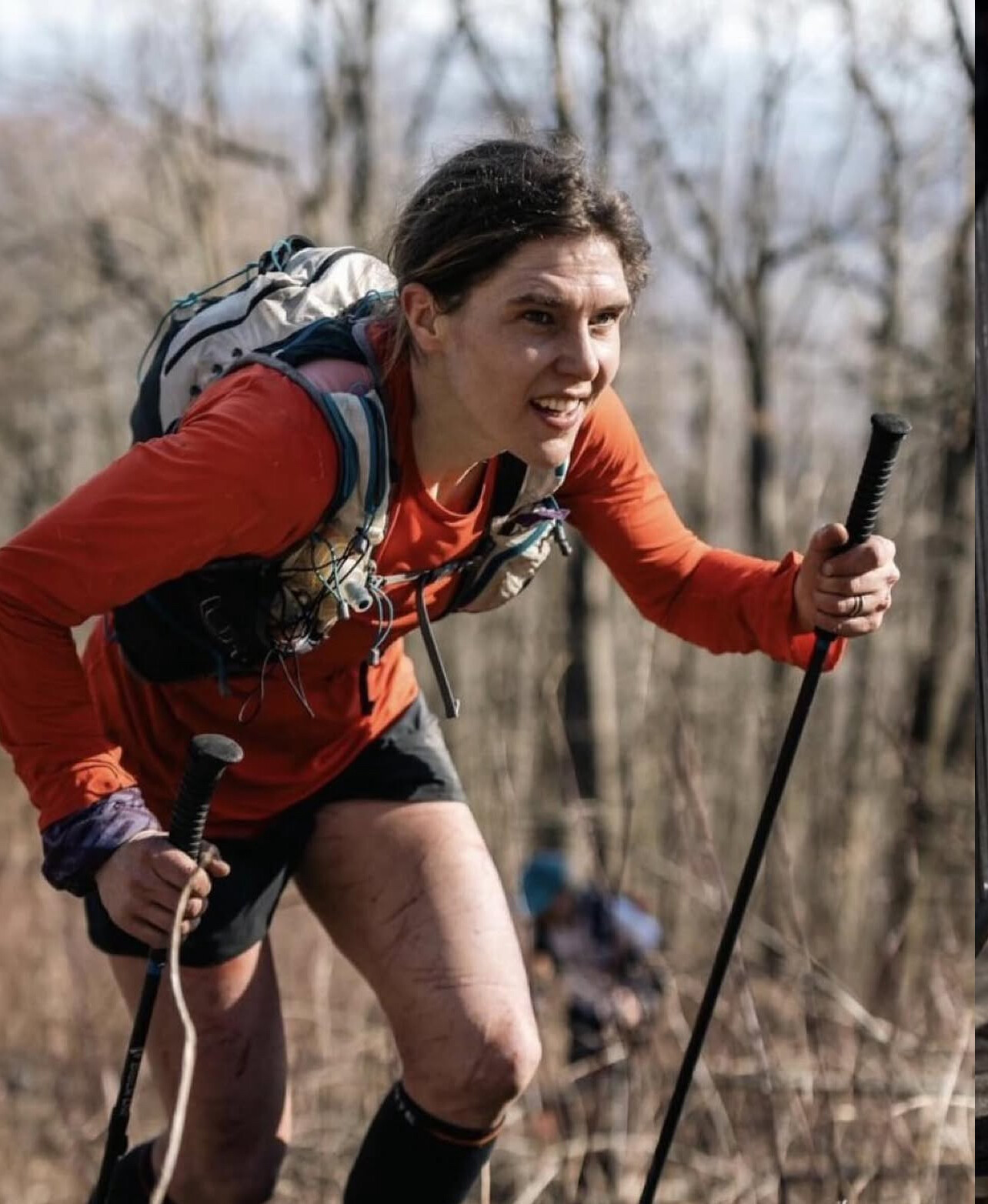
The Barkley Marathons often called the hardest foot race on the planet has long been a symbol of ultimate endurance in the ultrarunning community Established in 1986 this grueling event challenges participants to complete five approximately 20 mile loops totaling around 100 miles within a 60 hour limit Historically the race has seen a minuscule completion rate with only 15 different individuals finishing between 1986 and 2022
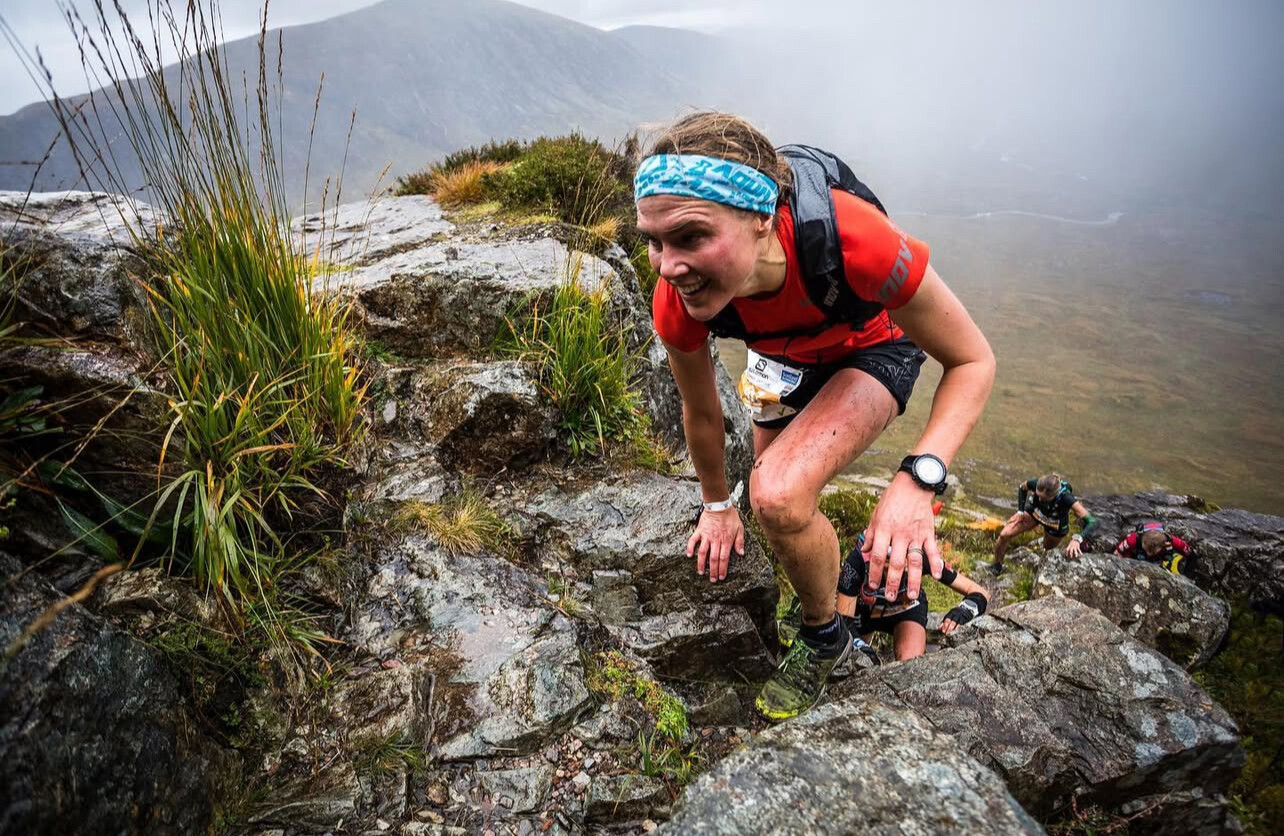
A Surge in Finishers
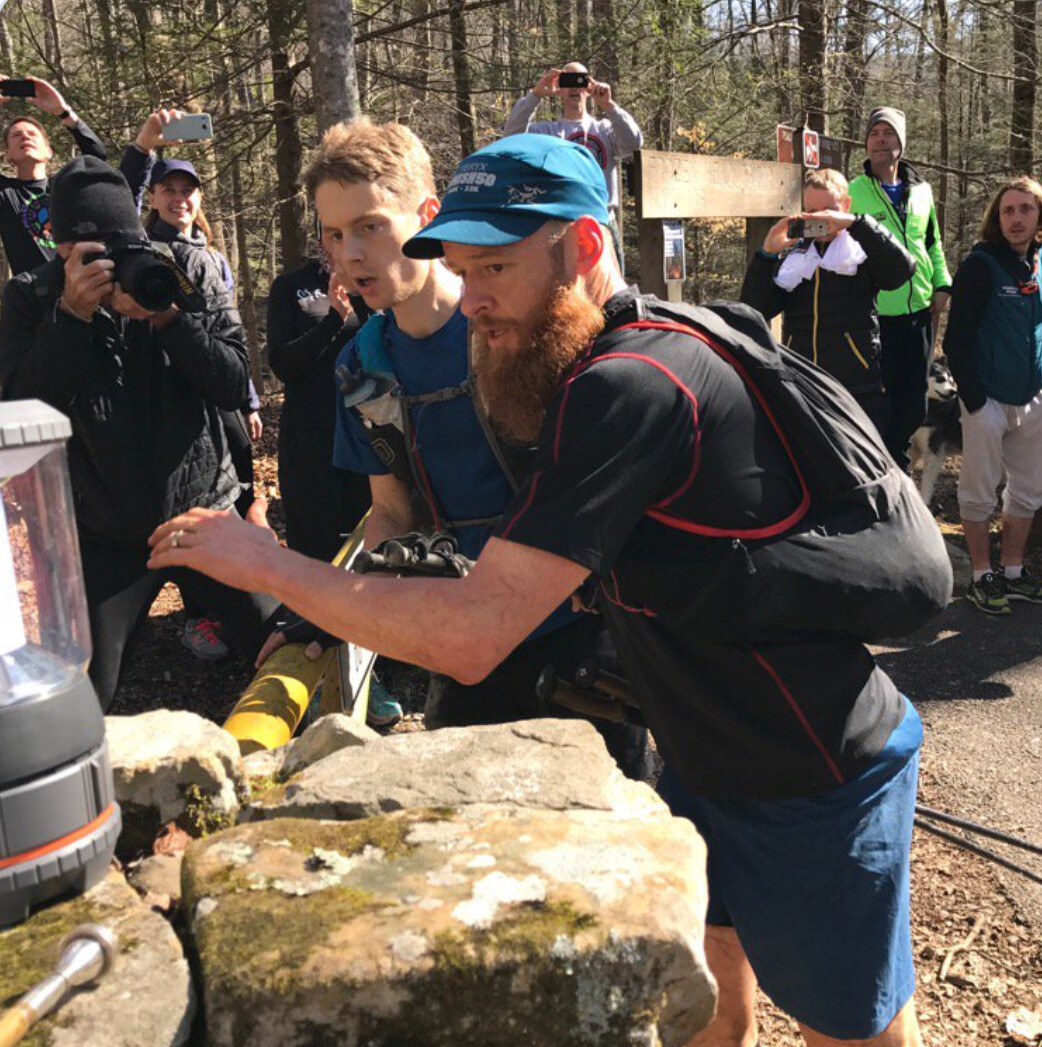
The 2023 edition marked a significant shift Three runners Aurelien Sanchez John Kelly and Karel Sabbe successfully completed the course Kelly who had previously finished in 2017 was joined by Sanchez a debutant and Sabbe who had come close in prior attempts This uptick in completions prompted discussions about the race’s evolving difficulty
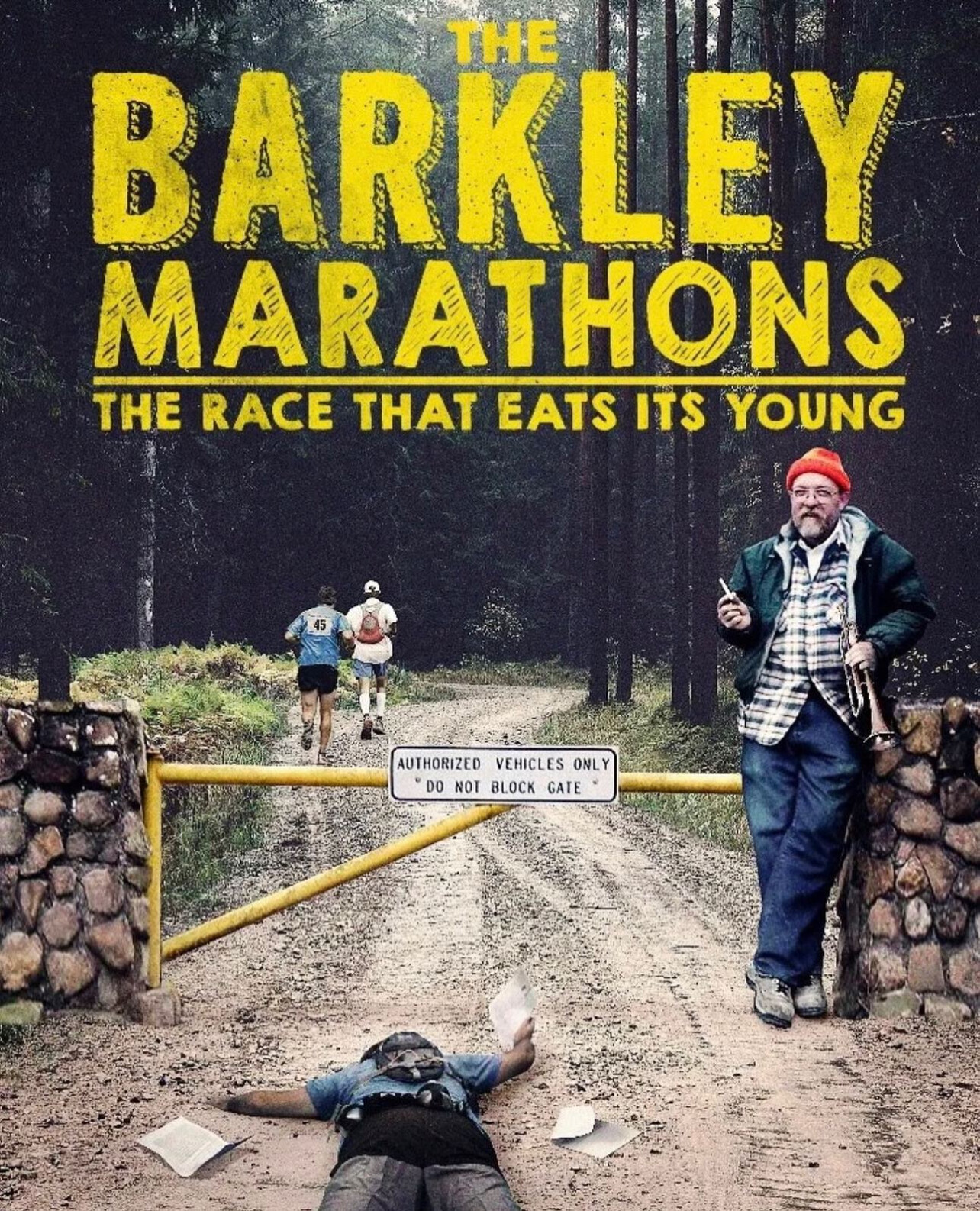
The trend continued in 2024 with an unprecedented five finishers
• John Kelly Secured his third completion reinforcing his status among elite ultrarunners
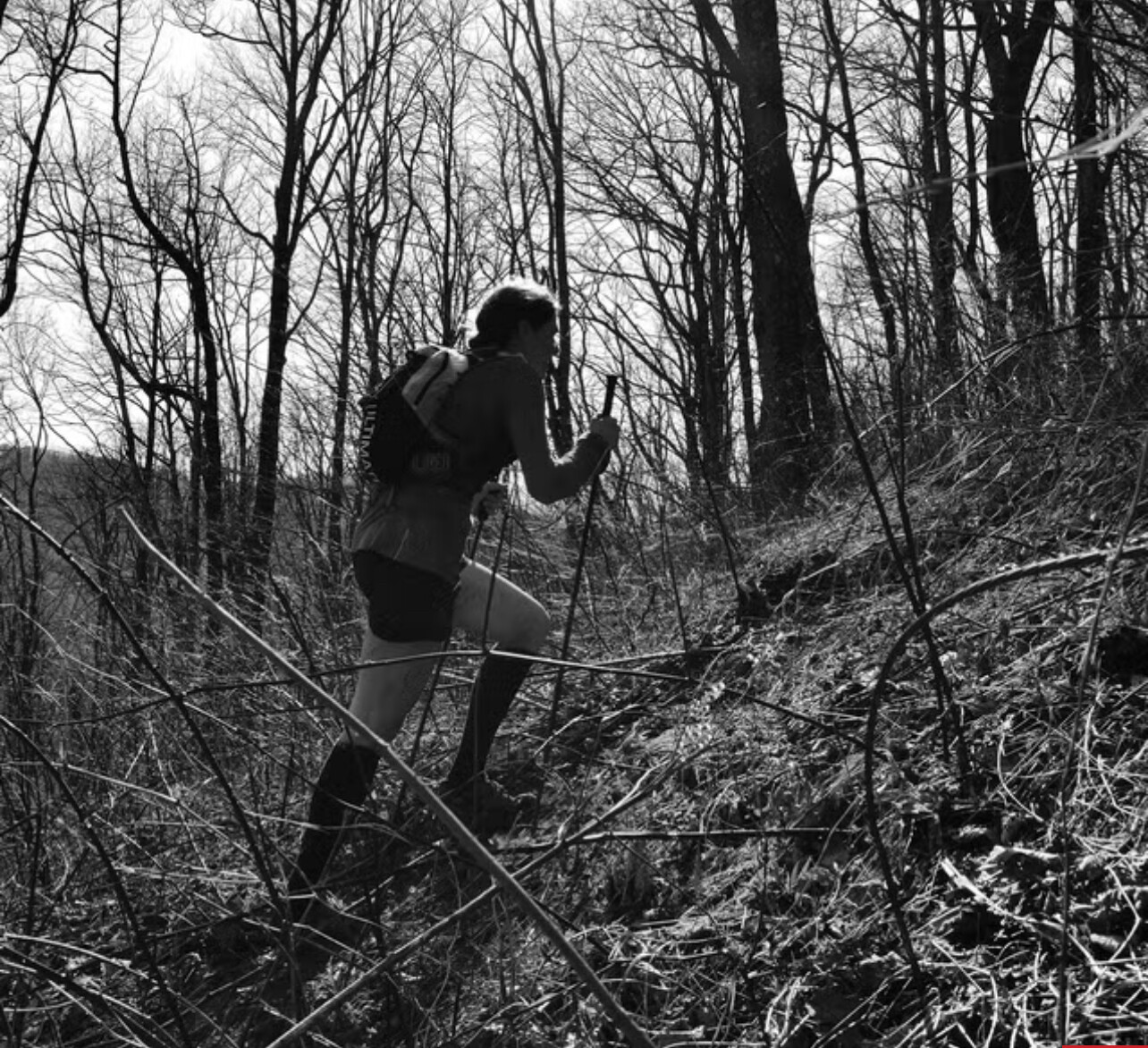
• Jared Campbell Achieved a remarkable fourth finish showcasing enduring resilience
• Ihor Verys A newcomer who defied expectations with a successful debut
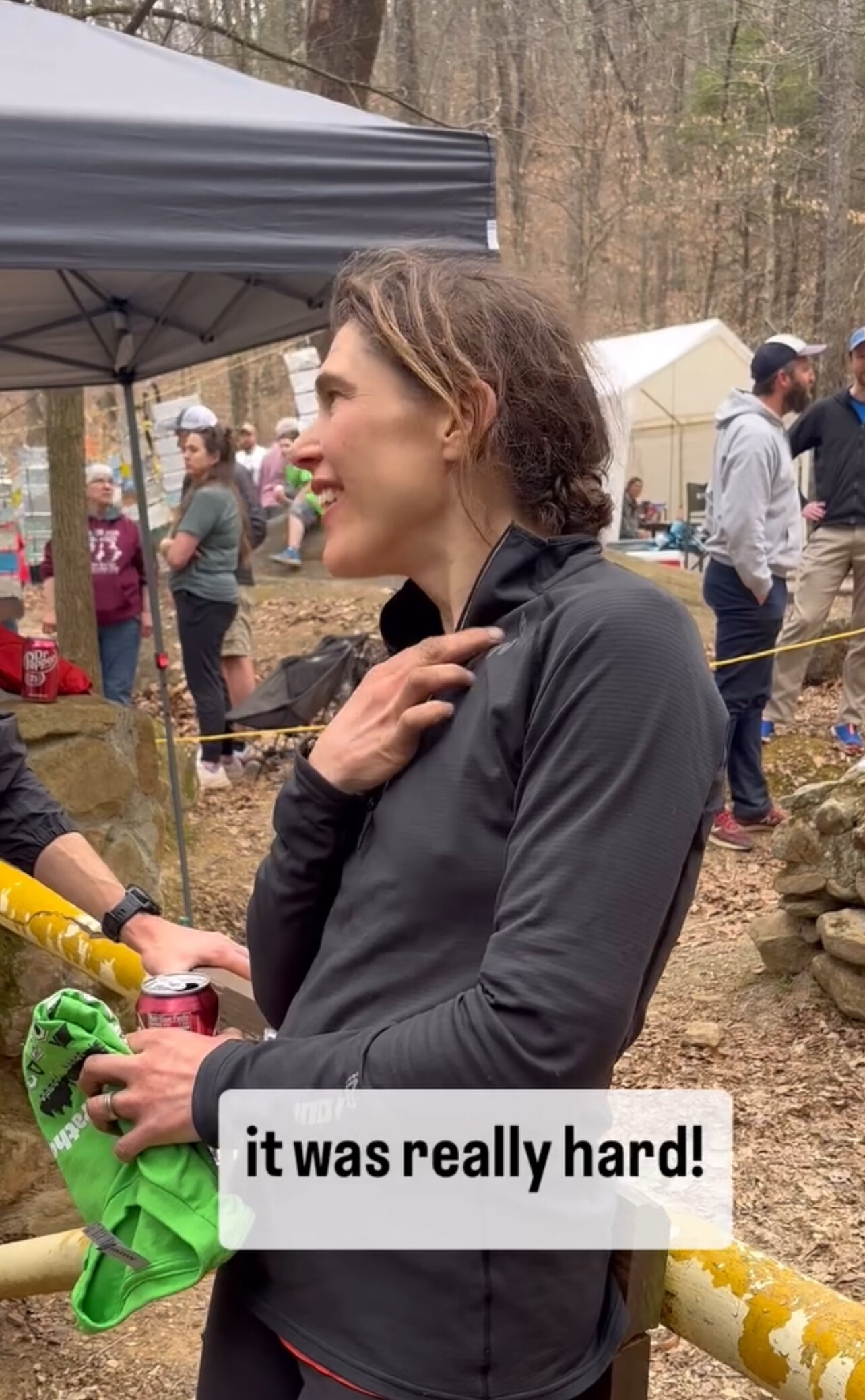
• Greig Hamilton Demonstrated exceptional endurance to join the finishers ranks
• Jasmin Paris Made history as the first woman to complete the Barkley Marathons finishing with just 99 seconds to spare
Paris’s groundbreaking achievement garnered international attention highlighting both her personal triumph and a potential shift in the race’s perceived difficulty
Anticipating the 2025 Edition
The exact date for the 2025 Barkley Marathons remains undisclosed adhering to the event’s tradition of secrecy Historically the race occurs between mid March and early April often aligning with April Fools Day Participants typically receive a 12 hour notice before the start signaled by the blowing of a conch shell by race director Gary Lazarus Lake Cantrell
In light of the recent increase in finishers Cantrell has hinted at making the 2025 course more challenging While specific changes have not been confirmed the goal is to restore the race’s notorious difficulty potentially reducing the number of successful completions
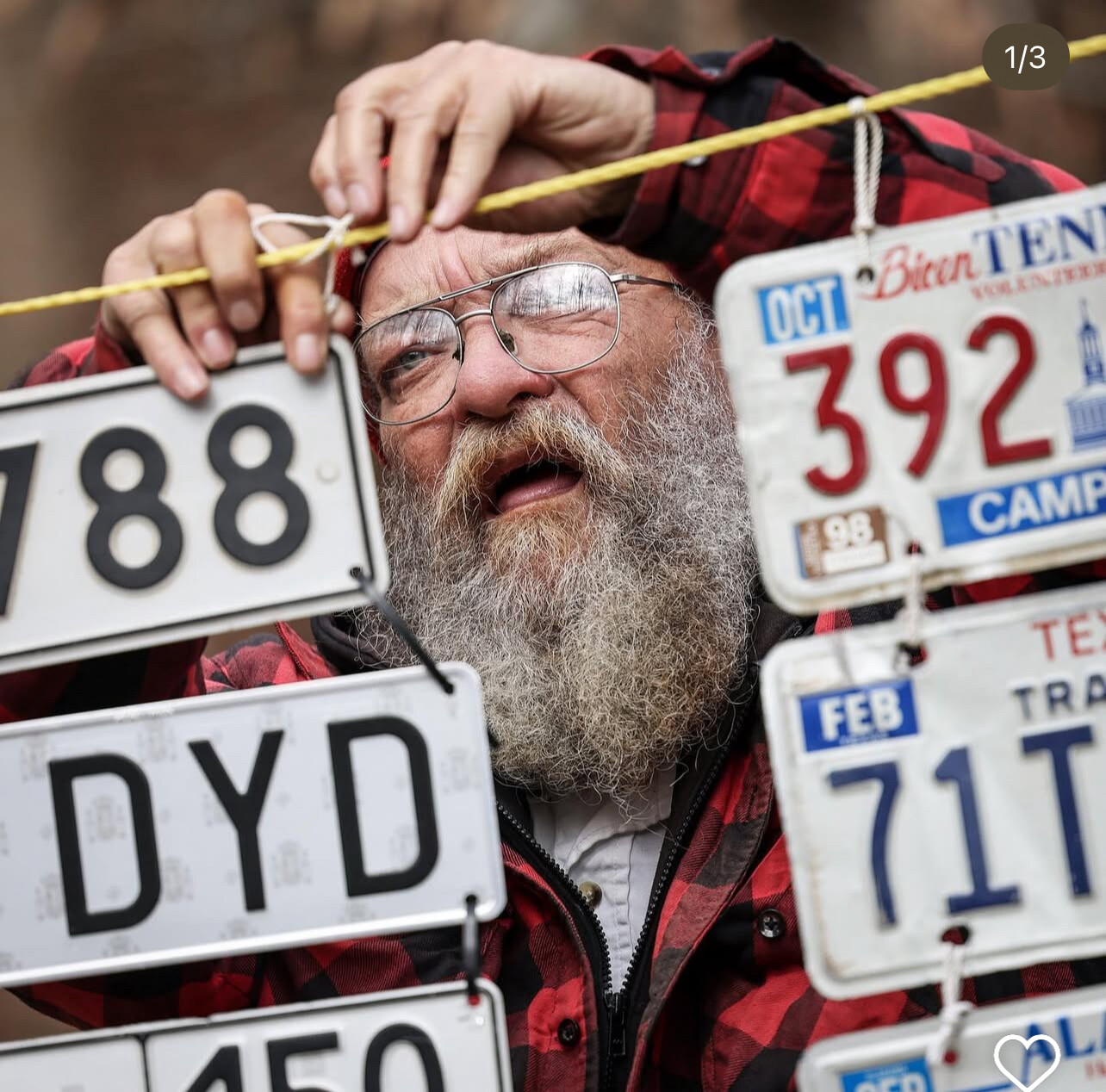
The Barkleys Enduring Challenge
Despite the recent surge in finishers the Barkley Marathons remains an extreme test of endurance navigation and mental fortitude Each year approximately 40 runners are selected to face the unpredictable course with the vast majority unable to complete it As the 2025 edition approaches the ultrarunning community eagerly awaits to see how the race will evolve and who if anyone will overcome its relentless challenges
by Boris Baron
Login to leave a comment
It is amazing that anyone can tackle such a course but they have including the first woman in 2024! - Bob Anderson 3/17 10:21 pm This event is insane and they are going to make the course even harder? - Bob Anderson 3/18 8:40 am |
Runners have gone wild in the current boom, increasingly hitting the trails and embracing ultra distances
that immerse us in nature, where mile splits matter far less than the experience of respondents to a 2024 Runner’s World survey have run an ultramarathon.
65%
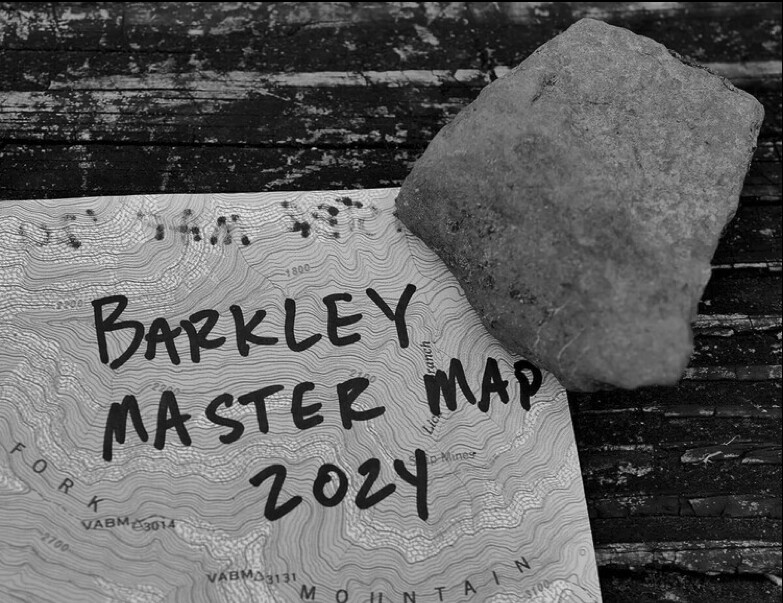
of those ran their first ultra in the past five years.
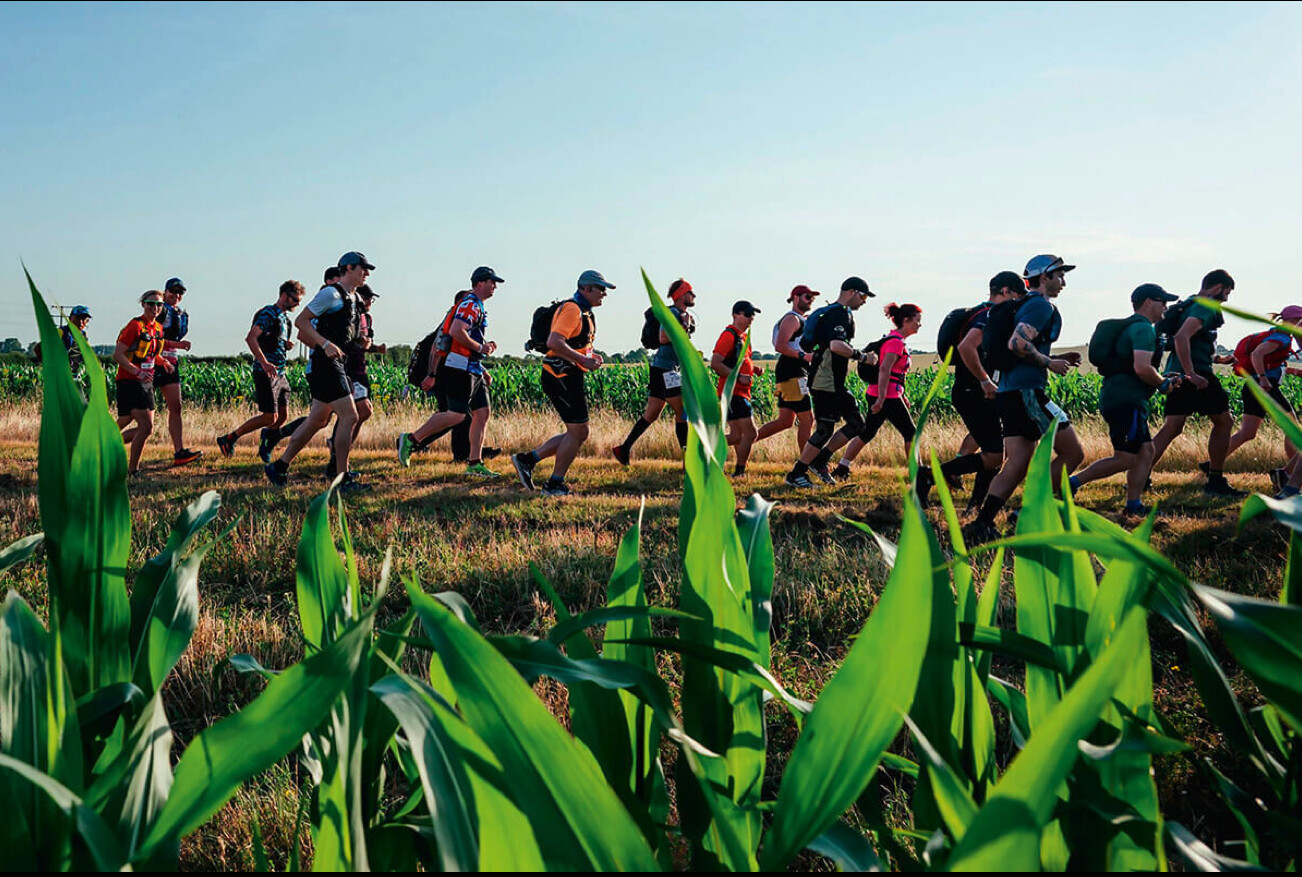
33%
said that they’re planning to run or considering running an ultra in the next two years.
‘It definitely feels more people are running trail and ultra, certainly post-Covid. The scene is really exciting with more races (and more accessible races), more brands, more sport-specific media, more younger, faster runners and more women – but they’re still a minority. Black Trail Runners and others are doing great work to make the scene more diverse. It’d be great to see more diversity, more accessibility and gender equality.’
Damian Hall, author and record-breaking ultrarunner236%
The year-on-year increase in internet searches for the Barkley Marathons from August 2023.
61%
of those surveyed by RW are interested or may be interested in following the big ultra races, such as the Barkley Marathons, Spine and Ultra-Trail du Mont-Blanc. 34%
This year’s increase in registrations for the Ultra-Trail du Mont-Blanc World Series Finals, compared with 2023. Demand is two to three times higher than max capacity.
43
Events in UTMB World Series in 2024, in Asia, Oceania, Europe, Africa and the Americas.
$7.3 billion
The value of the global trail running shoes market in 2022, according to a report by Allied Market Research. Up from $1.38bn in 2016, according to data from Grand View Research.
$12.4 billion
Predicted value of the global trail running shoes market in 2032, according to Allied Market Research.
30%
Year-on-year increase in numbers for the Montane Spine races. ‘The Montane Spine has expanded with more races within the events and more locations. We’ve had to organise other races to keep up with demand because the Montane Spine races continue to consistently sell out. We’re seeing people looking for ultramarathons to help with their mental health.’
Phil Hayday-Brown, founder of the Montane Spine Race
63%
The year-on-year increase in participants at Black To The Trails, with a waiting list operating for 2024’s sold-out event. 58% of runners were people of colour, with 14 of the 19 UK ethnic categories represented; 70% of participants were women.‘The Black Trail Runners community continues to grow daily with thousands of followers in the UK and globally, we’re a registered community and campaigning charity with the mission to increase the inclusion, participation and representation of people of Black ethnicity in trail running. If you want to see a more ethnically diverse sector, you can join us to help us do that – you don’t need to be of Black ethnicity to support the work that we do.’
Sabrina Pace-Humphreys, ultrarunner and co-founder of Black Trail Runners
5,252%
Growth in trail races with 500 or more participants in the 10 years leading up to 2022, according to RunRepeat. 11%
The year-on-year increase in runners on Strava completing at least one ultra, according to 2024 Strava data, growing at the same rate for men and women.
10% year-on-year increase in 50Ks.16% year-on-year increase in 50-milers. 14% year-on-year increase in 100Ks.
1,676% increase in ultra participation between 1996 and 2018, according to a recent report from RunRepeat, with numbers rising from just 34,401 to 611,098.
5,590 races
on the International Trail Runners Association calendar between January and August 2024: a 458% increase from the 1,002 races planned a decade ago.
49%
of respondents to the RW survey who run on trails started trail running within the past five years.
231%
Growth in trail running worldwide in the decade leading up to 2022, according to RunRepeat research. ‘All our events have been sell-outs the last couple of years. The Tolkien Trail Race sells out 500 entries in under an hour, and we’re noticing races fill up quicker and quicker each year. Trail racing has the least barriers to compete, with less emphasis on times than road racing, which can be intimidating. There’s an element of adventure, a test of endurance and the release of being in nature that’s evidently being enjoyed across ages and genders.’
Chris Holdsworth, race director for Pennine Trailsitting the trails and embracing ultra distances that immerse us in nature, where mile splits matter far less than the experience
Login to leave a comment
In His First 100-Miler, David Roche Demolishes the Legendary Leadville 100 Course Record
Matt Carpenter’s record stood for 19 years.
In his first 100-mile race of his career, trail runner and coach David Roche took down a legendary record in the sport. On Saturday, the 36-year-old broke Matt Carpenter’s storied Leadville 100 course record from 2005, winning in 15:26:34—over a 16-minute improvement of the record.
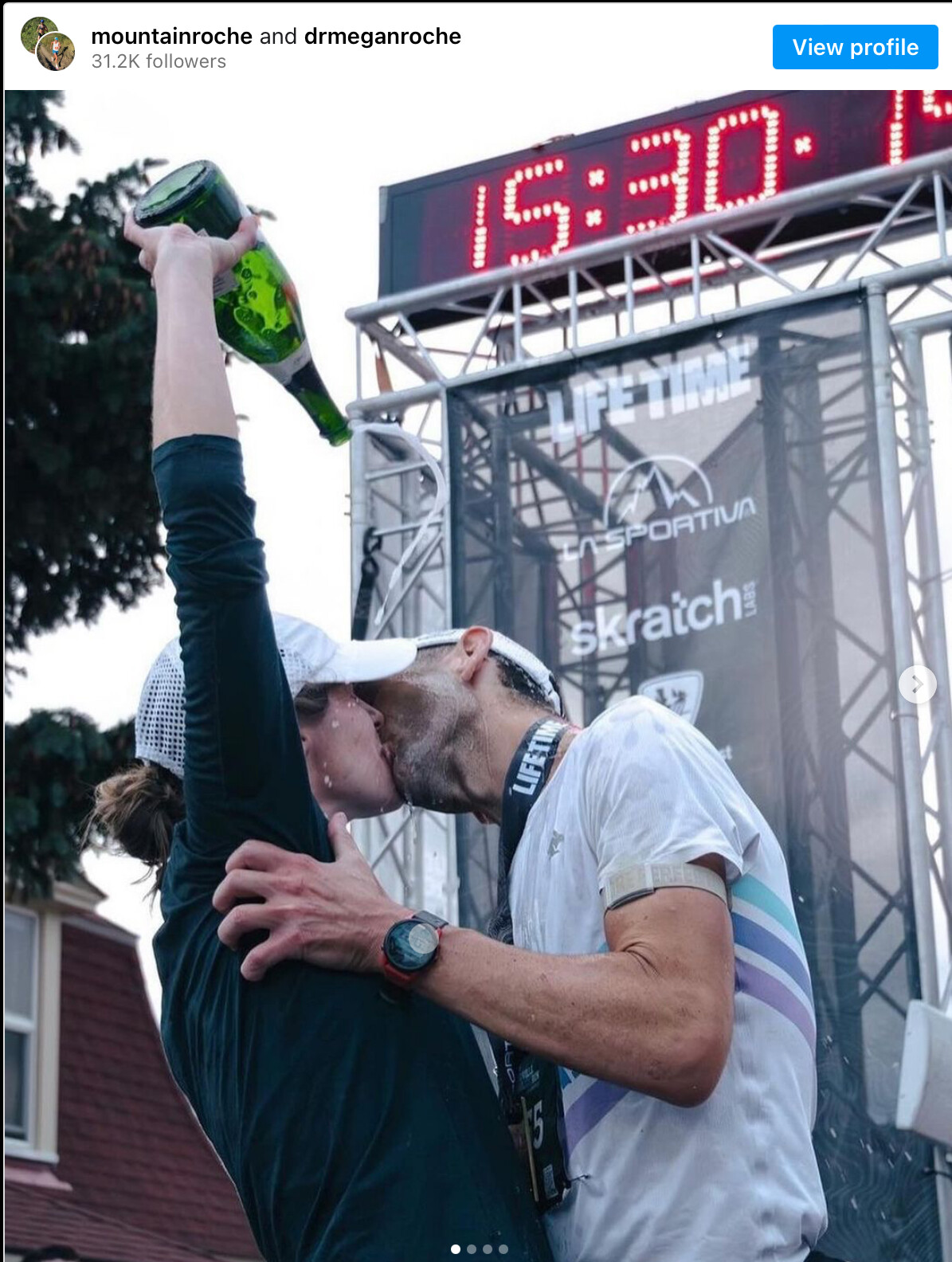
Roche won the men’s race by 30 minutes, on the dot. Adrian Macdonald was second in 15:56:34, and Ryan Montgomery placed third with a time of 16:09:40. In the women’s race Mary Denholm dominated, winning in 18:23:51. Zoë Rom took runner-up honors (21:27:41) while Julie Wright rounded out the podium in 21:48:57.
The Leadville course is notoriously difficult, primarily due to its situation at high altitude. The town of Leadville, Colorado—where the race starts and ends—sits at 10,119 feet above sea level. The “Race Across the Sky” covers more than 18,000 feet of vertical gain and at its highest point, runners reach an elevation of 12,600 feet. (For context, “high altitude” is generally considered to begin around 5,000 feet above sea level.)
Roche went out aggressively and built a sizable cushion on Carpenter’s record of 15:42:59. At the halfway mark, Roche was ahead of course-record pace by over 25 minutes, according to iRunFar. By the 87.4 mile split, the gap had decreased to 15 minutes, but it was enough of a buffer for Roche to maintain.
After the race, Roche posted on Instagram recapping the feat and noting some prerace nerves.
“I put a big scary goal out there early this year: chasing the historic 15:42 Leadville 100 course record by one of the GOATs, Matt Carpenter,” he wrote. “Approaching my first 100 miler, though, I’m not sure I truly believed. I kept joking about where I’d drop out and what my order would be at the Leadville Taco Bell.”
While Roche is an accomplished trail runner, he’s historically had the most success at shorter distances, like the half marathon and 50K. In 2014, he was named the 2014 USATF Sub-Ultra Trail Runner of the Year, and he’s represented Team USA internationally.
Roche, along with his wife, Megan, are well-known in the running community for their coaching business and podcast: Some Work, All Play (SWAP). According to its website, SWAP’s professional roster includes athletes like mountain running world champion Grayson Murphy, three-time Barkley Marathons finisher John Kelly, and steeplechaser/mountain runner Allie Ostrander.
Login to leave a comment
"It’s all about seeing what I can do" – 74 runners cross the finish line after tackling temperatures over 100F in Death Valley ultra
The race is frequently billed as the world's toughest foot race
What is the toughest race in the world? If you're a trail runner, the obscure Barkley Marathons probably comes to mind with its overgrown terrain and mind-boggling 54,200 feet of accumulated vert. But for those whose preferred mode of transport is road running shoes? There's nothing quite like the Badwater 135 which wrapped up yesterday morning in typically grueling conditions.
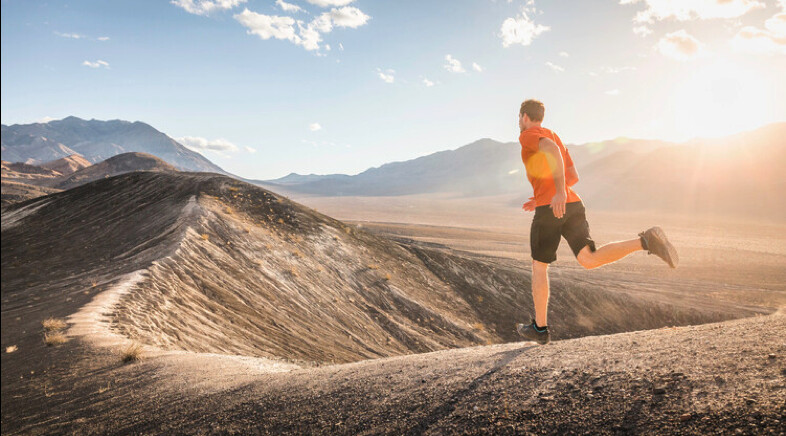
An impressive 74 runners out of 97 hopefuls who took off from the starting line in Death Valley National Park had crossed the finish line Wednesday morning after running through daytime temperatures as high as 120 degrees Fahrenheit (48.8C) and nighttime lows above 100F (37.7C). A recent heat wave sweeping the western states has been blamed for several deaths in National Parks including one in Death Valley on July 6 when a motorcyclist succumbed to heatstroke.
In addition to extreme heat, these hardy runners encountered higher humidity than normal as they set off during a light rainstorm. The course took them from Badwater Basin, the lowest point in North America, to the trailhead of Mount Whitney at 8,300 feet and over three mountain ranges with a total elevation gain of 14,600 feet.
“For me it’s all about seeing what I can do, you know, testing my own limits, seeing how well I can do these extreme things,” Alabam runner Jessica Jones tells the Associated Press.
In the end, it was Colorado runner Shaun Burke, 37, of Durango who took first place in the men’s division with a time of 23:29:00 while 52-year-old Line Caliskaner of Norway led the women’s division, at 27:36:27 and finished second overall. We're willing to bet these runners had done some serious heat training and had some well-rehearsed hydration strategies in place to survive this course.
Race organizers do not provide aid stations or support during the race, which has been an annual event since 1987. To date, there have been no fatalities at the Badwater 135.
Login to leave a comment
She’s the First Woman to Finish the Barkley Marathons—Ever. Here’s How She Did It.
Jasmin Paris did the “impossible” with the same pair of shoes she wore in her first two attempts. The Barkley Marathons is not a race in the traditional sense. It’s a war of attrition where participants, at times, work together more than they want to beat each other to the finish line. Completing five 20-ish mile laps under the 60-hour time limit is the goal—the order of the finishers is secondary.
The 2024 edition of the race, which started at 5:17 a.m. on March 20 and concluded 2.5 days later on March 22, was historic. Five runners completed the arduous race—the most in one year ever—including the first woman to finish, Jasmin Paris, a 40-year-old British mother of two.
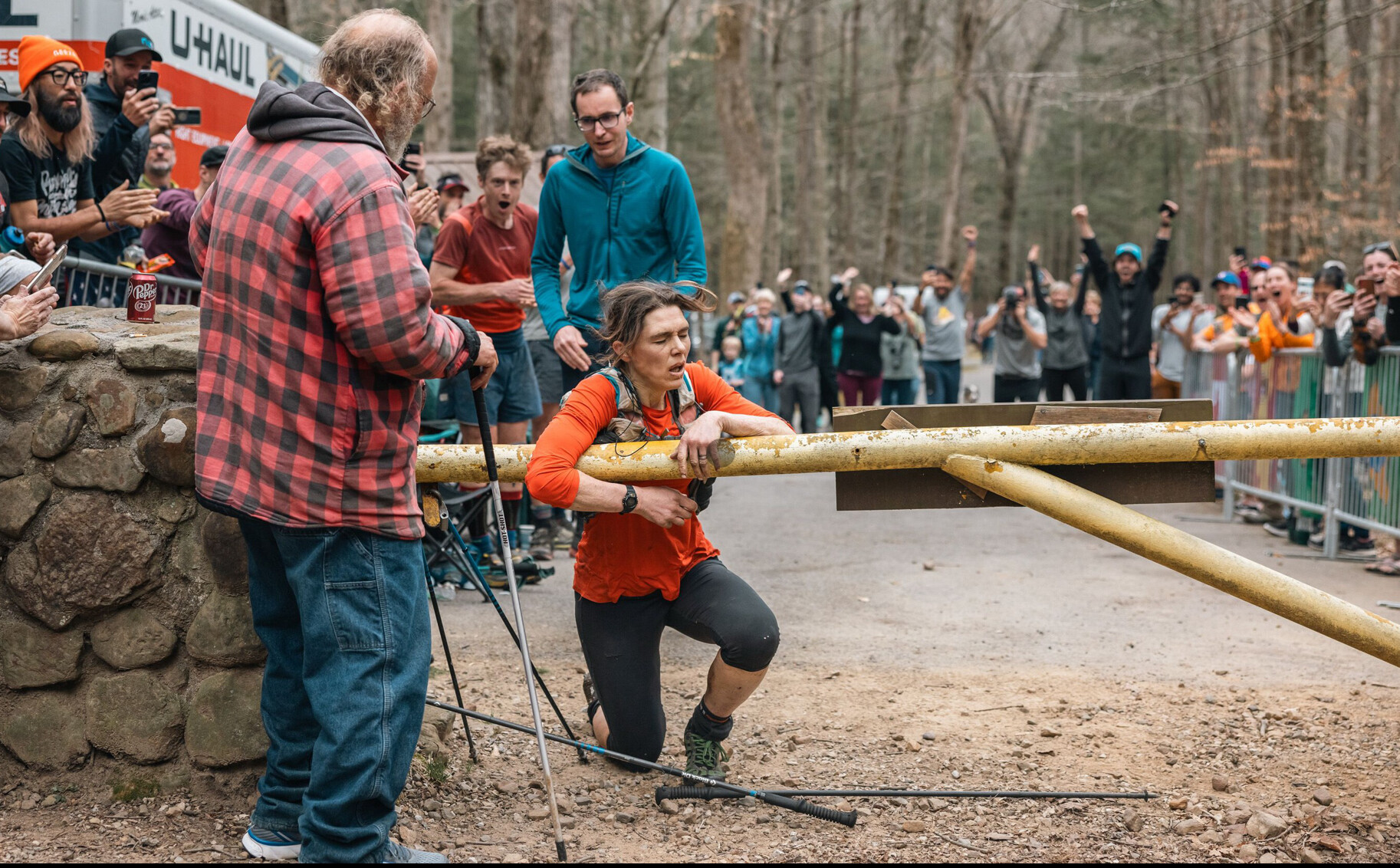
Skeptics, including the race’s controversial organizer, Lazarus Lake, have stated in years past that it was impossible for a woman to complete Barkley. But Paris broke the glass ceiling, finishing with less than 2 minutes to spare, in 59:58:21. (At this year’s race, only four of the 40 participants were women.)
“I’ve always enjoyed proving people wrong, especially if it’s something to do with being told that a woman can’t do it,” Paris said after the race. “It gives me great satisfaction.”
Runner’s World caught up with Paris, fresh off a well-deserved vacation with her family, to talk about how she prepared for the unpredictable ultramarathon.
Hills pay the bills
Barkley is a race where experience matters. It’s uncommon for someone in their first year to finish. But after becoming the first woman to complete three loops in 2022 and again in 2023, Paris was hungry to come back.
“The first time, I was intrigued by this idea of something that was on the very cusp of what was possible,” she said. “And clearly, the likelihood is that you would fail. But there’s still this glimmer of a chance that you might not fail.”
Barkley is difficult to plan for because of secrecy. It’s invitation-only, and participants are quietly told that they can race an undisclosed amount of time before the event. The starting date changes year-to-year, but it’s generally sometime in March or early April.
Paris had an inkling that she’d be given a chance to become the first woman to finish, so she planned her winter training on the assumption that she’d line up. Metatarsal pain in November and December forced her to cross-train on the elliptical or bike for six weeks, but by Christmas, she was back running.
Paris then hunkered down on hill work. At Barkley, a race with an estimated 65,000 feet of elevation gain, it’s essential to practice climbing—something that Paris doesn’t shy away from anyway. For years, she honed her skills at fell races—a niche sport where runners race off-road over hilly terrain—and this Barkley cycle, she added even more elevation than in years past.
As a cornerstone of her training, Paris added circuits of hills into her long runs around the foothills near her home in southern Scotland. She would also supplement her running (and hiking) with sessions on the stair climber, where she’d knock out 3,200 feet of climbing in 40-minute intervals.
About a month out from Barkley, Paris completed her toughest week of training yet: 90 miles of running with an extra 20 miles of hiking. She estimates she traversed around 36,000 to 39,000 feet of elevation that week. (Mt. Everest is 29,000 feet tall, for comparison.)
Her most Barkley-like training run was a 22-miler over the winter. Usually, Paris will run before she drops her kids off at the pool on Saturday mornings, but she planned a long workout, so she went to bed at 8 p.m. the night before and started her run at 1 a.m. The session, in driving rain that turned to snow, simulated the testy conditions she might experience at Barkley on a bad day. Since a large portion of Barkley isn’t on marked trails, Paris logged much of the eight hours of hills off-trail, totaling over 15,400 feet of net gain.
"That was really good training for Barkley,” she said. Strength training is key
The biggest change that Paris made in recent years was adding more strength training into her routine.
As a girl growing up in northern England, Paris was an avid horseback rider, competing in competitions as well as riding for fun at the local stables. But when she was 17, she partially tore the ACL in her left knee after falling off her horse and landing on a fence—then fully tore it chasing after a train. Paris never got reconstructive surgery, so to this day, the ligament is not connected in her knee.
Trail running can test your balance, especially on technical courses with hairpin turns, so Paris has focused on strength training in recent years to stabilize her knee. Now, the joint is as strong as ever, she said, and weights have become a fixture in her training routine.
Paris takes a 30-minute online strength class three times a week, where a virtual coach monitors her form and prescribes movements like lunges, single-leg squats, bridges, and sit-ups. But Paris said that advancing past bodyweight exercises to weights has especially leveled-up her strength.
“I definitely felt stronger going into this year,” she said. “Not just my legs, but my core and my upper body as well.”
Don’t stress over the little things
Part of what makes Barkley so tough to complete is its unpredictability. The spring weather in Tennessee can be bitterly cold or sweltering hot, but participants don’t know what to expect until days before, since the start time is kept a secret.
Paris, in turn, took a laissez-faire attitude toward her race preparation.
The 60-hour time limit at Barkley leaves little room for sleep—Paris told The Guardian she slept about 3 minutes during the race—but she doesn’t believe in simulating tiredness before the event. In fact, quite the opposite.
In the lead-up to Barkley, Paris focused on starting the race feeling refreshed. And although she knew exhaustion was inevitable, she said that coming over from the U.K. was actually an advantage. Because her hometown is five hours ahead of the time zone in eastern Tennessee, Paris said the middle of the night—when sleepiness would naturally kick in for U.S.-based athletes—felt like the morning to her since she was still used to U.K. time.
Nutrition is also difficult to dial in, or anticipate, Paris said, because she usually doesn’t have trouble eating until the 10 or 12-hour mark of an ultramarathon. And that’s if she’s moving fast. She rarely trains that long, if at all, so it’s difficult to simulate hunger.
“It’s hard to repeat in training that sort of dry feeling [where you] can’t swallow,” Paris said. At Barkley, she turned to moist foods, like frittatas, pizza (without the crust), and hot cross buns with raisins.
Paris packed for the race intently, although she admits she forgot some things, like electrolytes. An ardent environmentalist and co-founder of the The Green Runners, Paris prefers to use existing gear, or borrow from others, rather than buy new products—even if hers is worn.
Days before Barkley, Paris’s mother helped sew up the holes in her pants. Paris even wore the same pair of shoes that she used during her previous two attempts at Barkley, Inov-8 Mudclaw G 260s, after repairing some holes in the uppers.
“You don’t really need the newest stuff; that’s not really what makes you able to run well or what keeps you going,” Paris said. “It’s more about what’s in your head and what training you’ve done.”
Login to leave a comment
Should trail running be an Olympic sport?
Did you know that off-road running was part of three historic summer Olympic Games, including the 1924 Olympics in Paris? One hundred years on, runners from four different clubs in Britain have come together to launch a campaign to bring trail running (as we now call it) back to the Olympics. The next Games to include new sports is Brisbane 2032, and the group of passionate trail runners feel strongly that trail running deserves a spot.
“At Paris 2024, four new sports are being added that include breakdancing, surfing, skateboarding and sport climbing,” runner Jimi Harrison said in an interview with British media outlet The Star. “We feel that new Olympic sports should reflect the trends and popularity of the current day and believe the time has come for trail running to be adopted at future Olympics.”
To raise awareness for the cause, Harrison and the group ran a relay of more than 455 km, from London to Paris. Their feat ended on Sunday in the French capital.
Backed by running shoe brand Merrell, the group are calling on Olympic decision-makers. They have written an open letter to representatives of the International Olympic Committee (IOC) and International Trail Running Association (ITRA) to support their cause. (Merrell recently signed Olympian Alexi Pappas to its athlete roster. Pappas, who raced the 10,000m at Rio in 2016, setting a national record for Greece, ran two big trail ultras in 2023: the Black Canyon 100K and the Leadville 100.)
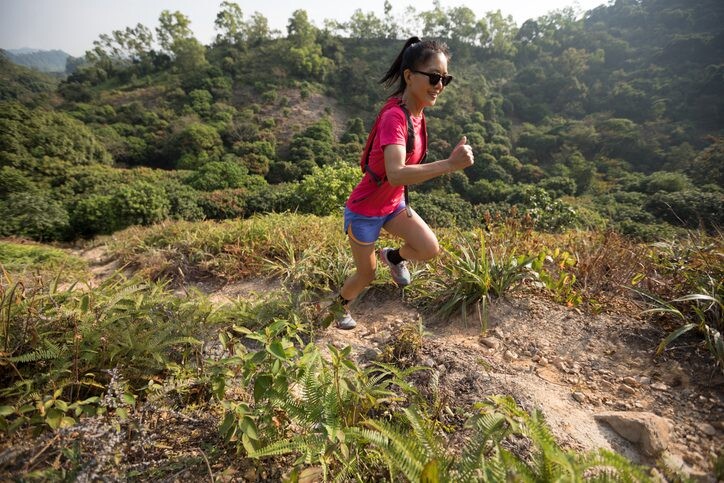
Some would argue that cross-country running is a more obvious fit for inclusion in the Olympics. With shorter, looped, spectator-friendly courses, cross-country could be more attractive to broadcasters, thus generating more interest. And cross-country usually features track runners. There is less crossover between track and trail running, though it’s not unheard of for track runners to transition to trails, as we have seen.
This is not the first attempt to bring trail running to the Olympics. In 2021, a trail running company from Spain launched its own campaign to bring it to the 2028 Olympics in Los Angeles. (They were not successful.)
Trail running has increased significantly in popularity in recent years, thanks partly to events like the Barkley Marathons, UTMB (Ultra-Trail du Mont-Blanc) and the Golden Trail Series, which make international news headlines.
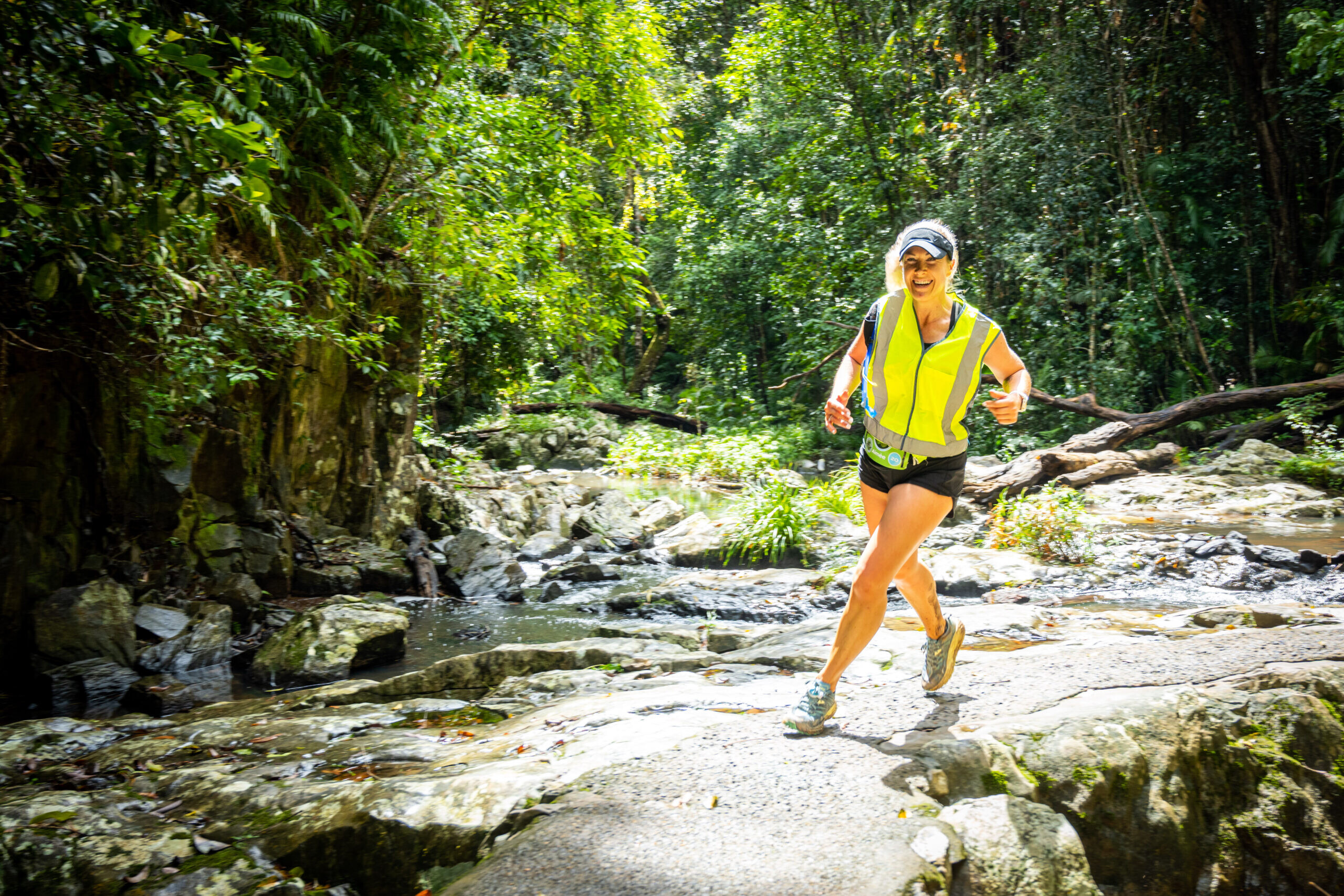
by Claire Haines
Login to leave a comment
Why Jasmin Paris is about to become a household name
British ultrarunner Jasmin Paris made history on Thursday when she became the first woman runner to finish the Barkley Marathons, charging to the finish with only 99 seconds to spare before the 60-hour cutoff. But this is not the first time Paris, who runs free of sponsorships and is an environmental advocate, has achieved something remarkable in the trail running world. Here’s what we know about the 40-year-old ultra-trail champion.
Paris is a veterinarian and research scientist from Midlothian, Scotland. In 2019, she jumped to world attention on the ultra scene when she smashed the overall (men’s) course record–by 12 hours–at Britain’s 268-mile Montane Spine Race, finishing in 83 hours, 12 minutes, 23 seconds–while also pumping breastmilk for her infant daughter.
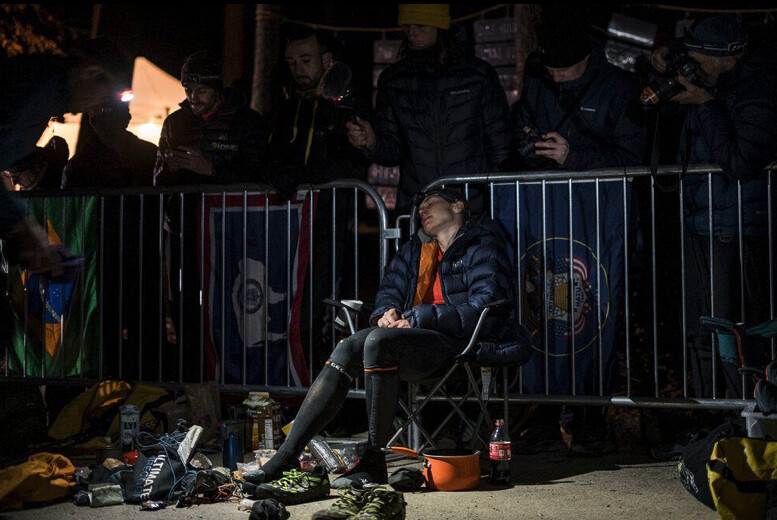
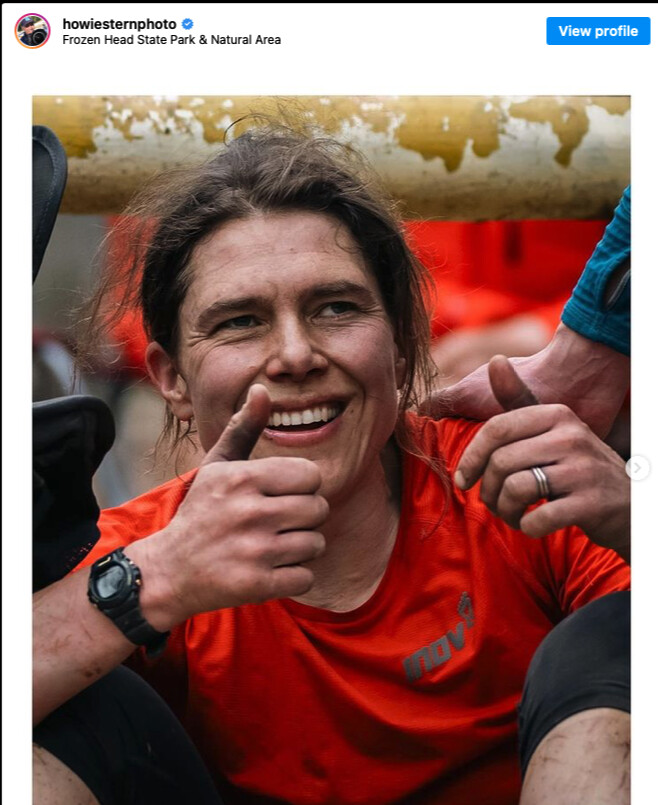
“When it was really difficult I made myself think about my daughter and imagined the different things she does—that kind of kept me distracted and entertained,” she told British Vogue after her Spine Race success.“Some of the time you don’t really think about anything. It’s mindful, you’re just putting one foot in front of the other.”
The Barkley Marathons is five loops of a 20+ mile course in Frozen Head State Park, near Wartburg, Tenn. (distances vary; the race is thought to be well over 100 miles) featuring thousands of metres of elevation gain, with a time limit of 60 hours. It was first run in 1986, and was inspired by the prison escape of James Earl Ray, who was serving time at Brushy Mountain penitentiary for the murder of Martin Luther King, Jr. (He was captured soon after.) Gary Cantrell (a.k.a. Lazarus Lake, or “Laz” to his friends) dreamed up a 100-miler in the vicinity of the prison, which is now abandoned and is a feature of the course. GPS watches are not allowed; each runner is issued a cheap watch set to “Barkley time,” i.e., the 60-hour limit. Runners must collect pages corresponding to their bib number from 13 books hidden on the course (they receive a new bib for each loop); missing pages mean disqualification. There is water available on the course, but no aid stations. Runners may only receive aid from their crew between loops, in camp, where they are on the clock.
Paris was always passionate about the outdoors, but only took up running in university. She began winning local and national fell-running and ultrarunning events, including the Scottish Hill Running Championships, British Fell Running Championships and then the 2016 Extreme Skyrunner World Series. Paris ran a hill race 10 days before giving birth to her daughter.
While Paris says it has been challenging to juggle training as a parent to a young child, she adds that it’s important to maintain a balanced life.”It doesn’t make you a worse parent if you have something else that is just yours; in fact I think that it’s probably inspirational to your child, she told British Vogue.”I hope my daughter will be inspired when she grows up to believe that she can do anything.”
Barkley creator Laz Lake asked Paris to run the race after her victory at the Spine Race—he thought Paris might be the only woman who could possibly finish. In 2o22, she completed three loops (which is dubbed a “fun run”); in 2023, she was eliminated after four loops, falling short of the 48-hour cutoff time to begin the fifth loop. Paris was only the second woman ever to attempt a fourth loop; the first was Sue Johnston of Vermont, in 2001.
Fellow British runner and two-time Barkley Marathons competitor, Damian Hall, made it to loop five for the second year in a row, but was unable to complete the race. He commented on Paris’s remarkable finish to his sponsor, Inov8: “It was still an amazing experience, and incredible to see Jasmin finish and make history. That wiped away most of my personal disappointment. It was the greatest sporting achievement I’ve seen in the flesh.”
“The final minutes were so intense, after all that effort it came down to a sprint uphill, with every fiber of my body screaming at me to stop,” Paris told The New York Times post-race.“I didn’t even know if I’d made it when I touched the gate. I just gave it everything to get there and then collapsed, gasping for air.”
Renowned photographer Howie Stern is a regular at the Barkley Marathons, and captured Jasmin throughout the race.”Thank you Jasmin for putting your heart and soul into the dark world that takes place in a little park in Tennessee, which has captivated and inspired women and men the world over,” he said on Instagram.
by Running Magazine
Login to leave a comment
Want to Win a Race With No End? Work on Your Poker Face.
Harvey Lewis, who recently ran 450 miles to win Big’s Backyard Ultra, discusses the mental trickery that goes on during ultrarunning’s hardest race
Not many people can run 400 consecutive miles and still stand upright—fewer can complete this athletic feat and continue running. I think there’s just one person alive who could do it and then unleash a sprint that would make Usain Bolt proud. That’s Harvey Lewis, the newly crowned world champion for the niche sport of Backyard Ultrarunning.

Lewis, 47, won his title at the October 21 Big Dog’s Backyard Ultra in Tennessee—the race known simply as “Big’s” in ultrarunning parlance—by running 450 miles over the course of 108 hours. Lewis is also the star of the hilarious video below (credit to UltraRunning.com) which made the rounds on social media as the race was still going on. Give it a watch.
Some quick context: the clip was captured a the race’s 400-mile mark (yes, 400!), and the eight runners in it have been jogging around a 4.1667-mile loop every hour for four consecutive days. When the starting bell sounds, seven of the eight shuffle onto the course looking like extras from The Walking Dead. And then there’s Lewis, who cracks a grin, kicks up his heels, and Usain Bolts away. He looks like he’s having a blast.
As it turns out, he was. “I’m really fired up in that video,” Lewis recently told me. “There are times during races when I have to hype myself up, but not there. I am already so hyped up, just mentally and physically. That’s what you have to do to keep yourself in the game.”
The game that Lewis is referring to is the strategy—nay, the psychological warfare—that goes on during one of these grueling races. At Big’s and other backyard ultras, participants run around a 4.167-mile loop every hour, hour after hour, for days on end (the distance means they complete 100 miles every day). They start and finish in the same location, and can rest or eat or use the toilet in the time between each lap, which is never long enough for them to sleep for more than a minute or two. As the event goes on, participants drop out due to sleep deprivation or blisters or diarrhea or because their brains simply cannot fathom any more running. The winner is the final person left standing.
This twisted format was dreamed up by Gary Cantrell—known as “Lazarus Lake”—the designer of the infamous Barkley Marathons. Backyard ultras foster some unorthodox head games amongst the handful of elite runners. At some point, they become hardcore body-language analysts, eyeing each for signs of injury or exhaustion. Simultaneously, they mask their own ailments in an attempt to convince their peers that they are feeling just fine and dandy—even thought every one of their muscles throbs with pain.
“There’s a lot of poker faces out there,” Lewis says “If one of the competitors starts to show weakness, it just adds thunder to everyone else. Part of the game is showing that you’re strong.”
There are plenty of telltale signs that a runner is nearing the end: limping, wincing, sitting down. Some athletes, after running hundreds of miles, begin to list to one side like a torpedoed warship. Oftentimes, runners nearing the limit will finish each lap just a few seconds before the next one is to begin—the countdown is marked by three whistles and then a bell.
There are also all manners of tricks for covering up the pain. Lewis said that his toughest competitor at Big’s, Ihor Verys of Ukraine, maintained a stoic and expressionless demeanor—think Ivan Drago from Rocky IV—right until the moment he dropped out at mile 445. Dutch ultrarunner Merijn Geerts, who dropped at mile 417, told the Bad Boy Running podcast that he will purposely start a race looking disheveled so that competitors cannot notice a meaningful change in his appearance as the event goes on. “If someone looks very fresh from the beginning, and suddenly he doesn’t look fresh anymore, you know there is a problem,” Geerts said. “If you don’t look very [fresh] all the time, then your opponent doesn’t know you are suffering.”
Fibbing is another formidable tactic. As Big’s stretched past the two-day mark, Lewis heard some competitors respond truthfully to a familiar question that runners ask one another on the trail: how are you feeling? “I was surprised to hear people saying ‘I was hallucinating’ or ‘I have a blister on my foot,‘” Lewis said. “Loose lips sink ships.” Lewis, who teaches U.S. government at a high school in Cinncinatti, Ohio, told me that he’d never divulge his aches and pains to a competitor.
“I don’t know why anyone would ask me how I feel during a race,” he says. “I could have blood pouring out of my head and I’d still say, ‘I feel amazing!’”
And then there’s the whole sprinting thing. Running fast is absolutely a psychological flex—a way to show the competition that you are supremely confident and also feeling fantastic. Think of it as the backyard ultra version of Steph Curry’s highly-intimidating pregame warmup. Lewis’s mad dashes were an integral weapon in his psychological war chest, he said, and he sprinted out of the gate again and again during Big’s.
“It’s like here we are at mile 400 and I can just go man,” Lewis says.
Here he is starting mile 300.
Here he goes at mile 425, looking considerably less spry.
But the sprinting tactic can also backfire, because a sprint puts more strain on leg muscles than a steady jog. In June, Lewis participated in Australia’s Dead Cow Gulley Backyard Ultra, and after two days of racing he employed the sprinting tactic. But the maneuver began to wear his body down, and he dropped out at mile 375 with two competitors remaining.
“I did it way too much and got carried away feeling invincible and not reigning myself in,” Lewis admits. “Because the counter to it is to just run your own race.”
At Big’s, Lewis only sprinted at the start—he actually didn’t complete the loops fastest, and during many laps he finished several minutes behind Bartosz Fudali of Poland, who exited the race after completing 429 miles. For all of the psychological gamesmanship that goes on in a backyard ultra, Lewis said there’s really no way to overcome a runner who has a steady rhythm, an expert nutrition plan, and the steely attitude to keep going—no matter what. Lewis said his winning tactic was more about mindset than about mind games.
“I don’t care what distance anyone else goes—I’m just going to commit to going further,” he says.
by Outside Online
Login to leave a comment
The 2023 Barkley Marathons Has Three Finishers
This week on the rough and rugged terrain of Tennessee's Frozen Head State Park, legends were born.
Amid cold, wet weather and little sleep, John Kelly, Aurelian Sanchez, Karel Sabbe, and Damian Hall put on quite a show this week at the dastardly and often cruel ultra-distance quagmire known as the Barkley Marathons in Wartburg, Tennessee. So did Jasmine Paris, even though she didn't last quite as long as her male counterparts in what was one the best and most exciting editions of this small, quirky, and extremely grueling race yet.
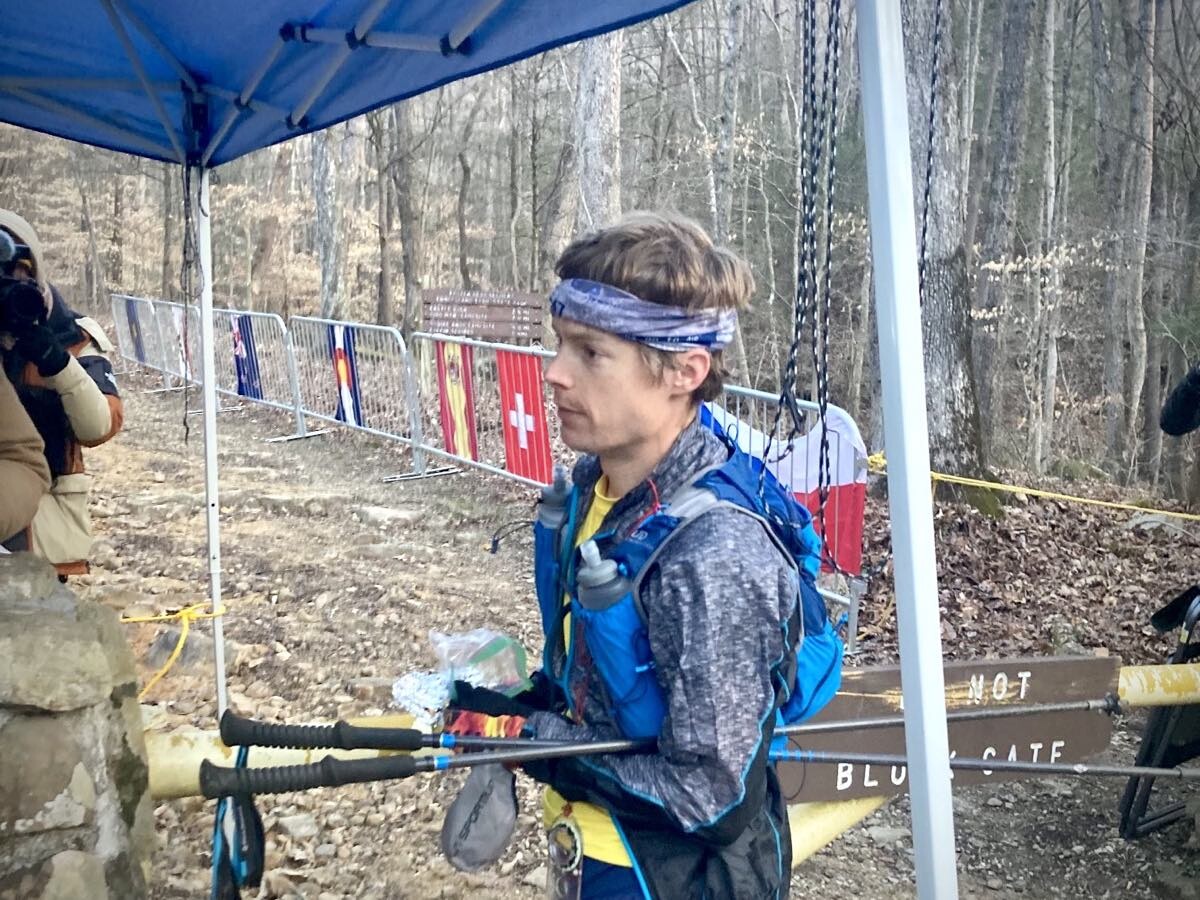
This year's race was the first time that four runners began the rarely-experienced fifth loop and only the second time three runners completed the course, which is roughly 130 miles in length and includes about 63,000 feet of elevation gain, within the 60-hour time cutoff.
Aurelian Sanchez was the first to finish the race, but not without encountering a bit of a challenge near the end after a day hiker removed one of the books, believing the race was over. The 32-year-old Frenchman thought he was doomed and returned to the yellow gate with the pages he had, only to find the book waiting for him at the finish. He tore out his page and got credit for completing the course in 58 hours, 23 minutes, and 12 seconds.
Next was John Kelly, the 38-year-old local runner from nearby Boone, North Carolina, who became a two-time finisher and only the third person to record more than one successful finish. He wound up back at the infamous yellow gate of the start/finish area about 19 minutes after Sanchez, in 58:42:23. He had been the most recent Barkley finisher back in 2017, which seems like a lifetime ago, given how COVID-19 seemed to change the scope of time.
"Call me the Benjamin button of Barkley," Kelly tweeted at one point on the last day of the race. "I'm reverse aging on course."
After that, a suspenseful hour went by in anticipation of Karl Sabbe. Finally, with less than seven minutes to spare, the 32-year-old Belgian dentist, who holds the Fastest Known Time on the Appalachian Trail, finally appeared with all the necessary pages to become the third and final finisher of the 2023 event in 59:53:33.
Hall, a Barkley "virgin" (as race director Gary Cantrell refers to participants) from the UK, started the fifth loop with 10 minutes to spare-marking the first time in the race's 36-year history that four runners were out on the final lap-but returned after 53 hours of sleep-deprived running with no pages, tapping out and calling it quits after getting lost for a long period of time.
Earlier in the event, the UK fell running champion Jasmin Paris became the second woman ever to start the fourth lap of the five-lap event in the event's history. She gave it a good go at becoming the first woman finisher, but ultimately timed out on the fourth loop when she returned with nine pages collected. She didn't finish, but she did set a new women's record after becoming only the second woman to start the fourth loop along with Sue Johnston's strong effort in 2001.
The event began on Tuesday, March 14, when about 40 intrepid runners headed out on the course to see if they could join the very exclusive finisher's club. Since the race's inception in 1986, only 18 of the roughly 1,000 runners who have attempted the Barkley Marathons have completed it.
Although Utah's Jared Campbell has finished it three times (2012, 2014, 2016), the only other runner with more than one finish, aside from Kelly, is Colorado's Brett Maune (2011, 2012).
Boulder-based Brian Metzler has run more than 75,000 miles in his life, competing in every distance from 50 meters to 100 miles, running the Rim-to-Rim-to-Rim run across the Grand Canyon and back several times, racing pack burros on many occasions and going up Colorado's Longs Peak 20 times. In 2018, he ran the Great Wall of China, completed the Leadman series and ran a 100K in South Korea. He is the founding editor of Trail Runner and the author of "Kicksology: The Hype, Science, Culture and Cool of Running Shoes."
by Trail Runner Magazine
Login to leave a comment
Top six reasons ultra runners are a breed apart, Ultrarunners' brains might be wired differently (how else to explain it?)
Ultra runners are pretty unique athletes. How many people are willing to run 50K, 100K, 100 miles or more? The answer is not a lot, which is why ultra running is so different from other sports. There are things that ultra runners do that no other athletes (not even short-distance runners) understand. Don’t believe us? Take a look at these few differences between ultra running and other sports.
Eating contests
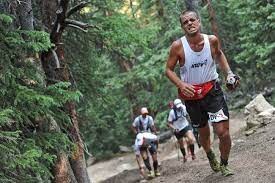
To run an ultra marathon, you have to train well, but when race day arrives, your success will come down to how much you can eat–because after you’ve been running for several hours, your digestive system might be a little out of whack (and what goes in has been known to come back out). If you can keep enough nutrition down to keep your energy levels high for the entire race, you’ll do well.
To do that, ultra runners will eat some pretty random things on the race course (flat Coke and scalloped potatoes, anyone?), besides your classic energy gels and electrolyte drinks. Athletes in other sports are very careful about what they eat or drink before and during competitions, but for ultra runners, it seems like pretty much anything will work as fuel to get them to the finish line.
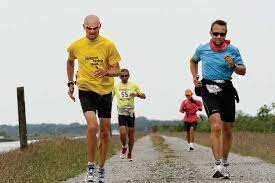
Weird sleeping habits
A basketball player wouldn’t take a court side nap, just like a hockey player would never go to sleep on the bench or in the penalty box, but that’s not the case with ultra runners. If you’re in a race that will take you more than a day to complete, you’re going to get pretty exhausted on the course, and that might mean you’ll need to take a nap break at some point–even if it means lying down by the side of the trail, or in a ditch, for a few minutes of shut-eye. (It’s called a dirt nap, for the uninitiated.) Ultra runners get pretty good at sleeping anywhere and for however long, so they can re-energize and get back to racing.
No rush
In most sports, you’re encouraged to go as fast as possible, because your speed will be rewarded with a touchdown, goal, basket or some other form of points. In ultra running, athletes aim to complete each race in good time, but there’s no rush. In fact, going too fast will only hurt your result and jeopardize your chances of finishing the race at all. Ultra runners quickly learn how to find a comfortable pace that they can hold for hours upon hours (or even days) of running and power-hiking.
No end
While most ultra marathons have set distances, some events are open-ended and go as long as it takes until only one runner is left standing. These are known as backyard ultras, and they task competitors with running a 6.71-km (4.17-mile) lap every hour for as many hours as they can. One by one, athletes will drop out of the race, either because they can’t go any longer or because they don’t complete a lap before the hour is up. Can you think of any other sport with this last-runner-standing, no-end-in-sight format? Didn’t think so.
No schedule
The Barkley Marathons is one of the most infamous ultra marathons on the planet, but despite its cachet, it is incredibly secretive. The race’s start date isn’t even public knowledge until the athletes are at the start line. This would never fly in other sports. The NHL couldn’t tell players to be on-call and ready for a random start date for a game, but in the world of ultra marathons, this system works (for the Barkley Marathons, at least).
Get emotional
After running 100 miles, you’re going to be beaten down, both physically and mentally. Because of this mental wear, you may burst into tears at any moment. In most sports, crying may be a sign of weakness, but in ultras, it’s pretty normal. No one’s going to judge you, and who knows, if they see you crying they may join you.
by Ben Snider-McGrath
Login to leave a comment
Courtney Dauwalter dominates Transgrancanaria in record-setting fashion
American ultrarunning star Courtney Dauwalter proved why she’s the athlete to beat on the ultramarathon scene after an incredible performance at the Transgrancanaria in Spain’s Canary Islands on Saturday. Dauwalter crossed the finish line of the 128K course in 14:40:39, a course record and almost two full hours ahead of second-place finisher (and Canadian) Jazmine Lowther. The Transgrancanaria marked the start of the 2023 Spartan Trail World Championships series.
Dauwalter’s dominance
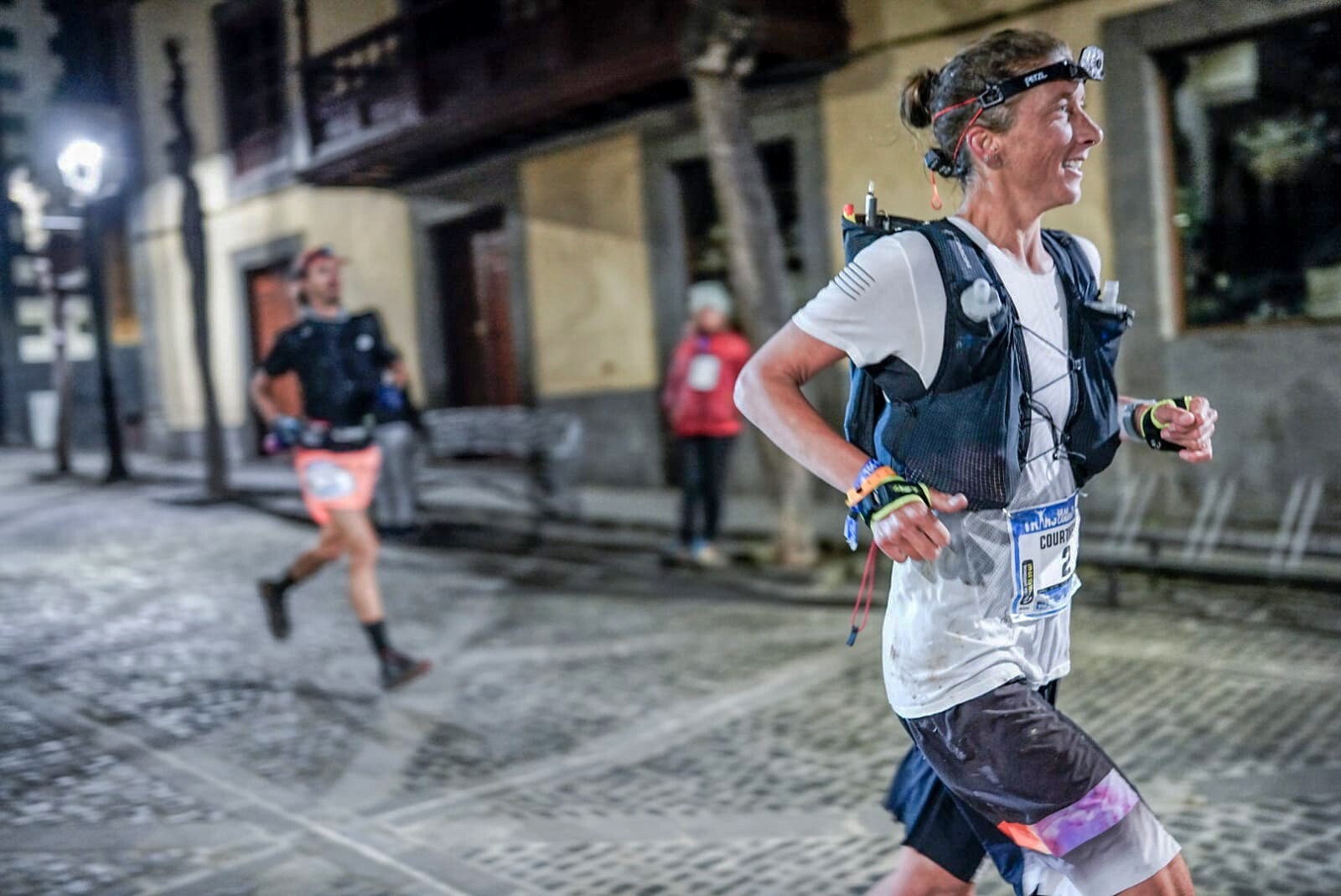
Everyone in the trail and ultrarunning communities knows that Dauwalter is an all-time great, but it’s still awe-inspiring when she shows up to hotly contested races and dominates her competitors. As listed on the trail and ultrarunning results database UltraSignup, Dauwalter entered the Transgrancanaria on a 14-race win streak that stretches all the way back to March 2021. (The last time she failed to reach the top step of the podium came at the Barkley Marathons.) She added yet another win to her resume on Saturday, extending that amazing streak to 15 and counting.
The Transgrancanaria is held on Gran Canaria, one of the Canary Islands, and it takes athletes along an arduous 128K course that features more than 7,000m of elevation gain. Dauwalter started the race chasing Lowther and Spain’s Claudia Tremps, who led for the opening stages of the run. About a quarter of the way into the race, Dauwalter took control of the field and moved into first place. From that point on, she never looked back, leaving Lowther and Tremps to battle it out for second place.
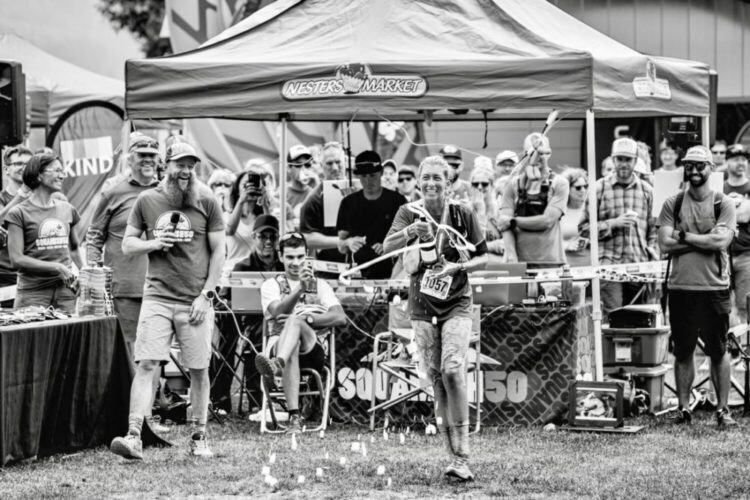
Dauwalter’s relentless attack on the course worked out to an average pace of 6:53 per kilometer, a blazing speed to hold in a race as long and as difficult as the Transgrancanaria. More than 90 minutes behind her, the race for second was quite close. Lowther and Tremps ended up just seven minutes apart, with the Canadian crossing the line in 16:26:41 and the Spaniard stopping the clock in 16:33:34.
In the men’s race, Spain’s Andreu Simon won in 13:39:33, followed by Portugal’s Miguel Arsénio (13:44:37) and American Tyler Green (14:06:46).
Login to leave a comment
Documentaries every runner should watch
If you’re tired of wasting time scrolling through Netflix searching for the right movie or show to watch, we’ve got you covered. There are plenty of movies out there on running, but we’ve selected five of the best documentaries for you to watch. Before you get started on these films, though, be warned: sudden bursts of inspiration are highly likely while watching these flicks, so be ready to feel the need to go for a run after viewing.
The Barkley Marathons: The Race That Eats Its Young
This film was released in 2014, and it tells the story of the Barkley Marathons, race founder Laz Lake and the runners who dream of finishing the event. Producers followed the 2012 event, before which only 10 people had completed the Barkley Marathons, but that number is up to 15 today. The documentary brought this race into the mainstream, and although viewership was likely primarily runners, it captivated non-running audiences as well.
Boston: The Documentary
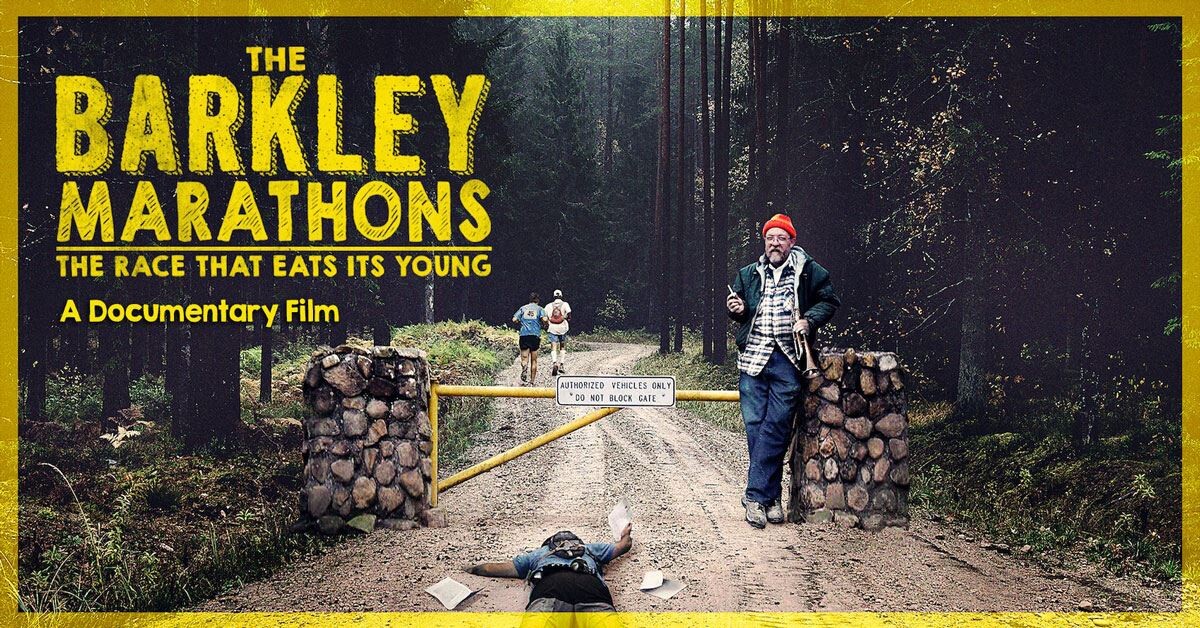
This 2017 documentary covers the history of the Boston Marathon, from its humble beginnings in 1897 right up to modern times. The film, which is narrated by Boston native Matt Damon, follows legends of the race (like the event’s first official female participant, Kathrine Switzer), 2014 winner Meb Keflezighi and four-time winner Bill Rodgers, as well as other past champions. In addition to the race’s history, the documentary looks to the future as organizers worked past the tragic events of 2013 and towards the Boston Marathons yet to come.
The Runner
In Oct. 2022, The New Yorker released a short, 17-minute documentary called The Runner that follows an Indigenous Canadian ultrarunner named Darius Sam. The film documents a 100-mile run in 2020 that Sam set out to complete to raise money and awareness for mental health. Since then, Sam has continued with ultrarunning, and in 2021 he became the youngest male to run the Moab 240, a behemoth of a race through Utah. Sam’s efforts have also led to a whopping $150,000 raised for mental health charities.
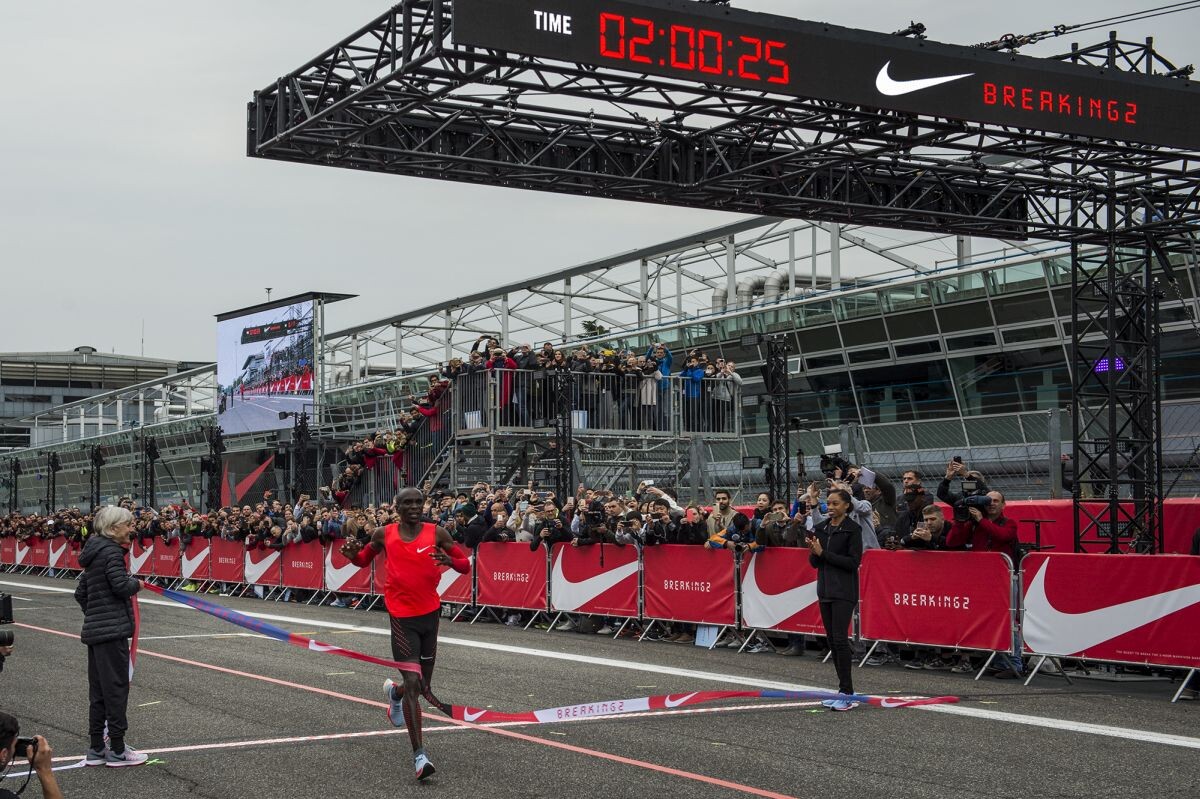
Breaking2
This documentary was produced by National Geographic and Nike, and it followed the build-up to the first-ever sub-two-hour marathon attempt, Nike’s Breaking2 project, in Italy in 2017. The film dives into the lives of the three Breaking2 athletes (Eliud Kipchoge, Zersenay Tadese and Lelisa Desisa), the months of planning that went into the attempt and the run itself. Although it ended up being unsuccessful (Kipchoge ran 2:00:25), it was still thrilling to watch, and the documentary is just as exciting.
Icarus
Although this Oscar-winning documentary is not a running-specific film, it should still be at the top of every runner’s must-watch list. The Netflix film intended to focus on doping and how difficult (or easy) it is to get away with cheating in elite sports, but it quickly turned into a story about doping in Russia, which ultimately led to the downfall of a years-long program that involved countless Russian athletes and sports officials.
by Ben Snider-McGrath
Login to leave a comment
Top 10 most popular running stories of 2022
Tt’s time to recap the most popular running stories. This year, the running community saw a lot of firsts and controversies. It was the first time we were made aware of a 6-year-old running a marathon; it was also the first time we saw a runner who chain-smoked during a marathon. As many of us returned to our favourite races and conquered new goals, we can’t ignore some of the mind-boggling stories.
Here is a countdown of the top 10 most popular running stories of the year.
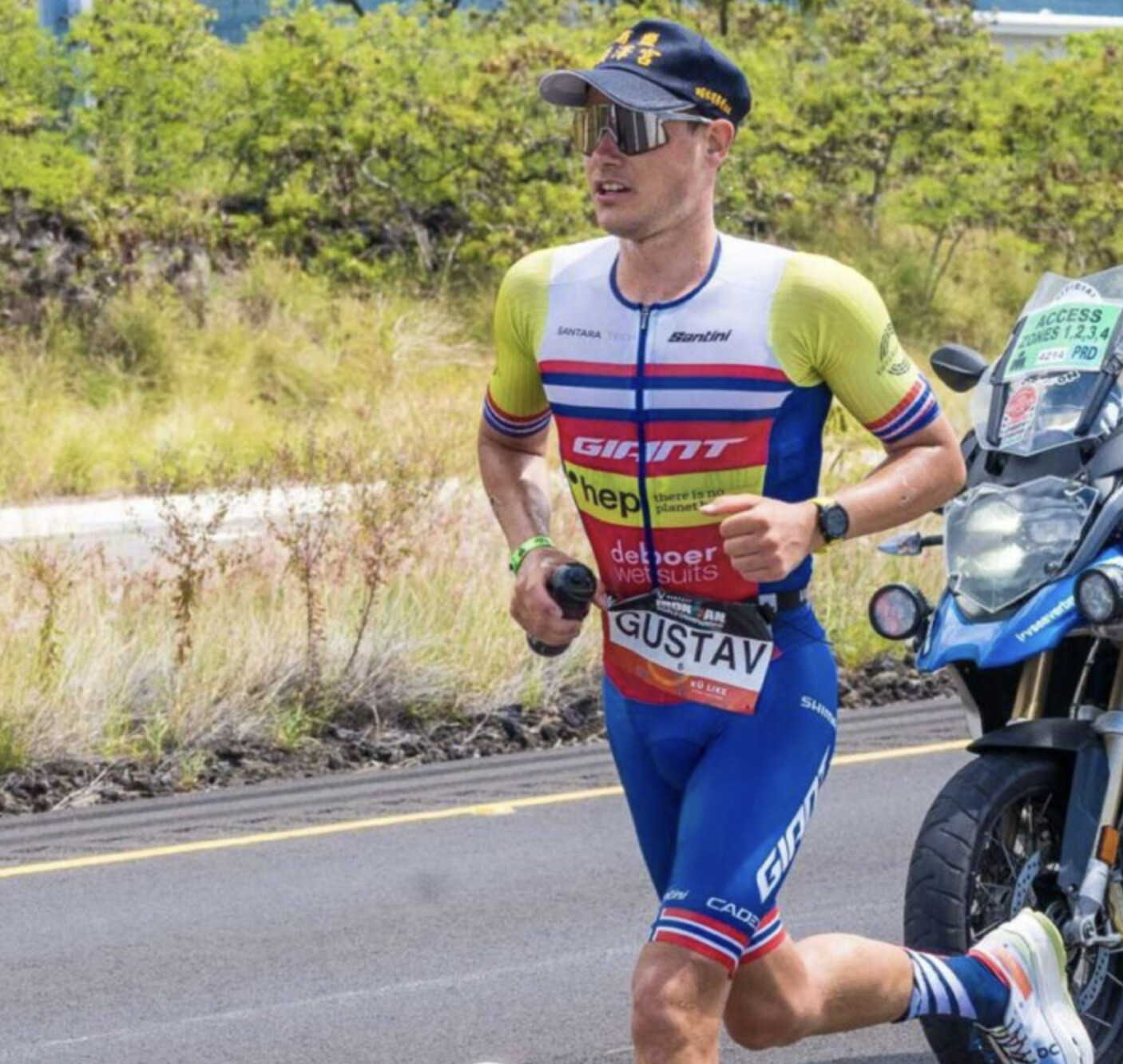
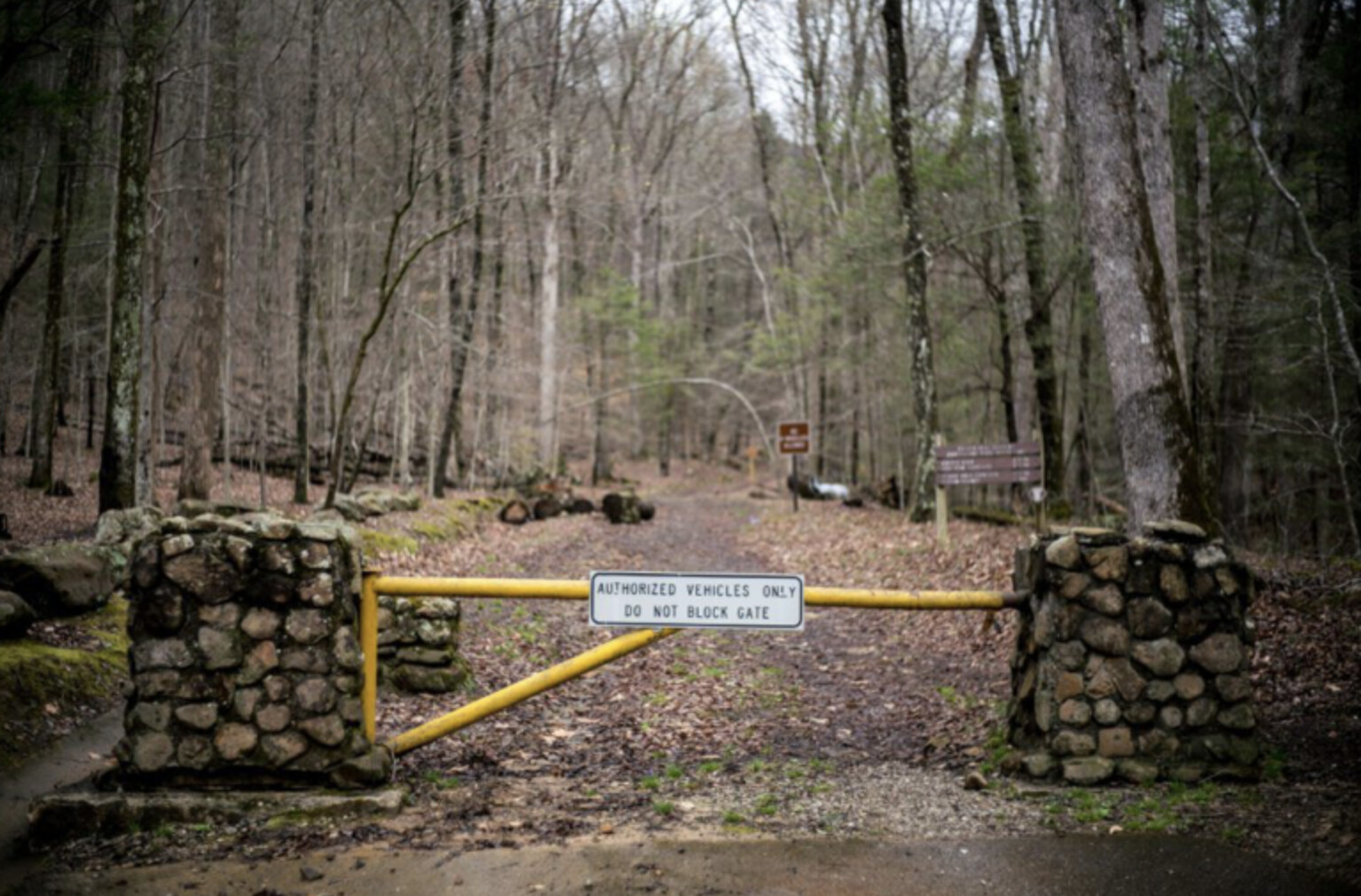
10) Ironman World Championship champion’s “chunky” shoes spark controversy
In October, Norway’s Gustav Iden made headlines as he ran a 2:36 marathon after a 180-kilometre bike and 3.8 km swim, earning his first Ironman world championships title. It wasn’t only his wild time that turned eyes, but the On Cloudboom Echo 3 carbon-plated running shoes that he wore, which have a reported stack height of 50 mm (legal for Ironman races).
9) Six-year-old’s marathon sparks controversy on social media
In May at the Flying Pig Marathon in Cincinnati, Ohio, a family of eight from Bellevue, Ky., all completed the 26.2-mile race together in eight hours and 35 minutes, including two children aged 12 and six. The family took on tons of criticism over the advisability of allowing a six-year-old to cover the marathon distance. Many experienced marathoners and coaches, including Lee Troop and Kara Goucher, have weighed in online, stating that six is too young for the marathon.
8) Turkey trot runner takes out his competitor at finish line
In November at a local 10K turkey trot, Xavier Salvador of Washington, D.C., impeded the line of Jack Huber of Delmar, N.Y., with 50 metres to go, after noticing Huber threatening to pass him on the right. Instead of checking if Huber was OK after the fall, Salvador made sure his GPS watch was stopped.
7) Barkley Marathons ends with no finishers (again)
In March, for the fifth straight year, the Barkley Marathons in Frozen Head State Park near Wartburg, Tenn., came to an end with zero finishers, after the only remaining two competitors, Karel Sabbe and Greig Hamilton, bowed out on their fourth loop (of five) of the 20-plus mile course. Sabbe’s fourth loop was one for the history books, as he was found off-course in another town, chatting with a garbage can who he thought was a person.
6) ‘Ultramarathon man’ Dean Karnazes attacked by coyote during 150-mile race
In August, acclaimed ultrarunner and author Dean Karnazes posted a video that he was attacked by a coyote during Headlands 150-mile Endurance Run, held outskirts of San Francisco. Karnazes said was OK, but that he had several cuts on his face and body from the attack.
5) “Poopgate” continues as Arizona high school bans track use
In February, human feces were found under the bleachers at the Red Rock High School track in Sedona, Ariz., which resulted in a ban on public use. In the aftermath, there was plenty of buzz and finger-pointing on social media about the ghost pooper’s possible identity, using the hashtag #poopgate. To this day, it is still a mystery who did the deed.
4) California man runs an ultramarathon in roundabout
In November, a runner from Healdsburg, Calif., was getting tired of his usual running routes, so he went out on a six-hour, 58-kilometre run around the local roundabout, never once switching directions. The best part is that, a week later, he did it again, in the opposite direction.
3) WATCH: Florida high school runner gets sucker punched mid-race
In March, we saw a candidate for “wildest video of the year” when a high school runner at a Florida track meet was sucker punched and knocked to the ground by another athlete during a 1,600m race.
2) Colorado runner wins all four races at Disney Marathon weekend
In January, Brittany Charboneau of Colorado climbed to the top of the podium on four occasions during the Disney Marathon Weekend in Orlando, Fla. She won the 5K, 10K, half-marathon and marathon over four days, while dressed as her favourite Disney characters. Simply amazing!
1) Chinese man runs a 3:28 marathon while chain-smoking
In November, we witnessed one of the wildest running stories ever, when Uncle Chen went viral for chainsmoking cigarettes during the Xin’anjiang Marathon in Jiande, China. It is well known that smoking cigarettes hinder running performance, but that didn’t seem to bother 50-year-old Uncle Chen, who clocked an impressive three hours and 28 minutes.
by Running Magazine
Login to leave a comment
Harvey Lewis Breaks the Big’s Backyard Ultra Record By Running More Than 350 Miles in 85 Hours
He ran a 4.1667-mile loop every hour for 85 hours.
The third time was the charm for Ohio’s Harvey Lewis at the 2021 Big’s Backyard Ultra. After finishing as the assist in 2017 and 2020 (meaning, he is the second-to-last runner left in the race), the 45-year-old was finally the last runner standing in Bell Buckle, Tennessee. In total, Lewis ran 350.0028 miles in 85 hours/laps, making him the undisputed backyard ultra world-record holder.
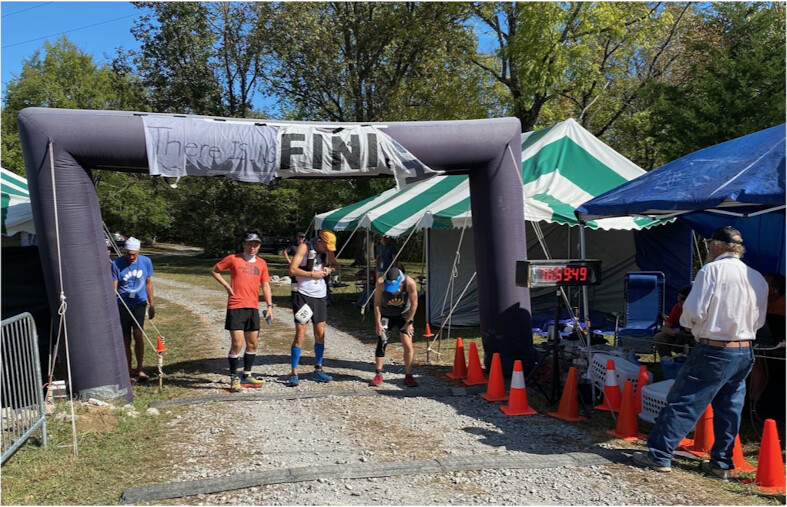
The backyard racing format has grown in popularity recently, with pop-up races happening all over the world. The rules, put simply, are: run a 4.167-mile loop at the top of every hour until one runner has done at least one more lap than the second-to-last runner. If both runners stop at the same time, then no winner is declared. At Big’s, runners complete a trail loop during the day, and a road loop at night.
The 2020 race was a virtual event, with runners in more than 20 countries competing simultaneously in standalone races. As a result, the 2021 race was anticipated to be one of the most stacked fields in race history. While some international runners were still unable to make the trip due to pandemic-related travel restrictions and concerns, several top runners made it to the start line. This included 2019 champion Maggie Guterl, 2020 champion Courtney Dauwalter, Big’s regular Dave Proctor, Michael Wardian, and Steve Slaby.
The race started at 6 a.m. ET on Saturday, October 16, and only three runners of 35 starters total dropped out within the first 24 hours (100 miles). But after that, runners seemed to drop almost every hour. Nine completed 48 hours, a large pack for reaching the third day of the race.
Lewis’s Big’s experience paid off as he and his crew chief Judd Poindexter troubleshooted any issues that arose. He fueled well and got five- to 10-minute naps when he could during the night, a big change from not sleeping at all in 2017.
One the race hit the 72-hour mark, it headed into uncharted territory with just three runners still standing: Lewis, Missouri’s Chris Roberts, and Japan’s Treumuchi “Mori” Morishita. Only two known backyard races in the world have hit the fabled fourth day before. This was the first time it had ever happened at Big’s.
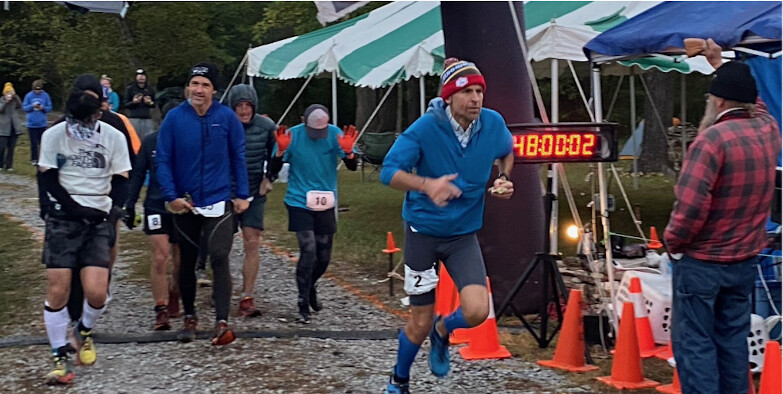
“We all wanted it so bad,” Lewis told Runner’s World. “We had lasted so long out there, which takes incredible willpower. It definitely helped. I wouldn’t have been out there without a reason to keep going, so I really enjoyed the challenge of running with them for so long together.”
The trio battled from lap 63 on, all quietly competing against one another. Each runner had their own style; Lewis and Morishita would sprint out of the corral at the start of some laps, which was a fan favorite.
“At the start and in certain areas, we just started sprinting,” Lewis said. “Morishita would sprint through the woods and yell, and then I would sprint through the woods and yell. It was a good move, so I hope Morishita didn’t mind I was doing it as well.”
Roberts struggled a lot before dawn, fighting off an injury that had him leaning sideways and coming in with few minutes to spare on laps. But as the sun rose, he recovered for a strong day.
Issues arose late in the game for Lewis and Morishita. Both runners fell on lap 81, which caused Morishita to miss the cutoff by 30 seconds, ending his day and leaving just Lewis and Roberts in the race. Lewis fell on the final hill and left him with an unknown (at the time) hand injury. Because his legs were okay, he ignored it and kept moving.
“As we got to the night, I thought for sure we’d be going to 400 [miles], so I mentally prepared myself for that,” Lewis said.
Many anticipated another complete night—that is, until lap 85, when Roberts surprisingly returned to camp soon after starting. Lewis, still on his loop, didn’t know this. Even though he didn’t see Roberts on the way back, he still wasn’t convinced he won until he got back to camp.
There, Lewis was greeted to roaring applause from the crowd that was still there. Lewis was finally a Big’s champion, capping off an incredible year of winning three major races: Badwater 135, Ohio’s Backyard Ultra, and now Big’s. He also earned the undisputed world record for most yards ever completed in a backyard race, taking the title from John Stocker who ran 81 yards with his assist, Matt Blackburn at the Suffolk Backyard Ultra in June 2021.
“It was an incredible experience,” Lewis said. “It has been one of my dreams to win this race, and to have it come to fruition was pretty mind-blowing for sure. I was super psyched.”
Lewis was so overcome with joy and exhaustion that he spent little time enjoying his win, opting to head to his tent shortly after finishing.
“When I finished, whatever armor I developed in my mind that told me I wasn’t going to submit went away,” he said. “I was really tired. I didn’t care where I slept. There was a cot in my tent 40 meters away, and it felt like the Taj Mahal. I fell asleep with half a plate of rice and beans on me.”
The next day, Lewis got a ride back to Cincinnati. When he arrived around 11 p.m., he kept his run streak alive by getting a mile in with minutes to spare. Then, a friend instructed him to go get his hand checked out in the emergency room after midnight. Harvey was diagnosed with a clean break in the fourth metacarpal of his right hand, and he was told should heal in a few weeks with just a splint.
Lewis told Runner’s World that he got a few hours of sleep in the ER before going home briefly and run commuting to work—he’s a social studies teacher at School for Creative and Performing Arts. Lewis wasn’t supposed to work because he had taken the day off. However, because of a shortage of substitute teachers at the moment, he literally ran in teach anyways.
“A couple times a year, I’ll take off to recuperate,” he said. “As long as I’m not hurting myself, I do the commute with human power.”
Big’s is likely the last race of the year for Lewis, though he plans to run the Flying Pig Marathon easy on October 30. His next big adventure will be the Barkley Marathons in 2022, which he now has entry to because of his Big’s win. Cantrell let Lewis know his thoughts on that.
“My biggest memory was turning to [Big’s and Barkley Marathons creator Gary ‘Lazarus Lake’ Cantrell] at the end and saying, ‘The winner gets an entry to Barkleys,’” Lewis said. “He couldn’t say no, so he went along with it. The next day, he told me that I’d be the sacrificial lamb.”
by Runner’s World
Login to leave a comment
Canadian Ultrarunner Runs 1,000K in Fewer Than 10 Days to Win the Great Virtual Race Across Tennessee
After finishing in 148th overall in last year’s race, Morris was on a mission to win.
For the second year in a row, the Great Virtual Race Across Tennessee (GVRAT) has been won by a Canadian, and once again in a record-breaking performance.
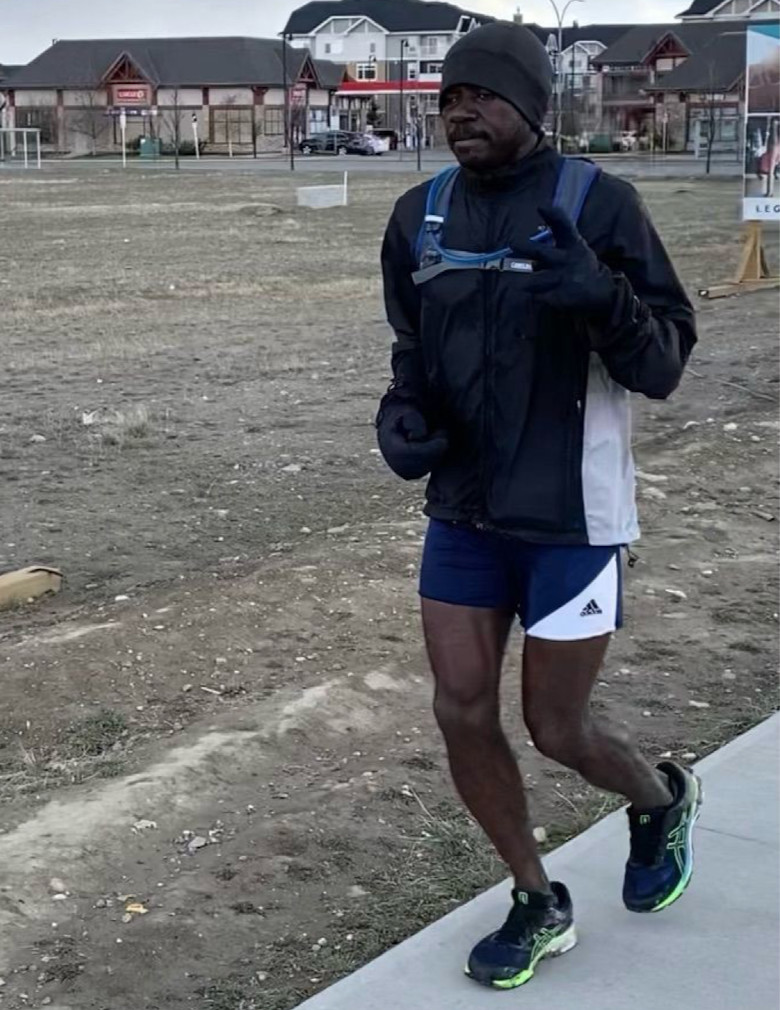
Varden Morris, 50, who lives in Calagary, Alberta and is from Jamaica, completed the 1,000K distance (a little more than 621 miles) in 9 days and 23 hours, averaging more than 100K a day. Morris beat out fellow Canadians Matthew Shepard, 33, and Crissy Parsons, 40, who finished in 13 days and 15 days, respectively.
“Honestly, I’m in disbelief,” Morris told Runner’s World. “Just hearing stuff on social media about the magnitude of what I just did. I knew it was possible but after finishing and realizing that not many people have done what I’ve done, it baffles my mind.”
Last April, Barkley Marathons creator Gary “Lazarus Lake” Cantrell came up with the idea of hosting a virtual ultra, giving people four months to run twice the distance of the Last Vol State 500K—and more than 19,000 runners signed up. One of them was Morris, who went out with the fastest of the bunch, but due to lack of training, he picked up a few injuries and was forced to slow down. He finished 148th overall.
After that, Morris decided he wanted to win the 2021 race, so he studied the training methods of successful ultrarunners and increased his mileage. By the start of 2021, he was running about 14 miles a day for a week before upping that mileage by four miles to his daily total until he reached a max of 36 miles a day. In March alone, he covered 965 miles.
On May 1, when GVRAT finally began, Morris set out to not only win, but to also finish in fewer than 10 days.
“My strategy was to run as close to possible to the same average distance every day,” he said. “Most people try to put in most miles in the first few days. My plan was to be consistent. I went a little above my average the first day by 10 percent, but I was doing mostly the same miles every day.”
Morris ran around his neighborhood in Calgary, with a routine of running for six hours and resting for five. He rotated through three pairs of Asics shoes, and for fuel, he focused on solid foods like boiled eggs with veggies, Jamaican sweet potato pudding, toto (a Jamaican pastry), and fruit, such as grapes, bananas, oranges, and watermelon.
No day was easy. Morris said he often found himself contemplating if he would complete the run he was on. On the first day, he picked up a groin injury that lasted a couple days. Another day, he ran through rain and hail with winds over 25 mph.
“Every minute was important,” he said. “Each day was more and more difficult. There was a sense of uncertainty if I would finish. It wasn’t something easy. It was something very difficult. We just took it one day at a time.”
When Morris woke for his final push of 44 miles, he was hurting but he knew he was ahead of his fellow Canadians. His wife, who also served as his crew chief, joined him for the first 15 miles of that final push, and his daughter ran the final four miles with him.
Celebrations included a big meal at home of meat and veggies and some non-alcoholic wine. With the record in hand, Morris plans on running back across Tennessee; part of the GVRAT format allows runners to run back across Tennessee as many times as they like during the four-month period.
Morris said he will be taking it much slower back across.
During last summer’s GVRAT, Cantrell faced criticism when he deleted a GVRAT finisher’s post on Facebook that described the runner’s experience receiving racist and homophobic slurs during his runs.
by Runner’s World
Login to leave a comment
Michael Versteeg wins inaugural Cocodona 250-miler, Maggie Guterl still running in 7th overall
Ultrarunner Michael Versteeg of Prescott, Ariz., won the inaugural Cocodona 250-miler on Thursday morning, crossing the finish line in Flagstaff after 72 hours of racing. Versteeg finished ahead of Flagstaff local Peter Mortimer, who is still in the final miles of his run toward second place. Maggie Guterl is currently the top woman in the race, and at the time of writing, she completed 228 miles (366K) of what event organizers describe as a “250ish-mile footrace,” which works out to a total of about 400K. Guterl sits in seventh overall
Versteeg’s win
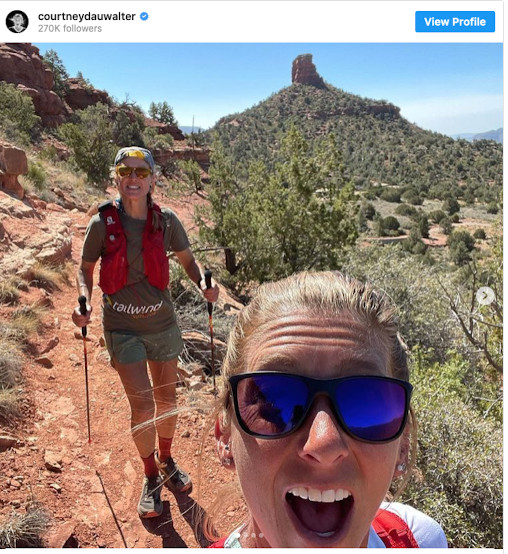
This is the inaugural running of the Cocodona 250, which was organized by the team at Aravaipa Running. The race started in Black Canyon City, about an hour north of Phoenix. From there, runners travelled north, passing through multiple towns (including Versteeg’s hometown of Prescott) before eventually making it to Flagstaff, 1,500m higher above sea level than where the race started. In total, the race features close to 13,000m of elevation gain, which is like running the height of one and a half Mount Everests.
The uphill battle, the heat of the desert and the sheer distance of the race didn’t stop Versteeg, who was at the front of the race throughout the 400K journey. This isn’t Versteeg’s first time stamping his name in the history books, as he won Aravaipa Running’s inaugural Whiskey Man Series in 2016 as well. On top of that, he has recorded many other ultramarathon race wins.
The chasers
Among the chase group (which is the rest of the Cocodona field, as Versteeg is the only finisher so far) is Guterl, who is in seventh place and currently being paced to the finish by fellow American ultrarunning star Courtney Dauwalter. Guterl and Dauwalter know each other well, and earlier this year, they both competed at the Barkley Marathons (although, like everyone else at this year’s race, they registered DNFs).
Like Dauwalter, Guterl is well known in the world of ultrarunning, and she has several big race wins to her name, including Big’s Backyard Ultra in 2019. Now, Guterl is looking to add another win to her resume, and with a 16K lead on the second-place woman Jessi Morton-Langehaug, the Cocodona crown is hers to lose.
Also racing this week was Gene Dykes, a 73-year-old runner from Pennsylvania who owns multiple age group records, including the American 100-mile and 24-hour bests (21:06:07 and 179.98K). Unfortunately, Dykes didn’t make it to the finish line, and he (along with close to 60 other runners, so far) recorded a DNF.
The race is ongoing, and despite the many DNFs, there are still dozens of other runners on the course making their way to the finish. To track live results of the Cocodona 250, click here.
by Running Magazine
Login to leave a comment
Canadian ultrarunner Varden Morris wins Great Virtual Race Across Tennessee
The Great Virtual Race Across Tennessee has only been running for 10 days, but it already has its first finisher. Calgary’s Varden Morris completed the roughly 1,000K race in just over a week, averaging an impressive 103K per day since the event kicked off on May 1. Matt Shepard of Valleyview, Alta., is currently in second place, with just over 800K complete.
The GVRAT
Laz Lake created the GVRAT in 2020 at around the same time many races started going virtual. Lake, who is best known as the race director of the Barkley Marathons, wasn’t going to organize a quick virtual 5K or 10K, though, and he decided to take runners across his home state in a 1,000K ultramarathon. This year, just like in 2020, the race started on May 1, and participants have until August 31 to complete the route. They upload their runs or walks to the event website, which tracks every runner’s progress and lists the leaderboard.
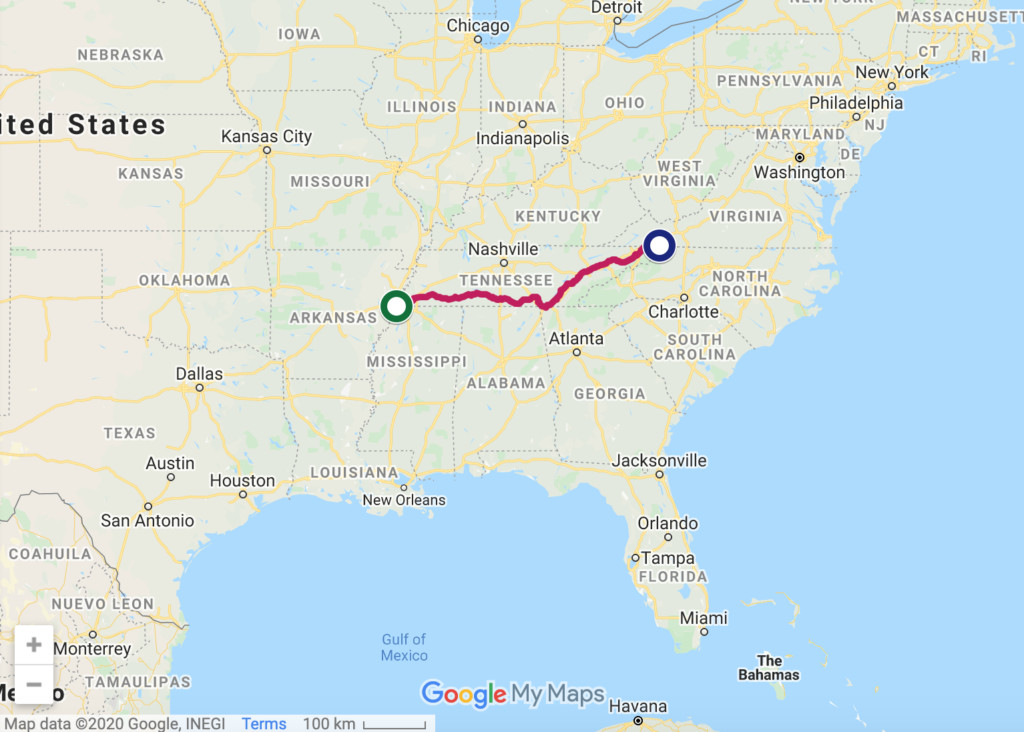
This year, around 5,000 people have signed up, although registration is still open for anyone interested in jumping into the ultra challenge. For people who think 1,000K is a bit too short, there’s an out-and-back race option, which tops out at a bit above 2,000K.
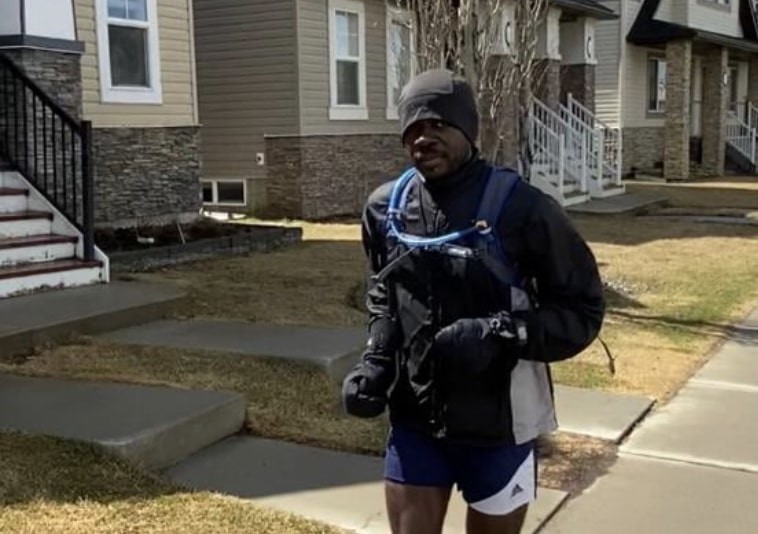
Morris’s win
Morris was relentless in his 10 days of racing, and he went for multiple runs each day to rocket himself up the leaderboard and toward the win. He kicked the challenge off on May 1 with a 112K day, followed by a 119K total on Day 2. From there, he continued his attack, distancing himself from the rest of the field every day. Throughout his 10 days of running, Morris ran under 100K only twice.
As he wrote on the GVRAT Facebook page, the race was 70 per cent mental for him and 30 per cent physical. “It has been a very humbling experience for me from day #1 through day #10,” Morris wrote. “Every single run came with its own set of challenges that resulted in me questioning God if this is possible and if I will be able to complete it.” He said his wife and daughter played big roles in his win, helping him throughout the race by preparing meals for him and showing him moral support.
The race is now on for second place, although Shepard appears to have a pretty good hold on it with his 800K total. In third is another Canadian, Crissy Parsons, who leads the women’s field with about 650K run. Like the gap between Parsons and Shepard, the distance from Parsons to the fourth-place runner is quite far, and as long as she holds steady in the coming days, she will likely finish third and complete a Canadian sweep of the podium.
by Ben Snider-McGrath
Login to leave a comment
Barkley Marathons book documents race’s 15 finishers
If you follow trail running or ultrarunning, odds are you know about the Barkley Marathons. You might not know much about the race, but you’ll at least know it’s incredibly difficult. So difficult, in fact, that only 15 runners have ever completed the roughly 100-mile run through Tennessee’s Frozen Head State Park in its 35-year history. A new book titled The Finishers has been published in French (with an English edition on its way), which tells the stories of those 15 Barkley Marathons finishers, as well as the tale of the event itself, through photography and runners’ stories from one of the world’s toughest races.
The race

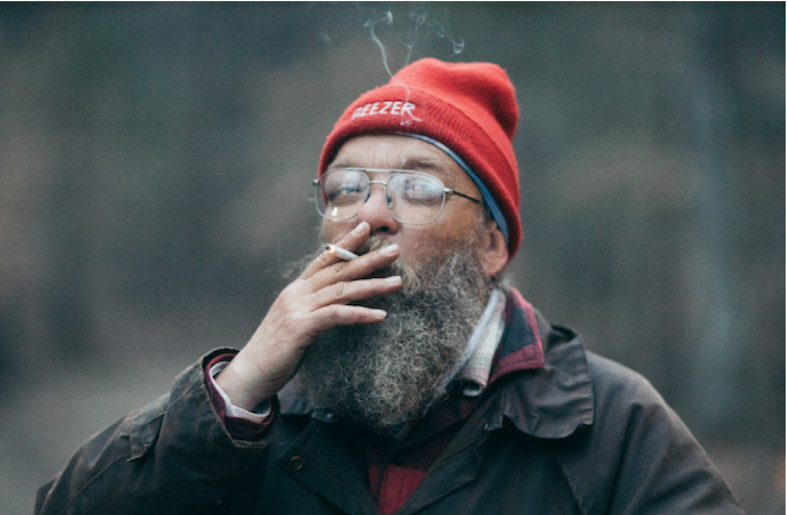
Laz Lake is well known in the world of ultrarunning. He has created several races, all of which are long, gruelling affairs, but his most famous event is the Barkley. The first running of the event was in 1986, and it didn’t see a finisher until nine years later, when Mark Williams completed the full route in 1995.
Since then, 14 more runners have joined Williams on the short list of finishers, and a couple of men have recorded multiple finishes (Brett Maune finished in 2011 and 2012 and Jared Campbell finished in 2012, 2014 and 2016). The most recent finish belongs to John Kelly, who was the only person to complete the race in 2017. (Gary Robbins of Chilliwack, B.C., has raced the Barkley three times, and came close to finishing in 2017.)
Around 40 runners get to race the Barkley Marathons every year, and the run through the woods and mountains of Tennessee starts when Lake lights a cigarette – one hour after the conch blows. Participants (and that’s what most will be — participants, not finishers) have 60 hours to navigate the five-loop course, which is not marked, and GPS devices are not allowed. In addition to running and navigating, runners must find books hidden around the course, tearing out the page corresponding to their bib number (which is different for each loop) – turning the ultramarathon into a brutal scavenger hunt.
If a runner can find each of the books (the number varies from year to year) and make it through all five laps, they will have covered about 100 miles and climbed around twice the height of Mount Everest in 60 hours or less. Finishing the first three loops in under 40 hours counts as a “Fun Run,” and is required to be allowed to attempt a fourth loop.
The Finishers
French photographer Alexis Berg and friend Aurélien Delfosse (a writer for the French sports newspaper L’Équipe) teamed up to put together The Finishers. As Berg says, he “had the crazy idea to make a very long trip through the U.S.,” and after pitching it to Delfosse, they set off on their journey, travelling around the country to talk to the 15 Barkley Marathons finishers.
Some of these athletes were easy enough to find and interview, while others had never spoken to the media, despite their monumental accomplishments in Frozen Head State Park. “If this book has any lasting meaning, it is in the depiction of these shadowy figures, seemingly ordinary yet extraordinary,” Berg says. “Each meeting at their home was, for Aurélien and me, a moment of grace, heart and intelligence. We will remember these moments all our lives.”
Berg and Delfosse endeavoured to share these meetings with the world through photography and text, and The Finishers is their final product. The book even includes a preface from Lake himself. Berg notes that this is far more than “just a sports book,” though, as it looks at the Barkley as a whole, from its inaugural running to its most recent, and uses the race to “explore our bodies, minds and the real or invented barriers that every day we decide to push back.”
The Finishers is available to purchase in French, and the English version is set to be released in March 2022 (although it can be pre-ordered now, and orders will be shipped by the end of 2021).
To learn more about The Finishers, click here, and to keep up to date on the 2021 edition of the Barkley Marathons (which we have reason to believe may be starting very soon), be sure to check in on the Canadian Running website and social channels.
by Running Magazine
Login to leave a comment
No winners in 2021 Barkley Marathons
Only 15 people have finished the Barkley in the past 35 years.
Officials said the Barkley Marathons were over at around 4:30 p.m. on Friday. They said that there were no winners.
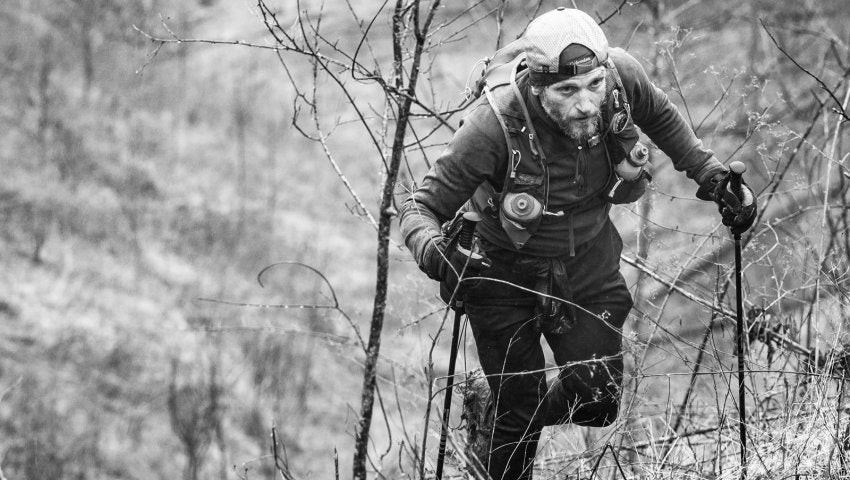
Keith Dunn said that runners dropped out as temperatures were expected to drop overnight.
A single marathon usually goes for around 26 miles, but not the Barkley Marathons. It takes participants through a 100-mile unmarked, off-trail course through Frozen Head State Park instead.
On Thursday, runners took off and started the event. The marathons have fans all around the world, but only 15 people have finished it in the past 35 years. There were no finishers in the 2020 marathons after the COVID-19 pandemic closed Tennessee State Parks, effectively canceling the race.
Runners have 60 hours to finish the 100-mile race. There is no online registration and participants must figure out how to apply through word-of-mouth.
"After a bride memorial for the members of the Barkley family who no longer are with us, the cigarette was lit at 3:04 a.m.," said Keith Dunn, an official with the race.
They must also find books on the course and tear out the page corresponding with their race number to prove they ran a full loop. They are given a new race number for each loop.
Officials said that the Morgan County Cattleman's Association provides food for participants to purchase through the race, and the Morgan County Tourism Alliance offers field guides for runners. They are designed by locals and explain fauna and flora in the area.
Runners are also issued a standard watch set to the race time, and no other watches are allowed. This year's watch was an analog pocketwatch.
Dunn also said that one person dropped out of the race five and a half hours into the race. He also said that this year's marathons feature more newcomers than veterans, because of travel restrictions.
A documentary was also made about the race in 2014 — The Barkley Marathons: The Race That Eats Its Young.
Login to leave a comment
2021 Barkley Marathons are still on
Laz Lake, the director of the famed race, says the 2021 event is still happening with COVID-19 protocols in place
Due to the COVD-19 pandemic, the 2020 running of the uniquely demanding race, the Barkley Marathons, was canceled for only the second time since it began in 1986. While the future of many running events in 2021 is still uncertain, Barkley Marathons organizer Laz Lake says this year’s running of the coveted race, held at Frozen Head State Park in Wartburg, Tenn., is still on, albeit with a few changes.
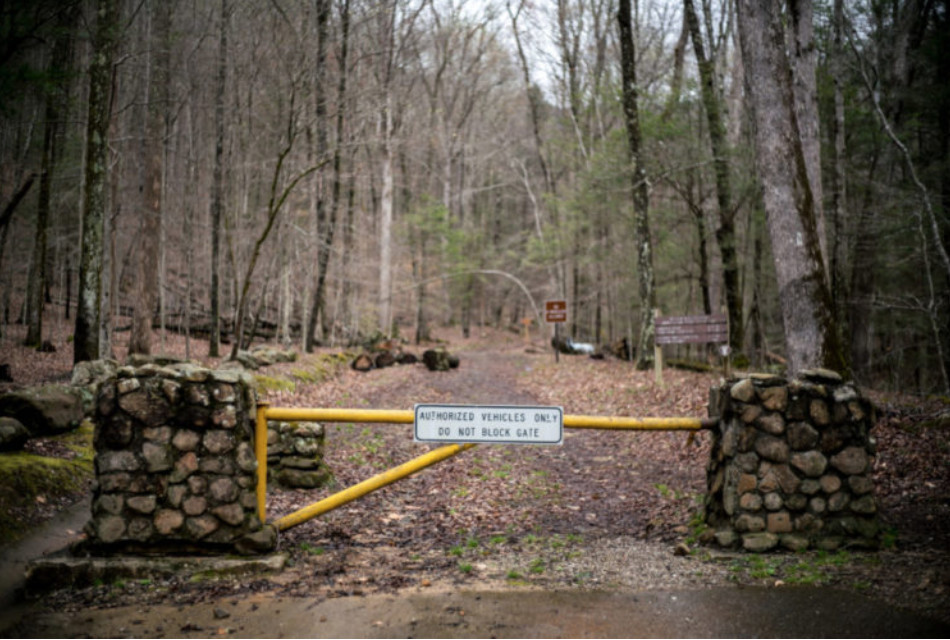
The race, scheduled to take place in late March, typically is capped at 40 participants, but this year Lake says many of the non-American participants have opted to defer until next year.
Twenty-nine runners are signed up so far, and officials are in the process of identifying those who have either been vaccinated or have had COVID and have recovered. These criteria constitute the participant’s “COVID passport,” and Lake says anyone on the waiting list must meet those criteria in order to be granted entry. At this point, officials say there are six wait-listers who have their COVID passports.
In an email, Lake outlined the COVID-19 protocols that will be in place for the event, which he says are different than a typical road race. Officials’ biggest concern is the matter of social distancing, which will only be required for a short time at the race start, since runners very quickly spread far apart on the course. In his email, Lake acknowledged the difficulties of hosting an event during the COVID-19 pandemic
For this reason, many of the race’s normal activities, such as the potluck dinner, will not be included in the event itinerary. Finally, Lake says that as the state of the pandemic continues to evolve, the situation is subject to change. As of now, the race will go ahead for any approved applicants who have their COVID passports, but this year’s participant list will be much more local. The only question left, then, is one asked every year: will anyone actually finish the race
by Brittany Hambleton
Login to leave a comment
Process Goals Are The Keys To Performance
5 DAYS - 3 COUNTRIES - 590 MILES - 113 PEAKS - OVER 100,000 FT ELEVATION After completing the Barkley Marathons, legendary ultra-runner John Kelly asked himself 'What do I do now?' Join John on a discovery of what he can achieve as he enters his 'Goldilocks Zone' with his self-devised Grand Round challenge
Those are process goals. Given that many, including elite athletes, are not clear as to what they are, here are definitions of three kinds of goals:
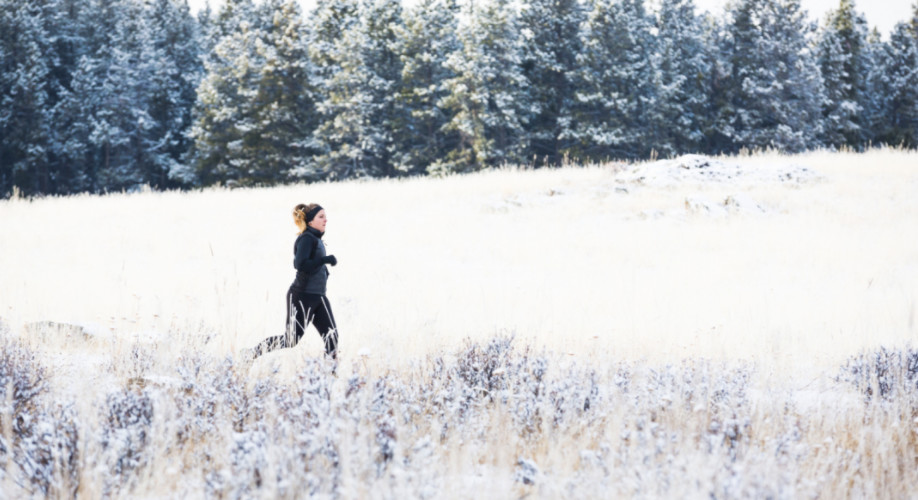
Process goals are weekly tasks like those above to focus on as you strive for performance or outcome goals. Process goals are under your control.
Performance goals, by contrast, are performance standards that are independent of others. Performance goals might be to run the 400 meters in under 58 seconds or a 10K in under 40 minutes.
Outcome goals are competitive goals that involve competition with others and are not under our control. Winning a gold medal or wanting to finish in the top ten of an age division are examples.
Process goals are essential for performance. In the 1960s industrial psychologists Drs. Edwin Locke and Gary Latham found that setting process goals increases motivation and enhances productivity by 11% to 25%. Their studies included 40,000 employees in industry. Goal setting encouraged them to be resilient-to persist through obstacles-and also to develop strategies to achieve goals.
Research on excellence in the 1990s by Dr. K. Anders Ericsson shows that deliberate practice, a kind of process goal, is critical to world-class performance. Deliberate practice is practice done repeatedly, focused on weaknesses as well as strengths, performed with feedback from a coach, and then tweaked. At times deliberate practice is not fun. It's work. It's been found to be key to high performance in fields as diverse as music, chess, and athletics.
Writing and Sharing
Still more research on process goals shows that we should take them seriously if we're intent on training for an important event. My doctoral research in the late 1990s on over 100 national- and world-class masters runners found that 94% of them wrote down their process goals. Ninety percent of them had a coach who provided feedback.
More recent goal-setting research published by Dr. Gail Matthews from Dominican University found that the combination of writing down goals, writing action commitments for them, sharing commitments with a friend and sending weekly progress to a friend predicts goal achievement much more than just saying goals out loud and not including specific follow-up plans.
Dr. Matthews divided her subjects (people who were setting all kinds of goals, including finishing projects and starting new routines) into five groups. The groups were assigned five different levels of commitment. As an example, the least committed group was asked just to think (not write) about their goals. The most committed group was asked to write down goals, write action commitments for each one, share the written goals and action commitments with a friend, and send weekly progress to a friend. Of the original 267 participants, 149 completed the study.
At the end of the study, only 43% of the least committed group achieved their goals as compared with 76% of the most committed group. Sending weekly progress reports to a friend mattered. In addition, those who sent weekly reports were 12% more likely to achieve their goals than those who just wrote down their goals and action commitments.
Picking Positive Peers
Other research suggests that process goals are easier to achieve if you live with others who have habits which you admire. UCLA neuroscientist Dr. Marco Iacoboni, author of Mirroring People: The Science of How We Connect to Others, has done extensive research on mirror neurons, brain cells in the premotor cortex and inferior parietal cortex.
Mirror neurons, said Dr. Iacoboni (Scientific American, July 1, 2008), "are the only brain cells we know of that seem specialized to code the actions of other people and also our own actions. They are obviously essential brain cells for social interactions When I see you smiling, my mirror neurons for smiling fire up, too, initiating a cascade of neural activity that evokes the feeling we typically associate with a smile."
So if your process goals include strength training a few times a week, you're more likely to achieve them if you are around others who also strength train a few times a week. Those mirror neurons are watching all kinds of behaviors around you. Are you aware of others' habits and if so, do you spend time with those whose habits you emulate?
What steps might you take if you're not lasered in on process goals?
Ideally set process goals with a coach over a short time period. My practice focuses on successive six-week goals for weekly review and tweaking. (A 2007 study by psychologist Richard Wiseman showed that 88% of people who make New Year's resolutions fail. The reason? No structure. No follow-up.)
And if you don't want a coach, find a similarly committed friend. It's more important that your friend is committed to a process than that the friend is an athlete. An artist, executive, chef anyone can be a powerful goal setting partner. (If only pets could talk.)
by Trail Runner Magazine
Login to leave a comment
Why distance doesn’t matter when it comes to FKTs
Regardless of its length, your favourite running route could deserve its own official FKT
With countless event cancellations this year, fastest known times (FKTs) have blown up and replaced races for so many runners around the world. As the founders of fastestknowntime.com (the official website of FKTs) told FiveThiryEight in the summer, they have seen a massive increase in FKT submissions in 2020 compared to 2019, and that hasn’t slowed down in recent months. It’s easy to look at some of these routes, many of which take days to complete, and think, “I could never do that.” The thing is, FKTs aren’t just for ultrarunners or elite athletes. Anyone can submit a run to be considered by the crew at fastestknowntime.com, and the routes can be as short or as long as you want. So really, there’s nothing stopping you from owning an FKT.
The short
A quick scan of the FKT website will show you that these routes are not all ultra-distance runs. Yes, there are some ridiculously long runs, but there are also routes that you don’t have to dedicate days (or, in some cases, weeks) to in order to complete them. You can even run a few kilometres and, if the route is noteworthy enough, you can get it certified as an official FKT.
For example, look at the Mt. Sanitas route in Boulder, Colo. This is a 1.4-mile (2.25K) run, although it gains almost 400m in that short period of time. This is by no means an easy route to run, and you’ll be gassed by the end of the intense climb, but it’s just a little over 2K. You probably won’t beat the current FKT (it belongs to Kilian Jornet, who completed the run in just over 14 minutes), but if you’re in Boulder and feel like punishing yourself, give it a shot.
The long
On the other end of the spectrum, there are the long FKTs. And when we say long, we mean long. A great example of this is the Appalachian Trail. This 3,500K trail stretches from Maine all the way down to Georgia, and the current route records belong to Belgian Karel Sabbe, who ran farther than anyone else at the 2019 Barkley Marathons (although he still finished with a DNF), and American Liz Anjos. Sabbe set his FKT in 2018, completing the route in just over 41 days, and Anjos ran hers earlier this year, finishing in 51 days.
Try your own
As you can see, you can go super short or extremely long for FKTs. The key to getting your route certified, as listed on the FKT website, is to make sure it is “distinct enough so that others will be interested in repeating it.” It is also noted that, while routes can be any length, “anything less than five miles long or with less than 500 feet of climbing would have to be special.” If you think you’ve got a route that could attract other runners, send it in to the team at fastestknowntime.com. If they like it, run it yourself as the first official record attempt on the route. Once you’re finished, you’ll own an FKT. It might not stay under your name forever (especially if someone like Jornet decides to run it), but you’ll always be the original record holder.
by Running Magazine
Login to leave a comment
Ethan Newberry’s first 100-mile training week
Here's what happened when the trail runner and filmmaker set out to document his first-ever 100-mile training week
For better or for worse, many runners consider the 100-mile training week to be an important benchmark. Even though it’s entirely arbitrary (and for many people would represent too much mileage for optimal training and health), the idea that they “should” be training at this volume holds sway over more people than would probably admit it. Filmmaker, musician, trail runner and race director Ethan Newberry of Seattle, aka The Ginger Runner (whose film Where Dreams Go To Die documents Gary Robbins’s first and second Barkley Marathons attempts), is one of those people.

For years, Newberry had wanted to do a 100-mile training week, just to prove that he could. So, with some guidance from his coach, David Roche, in the final days of 2019, he finally did.
Newberry acknowledges the arbitrariness of the benchmark 100 miles by saying that for some people, 100 miles a week is “not a lot,” and for others it represents a crazy amount of training volume. For him, it was a daunting challenge, for two main reasons: 1) he’d never done it before (which made it both a physical and a psychological challenge), and 2) as a middle-of-the-pack runner, 100 miles in seven days represents a serious time commitment.
His goals being simply to reach 100 miles without getting injured and while having fun, here’s how he and Roche planned out Newberry’s mileage for the week:
Monday: 15 miles
Tuesday: 10 miles
Wednesday: 10 mile/5 mile double
Thursday: 10 mile/5 mile double
Friday: 8 miles
Saturday: 20 miles
Sunday: 17 miles
All the runs were done at an easy pace.
(Note: anyone trying this for the first time, whether just for its own sake or as part of a training plan with a goal race in mind, should definitely build up to it gradually, and be aware that your sleep, recovery and nutrition needs will be significantly greater than usual. This is definitely not a goal for a beginner runner. )
The first day goes well, but to save time, Newberry does his 15 miles on the roads, and some joint soreness leads him to switch to the trails for day 2.Day 3 and 4 are doubles. On Day 3, Newberry decides to do the short run first. This is the first day he’s really aware of the recovery, sleep and nutritional challenges involved in a 100-mile week, but he wisely enlists two other runners to join him on the day’s second run, a 10-miler. By the end of it, he reports that his legs felt strong.
Halfway through the week’s mileage, Newberry say, “I can smell the finish line. And it smells like pizza.”
On day 7, Newberry’s elation at being almost finished his first triple-digit training week is palpable. “I feel like I could run another 50,” he says, adding, “It took me years to build up the courage to try.” Sometimes giving it your best shot is enough.
Not only is Newberry’s project a useful document of what a 100-mile week looks like, but his decision to run a different route for every run makes for a scenic and entertaining micro-travelogue of Seattle’s favourite routes.
by Running Magazine
Login to leave a comment
John Kelly smashes 31-year-old Pennine Way FKT
Kelly set a new best mark on the legendary Pennine Way FKT by 40 minutes
American ultrarunner and 2017 Barkley Marathons finisher John Kelly ran the FKT on the U.K.’s legendary Pennine Way early Thursday morning. The Pennie Way FKT was held for 31 years by Mike Hartley, a storied British ultrarunner, until today. Kelly surpassed Hartley’s time by 40 minutes to finish in two days, 16 hours and 40 minutes (the previous record stood at two days, 17 hours and 20 minutes).
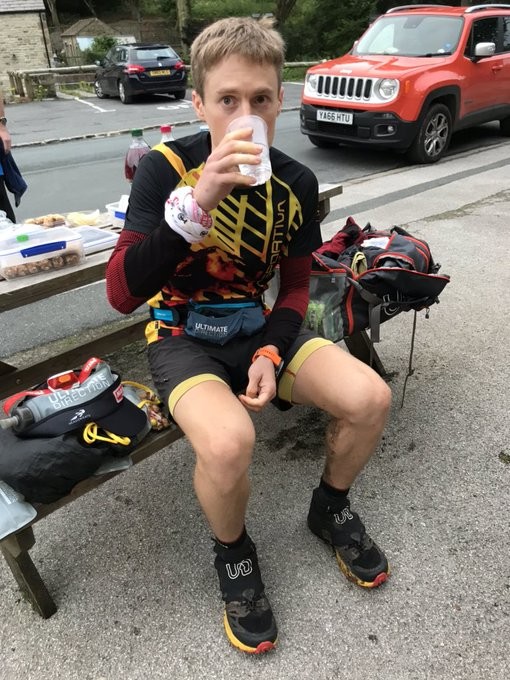
The Pennine Way, which is travelled during the Spine Race (which Kelly won earlier this year, before the pandemic), is a 268 mile (431k) trail up the middle of England from Edale to Kirk Yetholm. Over the course of that 431K, the path gains just shy of 12,000m of elevation on extremely rough terrain. For a little context, the elevation is nearly twice the height of Mount Everest and the distance is like running from Toronto to Sudbury. It’s a lot of running and climbing.
This FKT attempt wasn’t Kelly’s first time traversing this course. He has run it over the course of the Spine Race, but this week’s effort was different. He was assisted and running through the summer (as opposed to January, when the Spine Race takes place) and working with nearly 20 hours of daylight as opposed to the eight he would’ve seen last time. On top of the daylight, this was a supported effort, so he didn’t need to carry any extra supplies.
Kelly was supported primarily by his partner Nicki Lygo who documented most of the effort on Twitter. Kelly dealt with some poor weather and significant stomach issues, but he still managed to pull it off. Initially, he was flying through aid stations in under 60 seconds, but slowed to 30 to 40 minutes toward the end when he would sleep for a bit and try to soothe his stomach.
While Kelly’s effort on Pennine Way is astonishing, he’s not done yet. He took on what he’s calling the Hartley Slam. Pennine Way was Part One and the Grand Round is Part Two. The Grand Round route involves nearly 300K of running, thousands of feet of elevation gain and over 600K of biking between its sections. Kelly attempted the Grand Round in 2019, but was unable to complete it, so he’s heading back for a second try two weeks after today’s finish.
Kelly is doing this challenge for two reasons: to have something to do since his 2020 race calendar was cleared and to raise money for the Stephen Lawrence Charitable Trust, a U.K. charity that helps disadvantaged youth. If fans are looking to donate, they can do so here. Tune back in two weeks time to follow Kelly on his journey to conquer the Grand Round.
by Running Magazine
Login to leave a comment
American ultrarunner John Kelly set a new best time on the legendary Pennine Way FKT by 40 minutes
Ultrarunner and 2017 Barkley Marathons finisher John Kelly ran the FKT on the U.K.’s legendary Pennine Way early Thursday morning. The Pennie Way FKT was held for 31 years by Mike Hartley, a storied British ultrarunner, until today.
Kelly surpassed Hartley’s time by 40 minutes to finish in two days, 16 hours and 40 minutes (the previous record stood at two days, 17 hours and 20 minutes).
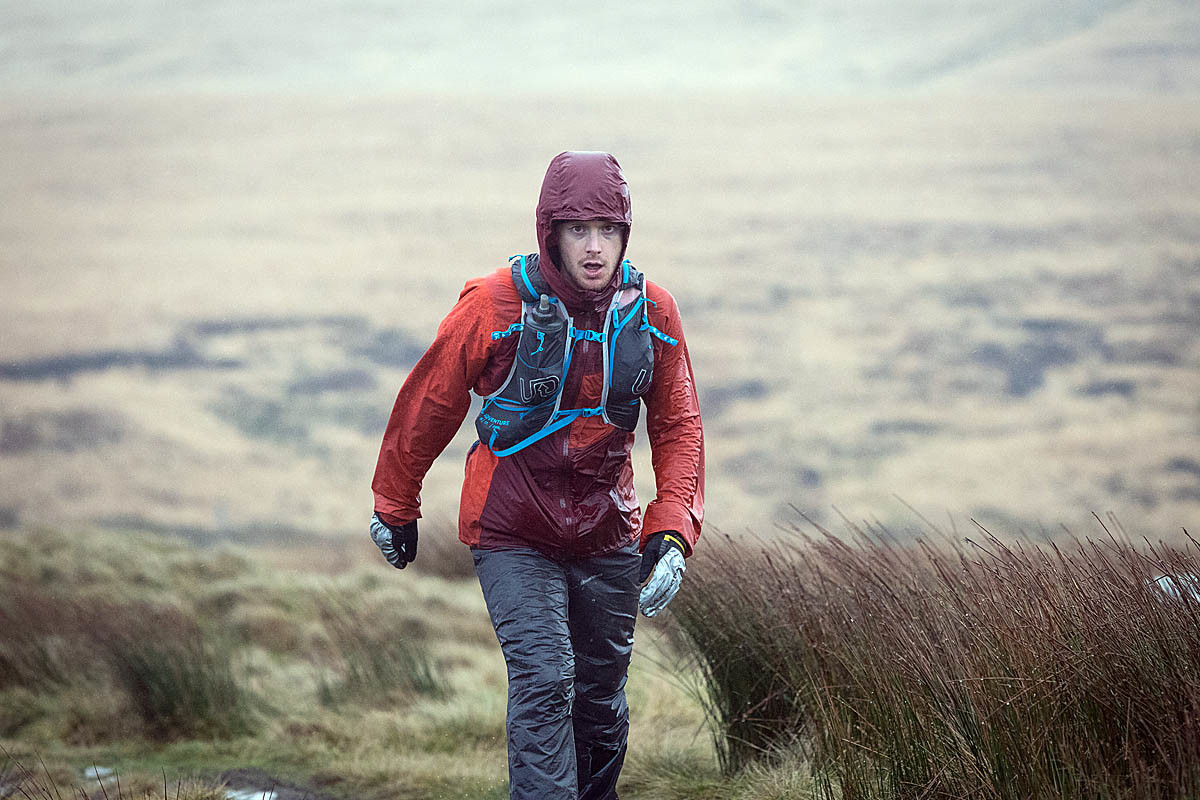
The Pennine Way, which is travelled during the Spine Race, is a 268 mile (431k) trail up the middle of England from Edale to Kirk Yetholm. Over the course of that 431K, the path gains just shy of 12,000m of elevation on extremely rough terrain. For a little context, the elevation is nearly twice the height of Mount Everest and the distance is like running from Toronto to Sudbury. It’s a lot of running and climbing.
This FKT attempt wasn’t Kelly’s first time traversing this course. He has run it over the course of the Spine Race, but this week’s effort was different. He was assisted and running through the summer (as opposed to January, when the Spine Race takes place) and working with nearly 20 hours of daylight as opposed to the eight he would’ve seen last time. On top of the daylight, this was a supported effort, so he didn’t need to carry any extra supplies.
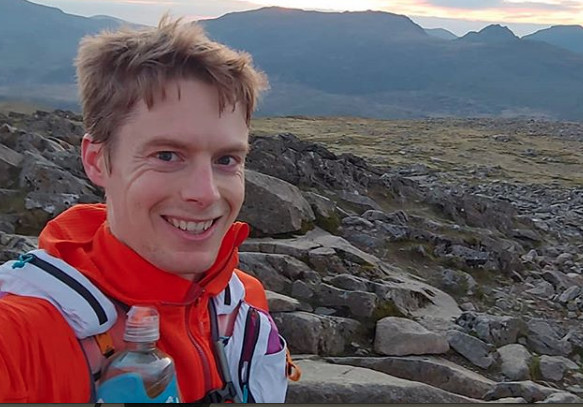
Kelly was supported primarily by his partner Nicki Lygo who documented most of the effort on Twitter. Kelly dealt with some poor weather and significant stomach issues, but he still managed to pull it off. Initially, he was flying through aid stations in under 60 seconds, but slowed to 30 to 40 minutes toward the end when he would sleep for a bit and try to soothe his stomach.
While Kelly’s effort on Pennine Way is astonishing, he’s not done yet. He took on what he’s calling the Hartley Slam. Pennine Way was Part One and the Grand Round is Part Two. The Grand Round route involves nearly 300K of running, thousands of feet of elevation gain and over 600K of biking between its sections. Kelly attempted the Grand Round in 2019, but was unable to complete it, so he’s heading back for a second try two weeks after today’s finish.
Kelly is doing this challenge for two reasons: to have something to do since his 2020 race calendar was cleared and to raise money for the Stephen Lawrence Charitable Trust, a U.K. charity that helps disadvantaged youth. If fans are looking to donate, they can do so here. Tune back in two weeks time to follow Kelly on his journey to conquer the Grand Round.
by Madeleine Kelly
Login to leave a comment
Francesca Muccini, the 2017 Vol State champion, is back on top after winning the run across Tennessee Vol State 500K crown in 82 hours
The Last Annual Vol State 500K ultramarathon across Tennessee began on July 9, and only three days later, the race saw its first two finishers cross the finish line in Castle Rock, Ga. First place went to Francesca Muccini, the 2017 Vol State champion, who finished the race in three days, 10 hours, 49 minutes and 40 seconds.
This is a women’s course record and the third-fastest time ever run at the event, regardless of gender. Second place went to Bob Hearn, who wasn’t far behind Muccini, finishing in three days and 12 hours.
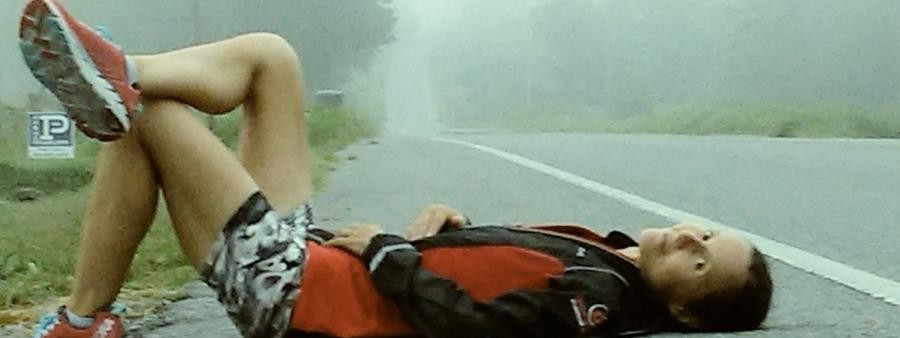
The Vol State is a Laz Lake event. Lake organizes many ultra races, including the Barkley Marathons, and they’re all mind-blowing. They’re long, they’re hard and they would make non-runners (and runners who prefer to stick to races that don’t go past 42.2K) shake their heads and ask, “How long did you say it was?” The Vol State fits that bill perfectly, and it’s exactly what ultrarunners around the world have come to expect from Lake. Its 500K course starts in Missouri, takes runners into Kentucky and then crosses over into Tennessee, where participants stay for the bulk of the race. In the final stretch, runners head into Alabama and then Georgia, where the race ends.
Runners have 10 days to finish the race, meaning they have to cover at least 50K per day if they want to make it to Georgia in time. There are no aid stations or volunteers along the course, but runners have the option of racing with a support crew (although some racers choose to run unsupported).
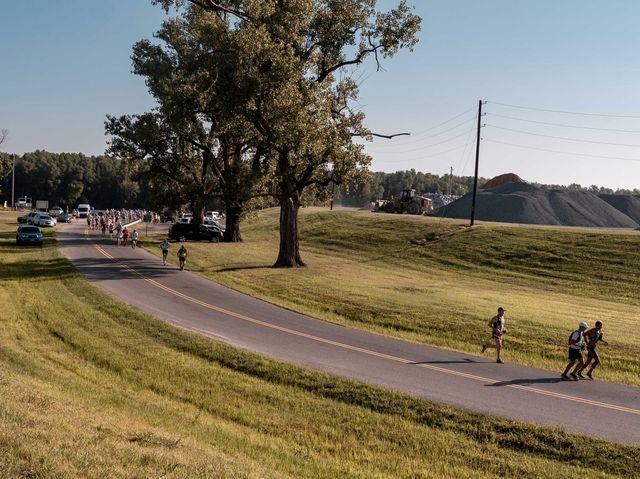
The fact that runners are given 10 days to finish this event and Muccini and Hearn did it in just over three is ridiculous. That means they averaged more than 140K per day as they worked across Tennessee. When Muccini won the race in 2017, she finished with a time of four days and four hours. She also raced the event in 2016, placing eighth overall and crossing the line as the top woman in a little more than five days.
This was Hearn’s first crack at the Vol State, but he’s no stranger to big results either. Earlier this year, he won a 100-mile race in South Carolina, and in 2019, he finished in second place at the Six Days in the Dome event in Wisconsin, where he ran 530 miles in less than a week.
The runners still working away at the Vol State course have more than five days to make it across Tennessee, into Alabama and then into Georgia to finish the race.
by Ben Snider-McGrath
Login to leave a comment
Laz Lake’s The Great Virtual Race Across Tennessee 1,000K, has over 18,000 signups
Just two weeks ago, Laz Lake, race director of the Barkley Marathons, launched the registration page for his latest event, The Great Virtual Race Across Tennessee 1,000K, and as of today, over 18,000 people have signed up.
The race officially began on May 1, and runners have until August 31 to complete the 1,021.68K route. Although some runners have already been at it for almost a full week, registration is still open, and the total number of participants keeps climbing. Lake’s race is certainly one of the longest on the 2020 virtual event calendar, but it might claim the title of biggest field, too.
Runners won’t actually run across Tennessee, since it’s a virtual race, but their progress will be monitored and updated on a live map of the state and race route. This way, there’s a visual of how far an athlete has come and how much longer they have to go.
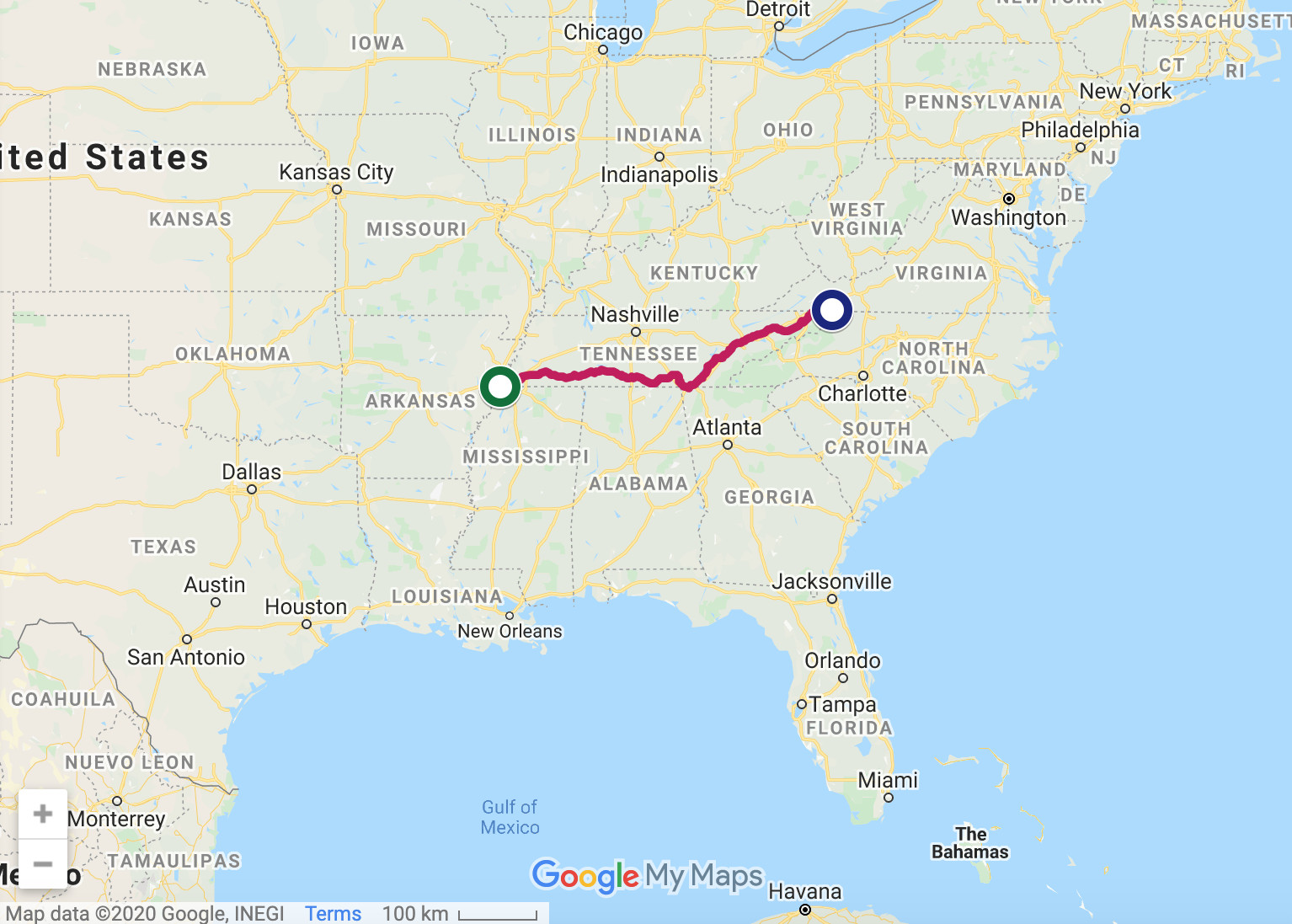
They will also be able to see the progress of fellow runners, so racers will know exactly where they stack up against the 18,000 other competitors. For people who think 1,000K isn’t far enough, there’s an out-and-back 2,000K option.

The race entry fee is $60, and with over 18,000 racers, that’s a lot of money (over $1 million). On the event signup page, there is a donation button where people can give money to help Feeding America, an organization that provides food and support to over 40 million Americans each year.
The race webpage doesn’t specifically say what percentage of race entry fees will be given to Feeding America, but an overall goal to raise $100,000 is listed on the site.
In addition to The Great Virtual Race, there’s the Doggie Run Across Tennessee for Animal Shelters.
This event is for people who want to run with their dogs (as the name suggests), and it costs $30 to enter. All of the proceeds from this event will be donated to animal shelters in the U.S.
Registration for the race is open until August 1, but as the website states, “the longer you wait, the less time you have.” August is still a long way off, but if you leave your 1,000K race until the last 30 days, you might have a hard time finishing before the cut-off, so sign up sooner rather than later if you plan on racing.
by Ben Snider-McGrath
Login to leave a comment
Ultrarunner Gary Robbins ran 100 miles on treadmill in virtual race to raise money for the B.C. Search and Rescue Association
This past weekend, Gary Robbins went for a run on his treadmill, and he didn’t stop for almost 26 hours. He ran in the Aravaipa Strong virtual race, competing in the 100-mile event, and his run doubled as a fundraiser for the B.C. Search and Rescue Association. Running for 26 hours is hard enough, but Robbins made it even tougher on himself and climbed around 17,500 feet in addition to running 100 miles.
His challenge has raised over $15,000 for the B.C. Search and Rescue Association, and donations can still be made to support the cause.
The British Columbia Search and Rescue Association is a non-profit society that represents 79 search and rescue groups across B.C. Across the province, 2,500 volunteers are available in over 80 communities 24/7, collectively putting in 100,000 hours of work each year.
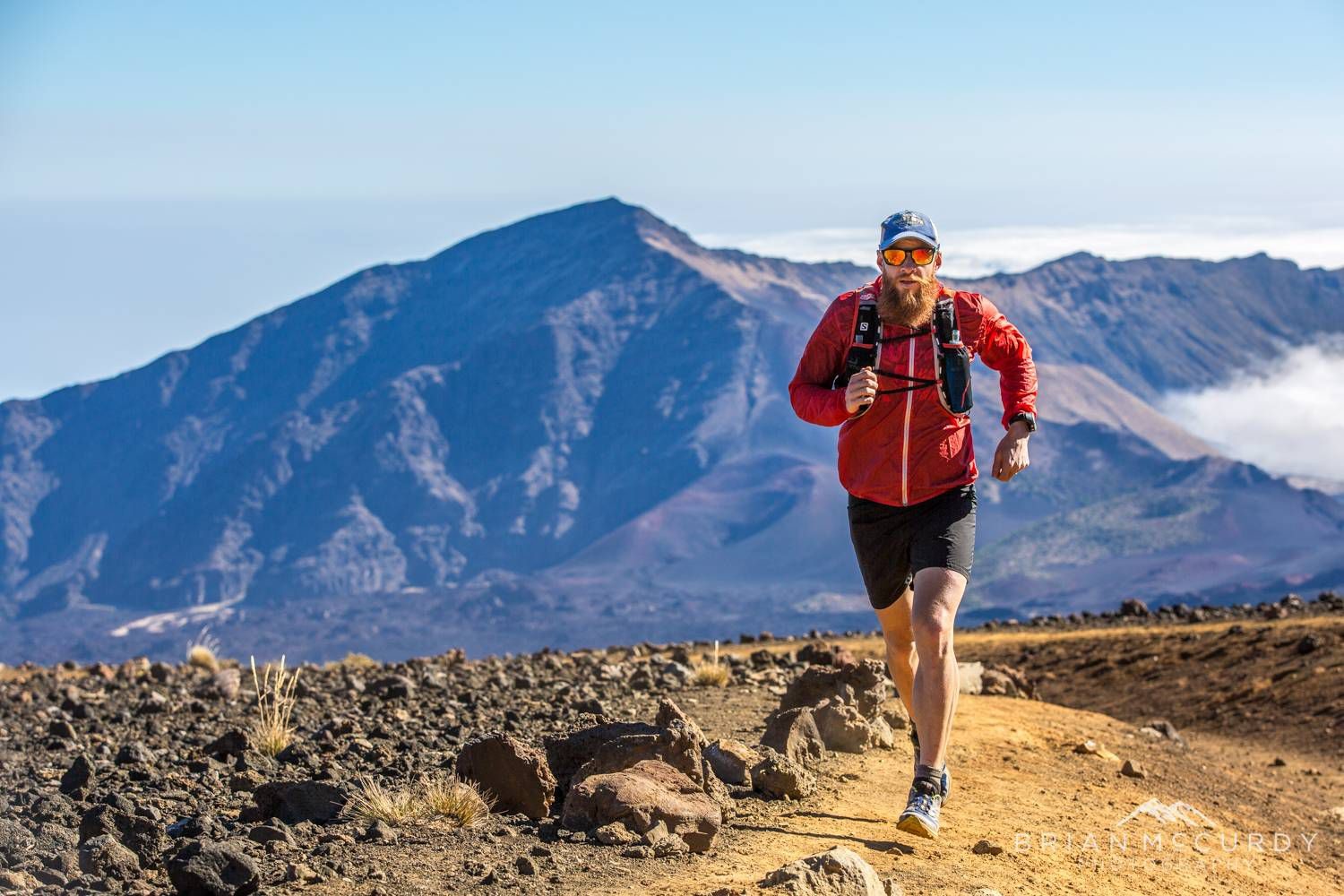
These groups have an incredible rate of success, with 95 per cent of subjects found or rescued within the first 24 hours of a call. The Search and Rescue Association gets some support from the provincial government, but it relies on donations to stay active.
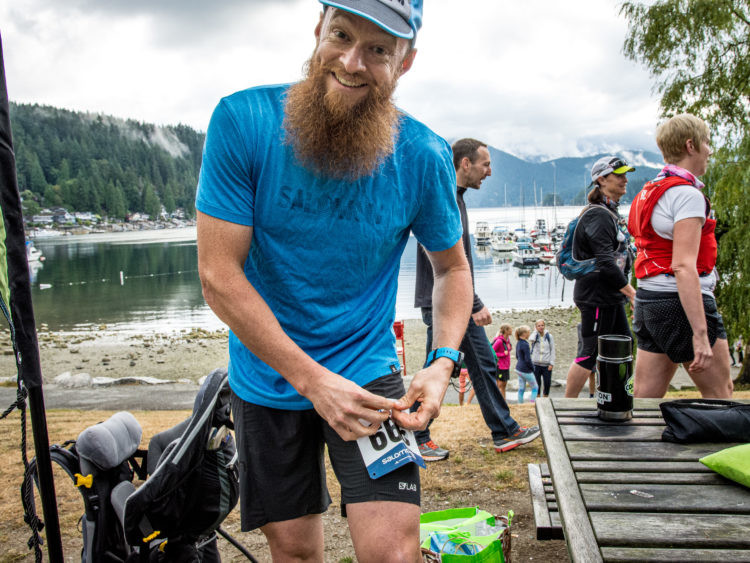
Robbins hoped to raise $5,000 for the non-profit, but he has tripled that goal and the total now sits above $15,000.
Robbins’ official time for the 100-mile run was 25:53:42. Although this is almost 10 hours slower than the winner of the 100-mile Aravaipa Strong event (American Sarah Emoto won the virtual race in 16:15:46), Robbins likely had a much harder run than any of the other competitors as it included 17,500 feet of elevation.
Robbins is no stranger to ultramarathons, and before the coronavirus outbreak he was gearing up for another shot at the Barkley Marathons this year. Even with a history of ultrarunning, Robbins struggled with the treadmill run.
“Happy to have gotten through this so that I never have to think about anything like this again,” he tweeted. “It was challenging in all the ways I thought it’d be and lots more ways I hadn’t envisioned. My body is completely wrecked.” His wife, Linda Barton-Robbins, also tweeted post-race, saying that her husband couldn’t even make it up their stairs at home.
The Aravaipa Strong virtual race took place from April 17 to 26, and runners could choose from seven distances, starting with 5K up to 100 miles. The races featured over 2,000 runners worldwide from 29 different countries. Ten per cent of the proceeds from the race were donated to the COVID-19 Solidarity Response Fund.
by Ben Snider-McGrath
Login to leave a comment
The Quarantine Backyard Ultra is a chance to race virtually for free this spring
If you’re itching to race this spring but don’t know where to turn, maybe just look to your backyard. The Quarantine Backyard Ultra is a free race that anyone can enter, and you can do it from the comfort of your own home or on a route nearby. Canadian ultrarunner and treadmill-running world record-holder Dave Proctor will be running the Backyard Ultra, which will be broadcast on YouTube starting on April 4, and the Barkley Marathons‘ Laz Lake will be the honorary race director.
The race starts at 6 a.m. PT on April 4. All runners will connect via Zoom video call, and this is where their progress will be monitored. Athletes can choose between running on a treadmill or on a route that starts and finishes at their home. Runners who choose the former option must point their camera at their treadmill after they complete each lap to prove they completed the distance (each lap is 6.706K).
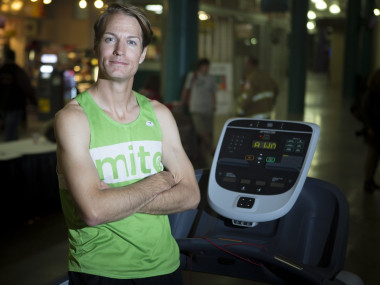
Racers who opt to run outside must use a GPS watch or smartphone to record their distance run, and at the end of each lap, they must show proof of the completed lap to the Zoom audience. Once runners complete each lap, they can relax until the next lap begins. The last person running is the winner.
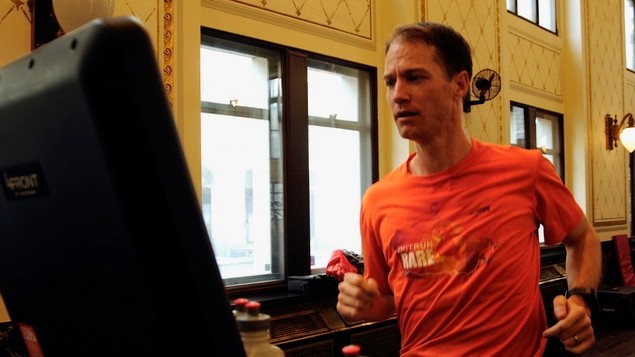
The race will be live streamed on YouTube, which should satisfy many running fans’ needs for live racing. Better yet, the event will have live updates on its Facebook page written by Lake, and, if all goes well with Zoom, Lake will also provide colour commentary over the live feed as well. Last year, Lake travelled to Calgary and acted as the honorary race director for Proctor’s Outrun Backyard Ultra, which was modelled after Lake’s Big’s Backyard Ultra in Tennessee.
The race is being organized by Personal Peak, an endurance coaching company witch which Proctor works. In May, Proctor was set to tackle the TransCanadian speed record attempt, and Personal Peak coaches were going to be his crew for the run. When he had to postpone his attempt, Proctor decided he had to do something to replace it.
“His fitness level wasn’t going to go to waste,” says Stephanie Gillis-Paulgaard, Proctor’s publicist. “Dave’s a competitor, so we said, ‘Let’s see who else we can get on board.'” So, Personal Peak set the race up and they “extended that invitation to all of the best ultrarunners,” Gillis-Paulgaard says. As it stands now, 11 other elite runners have confirmed for the April 4 race, but Gillis-Paulgaard, Proctor and the Personal Peak team hope to attract runners of all levels.
“Hopefully, for those people who have trained over the winter months, this will give them something to race, whether they run one lap or 50,” Gillis-Paulgaard says. The winner of the event will win what is, according to the race website, “soon to be world’s most coveted prize: The Golden Toilet Paper Roll.” In a time where race opportunities are sparse and toilet paper is hard to come by, you can get both in the newest virtual race.
by Ben Snider-McGrath
Login to leave a comment
No finisher at the Barkley Marathons again this year (also, no race)
Even the legendary Barkley Marathons couldn't make it through a pandemic. The Tennessee ultramarathon was called yesterday and remains without a finisher to the race since John Kelly in 2017.
The ultra trail race was set to take place later this month or early April in Frozen Head State Park. The 100-mile course is limited to 60 hours. It's considered one of the toughest races on the planet in part because it is both physically and mentally exhausting.
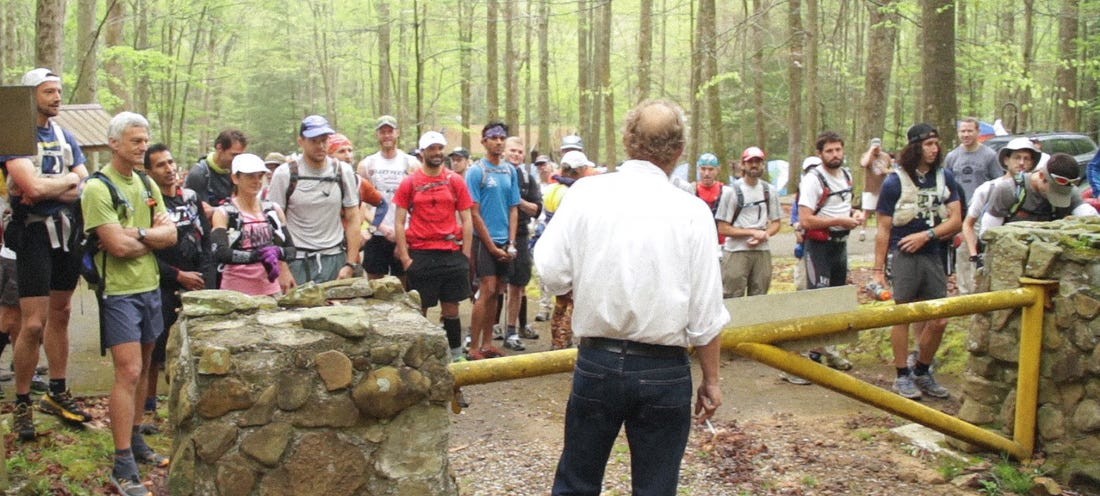
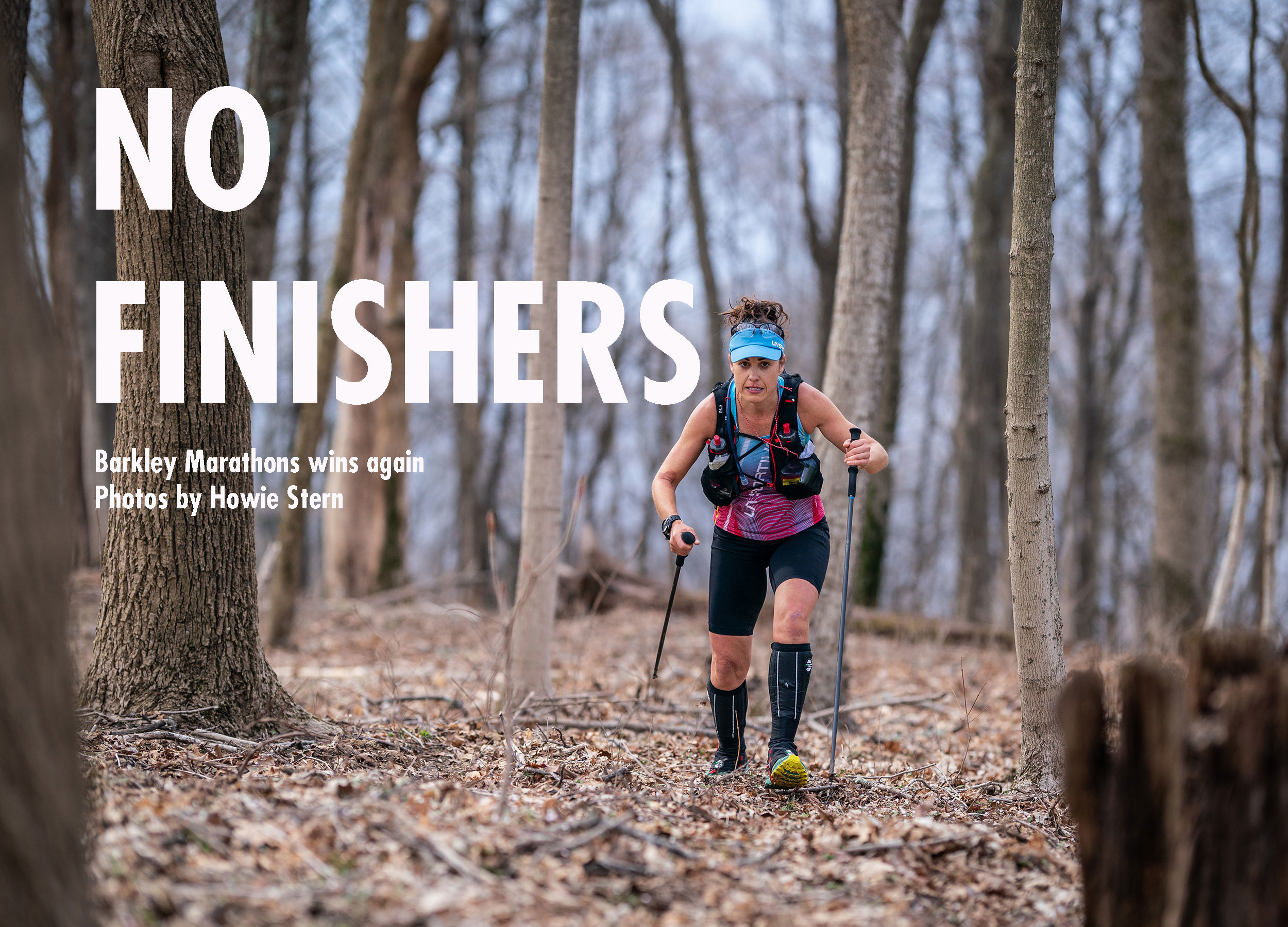
There is always a great deal of interest in the race, and this year was no different as Canadian ultra trail runner Gary Robbins was set to make his return to the race after a long recovery from injury.
Robbins hinted that the race would likely be cancelled with a social media post on March 14, but also said that he was ready and was nearing peak fitness in his training.
"I feel like this might be the fittest I’ve ever been heading into the race. Certainly, it’s the best my legs have ever felt at this point in time. Having missed almost two years due to injury, but continuing to train over 500 hours on the bike in 2019, seems to have done nothing but strengthened my body overall," he wrote.
Race founder Gary "Lazarus Lake" Cantrell was working hard to try to make the race happen, even after the U.S. travel ban resulted in a number of European runners having to cancel.
Without a doubt, "Laz" will be back soon enough to enact his unique brand of punishment on unsuspecting runners who might think a run in the Tennessee woods sounds like fun.
Login to leave a comment
What to do when injury happens
David Roche, author and coach to many top trail runners, dispenses advice on what to do when injury happens.
Even the strongest runners occasionally get injured. If you think you may be injured and this is not something you’ve dealt with before (or even if it is), running coach and The Happy Runner author David Roche of the SWAP Adventure Team (Some Work, All Play) along with Black Canyon 100K winner Matt Daniels has put together a very simple how-to video for Strava on exactly how to approach the situation.
Roche coaches a lot of successful trail runners like OCR badass Amelia Boone, Western States winner Clare Gallagher, Barkley Marathons finisher John Kelly, Canada’s Kat Drew and Canadian Trail Running’s own Tory Scholz, and his approach is holistic–he’s concerned not just that you take care of the injury, but that you remain, well, a happy runner. While injury prevention is important, Roche acknowledges that we can’t always avoid injury entirely. That’s why he formulated these guidelines on what to do when despite your best efforts, something goes wrong with your body. (Roche coaches road runners too, by the way.)
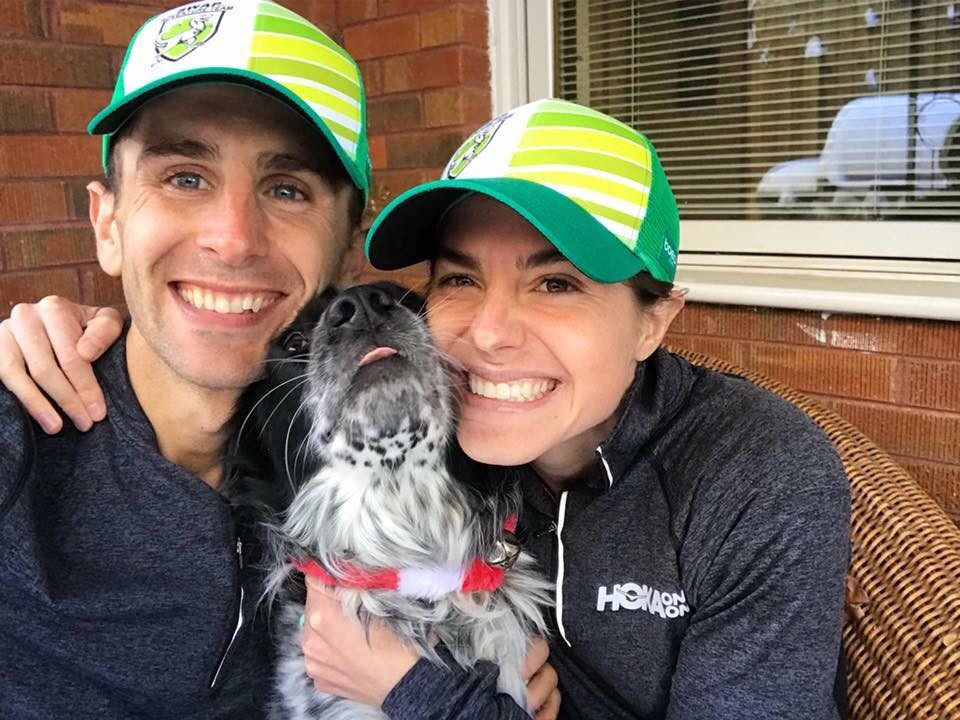
Here are Roche’s Rules for when you think you might be injured.
1. If it hurts to walk, don’t run.- It may seem like basic common sense, but you’d be surprised how may runners routinely ignore it out of a desire to prove how tough they are, or to reassure themselves that they’re not really injured. But if you run on an injury, it will likely get worse.
2. There’s no shame in stopping.- One of Roche’s biggest assets as a coach is that he talks about shame, something that comes up frequently in injured runners who may think they’re wimping out if they don’t finish a workout (or a race) because something hurts. If you ignore rule #1, fine, but don’t ignore rule #2. Stop and take what Roche calls the Walk of Pride (rather than the more traditional Walk of Shame) back to where you started, and “live to fight another day.”
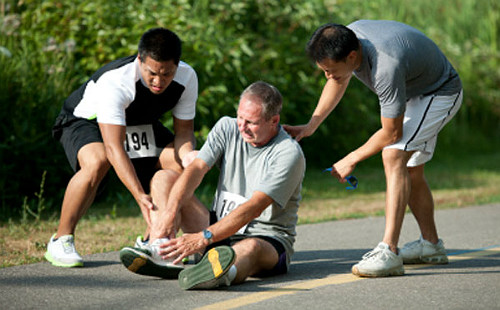
3. Talk to someone.- Confide in someone close to you that you’re injured, someone who cares about you enough to insist that you seek treatment. Many injured runners put off seeking treatment in the hope that whatever it is will get better on its own. (And we all know where that ends.) Whether it’s your family doctor, physiotherapist or chiropractor, getting seen will not only help you get on the road to recovery, it’ll help you cope mentally, too.
Bottom line, you want to get rehabbed so you can get back out there ASAP. If you follow Roche’s three rules, there’s no reason why you can’t do just that.
by Anne Francis
Login to leave a comment
The man who inspired the Barkley Marathons has died at age 70
Barry Barkley of Shelbyville, Tenn., for whom race director Lazarus Lake (aka Gary Cantrell) named the Barkley Marathons, died on December 5. An obituary in the Shelbyville Times-Gazette says Barkley “loved the outdoors, playing pool, and his animals.”
Trail Running Magazine reach Laz by email. He offered the following on his friend’s passing: “the ultramarathon community lost one of its own this week, with the passing of barry barkley (70). most only know of him indirectly; from the race that bears his name, but he has been a quiet contributor to the sport for the past 42 years. it was always his preference to operate quietly in the background, but he did get enjoyment from the notoriety of his namesake race. since 1979 literally thousands of ultrarunners have met barry at the races. only a handful ever knew who he was. that was how he wanted it. Barry barkley will be sorely missed.”
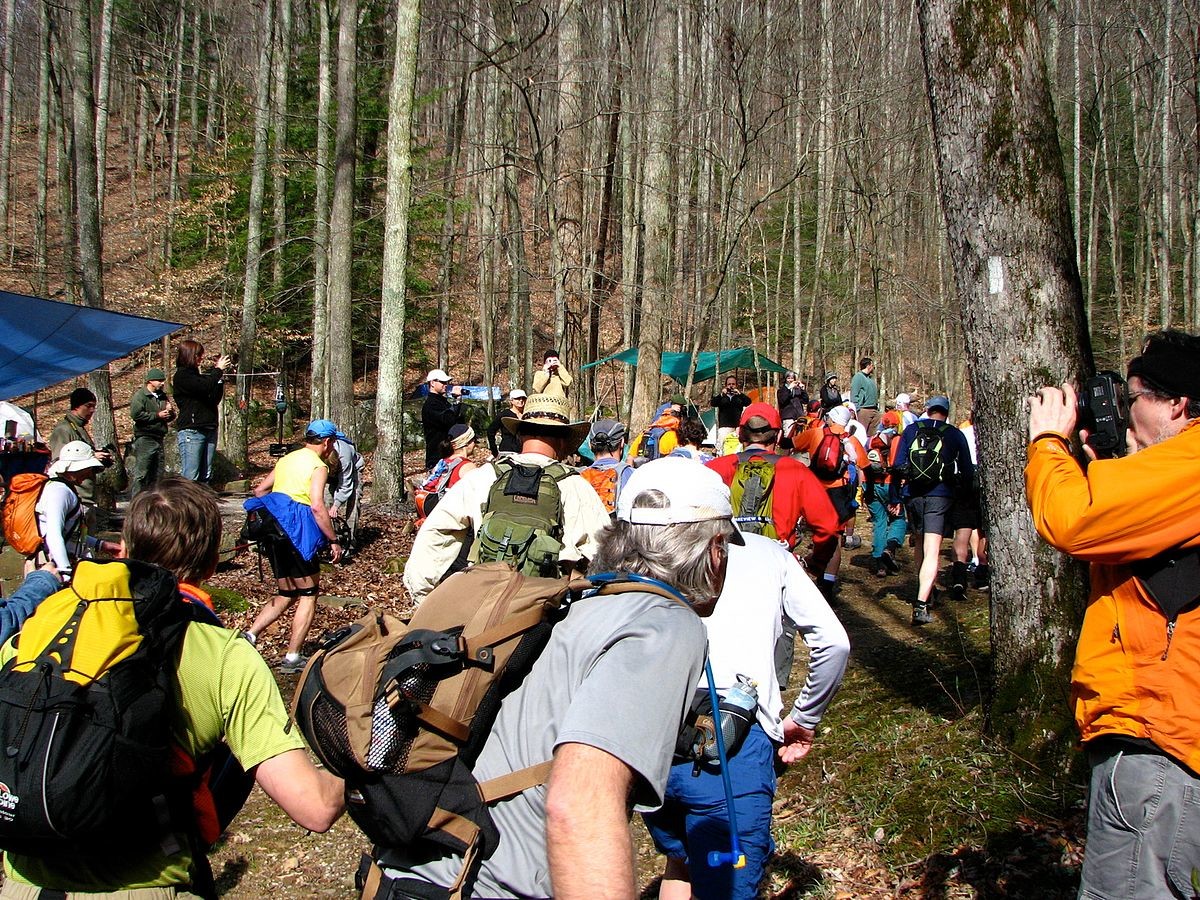
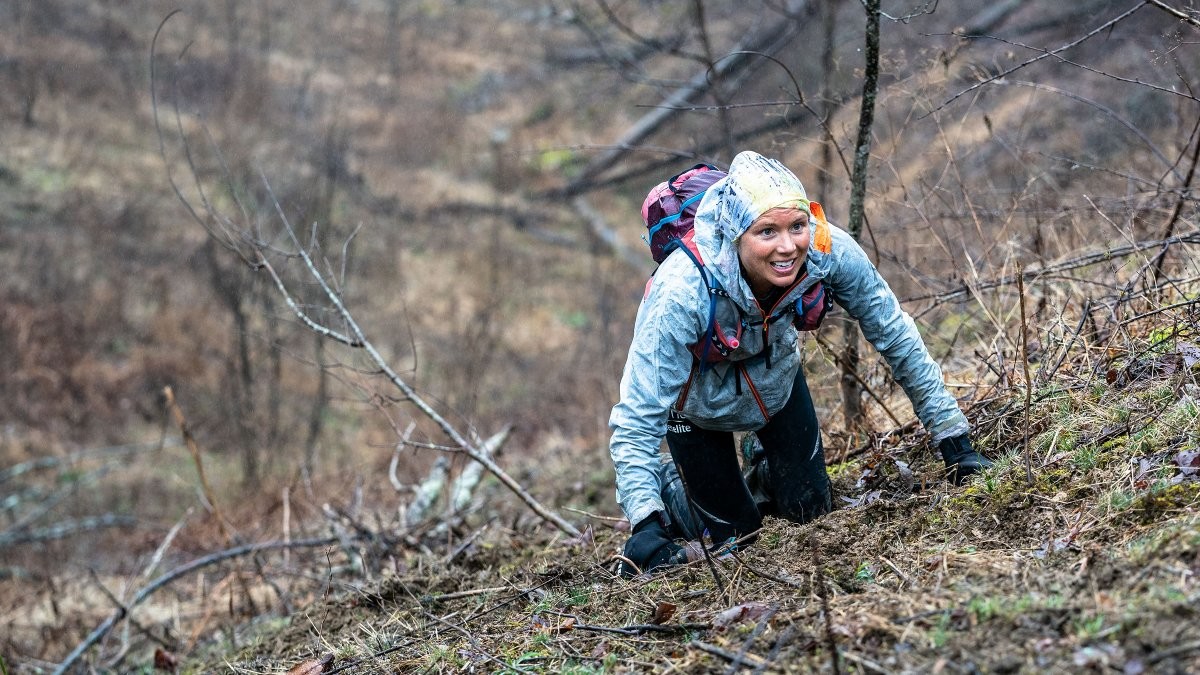
Barkley’s photo shows he bore a marked resemblance to Laz himself, who started the race in 1986 after hearing about the 1977 escape of James Earl Ray (the man who killed Martin Luther King, Jr.) from Brushy State Penitentiary. After more than two days on the lam, Ray had only covered 13 kilometres before being re-captured. The former ultrarunner Laz, who knew the area well, is said to have responded, “I could do at least 100 miles,” and created the race, naming it for his friend, neighbour and running partner. The race course goes through the grounds of Brushy State, which closed in 2009.
The race is a notoriously difficult 100-miler, with a number of quirks that set it apart from any other race on Earth. It involves five laps of a 20-mile loop that many believe is significantly longer than 20 miles, along an unmarked course that changes slightly every year, with huge elevation gains and losses. GPS are not allowed–Laz issues each racer an inexpensive watch that shows only the time, counting down from the 60-hour cutoff. Cheating is impossible, since runners must present specific pages torn from books hidden along the course, in order to start the next lap.
Runners can replenish their water stores at two locations, but otherwise there are no aid stations–they can meet their crews only between loops, back at camp in Wartburg, Tennessee’s Frozen Head State Park.
by Anne Francis
Login to leave a comment
New documentary on Nicky Spinks at the Barkley Marathons
The doc follows the British ultrarunner on her quest to become the first woman to finish the infamously difficult race.
Back in March, the British runner Nicky Spinks, 52, was considered the most likely of the seven women registered for the Barkley Marathons to become the first-ever female in the race’s 33-year history to finish. Along with Canadian Stephanie Case (a Barkley veteran who had attempted the race in 2018), Spinks had to bail on the second of five 20-mile loops. Her sponsor, the British gear company Inov-8, in partnership with Summit Media, has produced a documentary on her attempt, entitled Last Women Standing: The Barkley Marathons 2019.
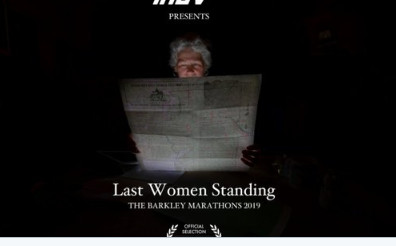
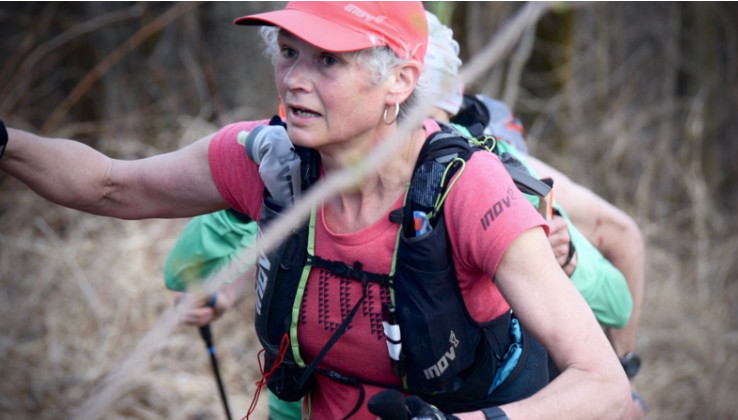
Spinks is the first person ever to complete doubles of all three classic British fell-running rounds, which link numerous peaks in a circuit (the Paddy Buckley Round, the Ramsay Round and the Bob Graham Round), among many impressive accomplishments in her fell-running career. She crewed Damian Hall to a fifth-place finish at UTMB in 2018.
Login to leave a comment
A Response from a Proud “Lazy Parasite†Trail Runner
Marc Peruzzi’s recent Ouside magazine column about trail work clearly touched a nerve in the running community. Part of his argument is fair criticism, but he got some important things wrong.
I’ve been a competitive trail runner for over a decade; I’ve participated in some of the most well-known and competitive ultras around the world, including the Barkley Marathons, the Ultra-Trail du Mont Blanc, and the Western States Endurance Run.
I’ve also been a human rights lawyer for about the same period of time, and I take a deep interest in how we in the trail and ultrarunning community contribute to broader society. I know I’m not alone in this—as trail runners, many of us pride ourselves on being responsible stewards of our environment and contributing members in the outdoor sports community. We pick up trash left behind on the trails by inconsiderate urbanites. We don’t cut switchbacks, and we know how deep a hole to dig to bury our own poop (minimum: six inches).
We see ourselves as the “good ones”—runners who lightly tiptoe along mountain and forest paths, leaving no trace. Our intimate connection with the outdoors makes us protective of the wilderness that we enjoy, and that is something we hold tightly as part of our culture and identity as runners.
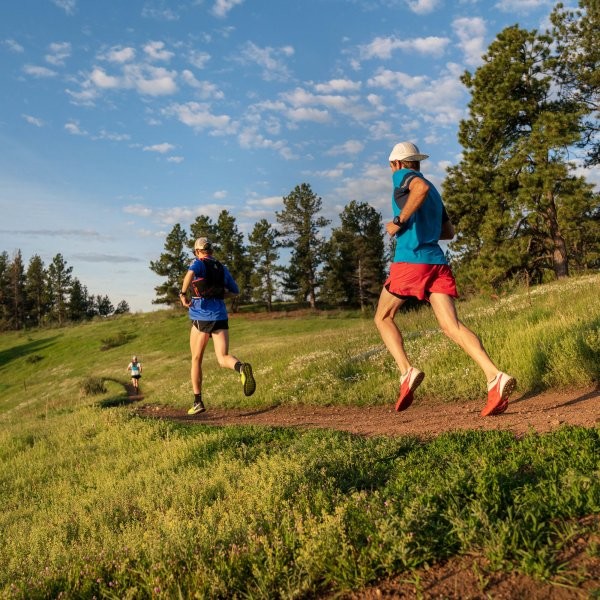
Given all that, it’s no surprise that when Outside published an article on May 22 calling trail runners “lazy parasites” and “deadbeats,” the reaction from the trail and ultrarunning community was swift and fierce. The writer, Marc Peruzzi, claimed that we simply aren’t pulling our weight when it comes to trail work. “When compared to mountain bikers and hikers, trail runners are the least likely to volunteer to build and maintain trails,” Peruzzi wrote. Leaning heavily on anecdotal evidence to back up his views, Peruzzi tried to hit us right where he knew it would hurt—and it did.
Candice Burt, an elite ultrarunner and the race director of the Triple Crown 200 mile series, wrote in a response on her website that she was shocked when she read the article. “I have no issue with asking user groups to do more to give back,” she wrote. “However, this article was not so much a call to action as it was a full on insulting diatribe aimed at my community.” For her part, Burt wrote about how she organizes an annual volunteer work party to maintain trails that would otherwise cease to exist, and how her company donates over $20,000 to the Tahoe Rim Trail Association for building and maintaining trails. “Trail running and stewardship are my life,” she wrote, “[It] has always been an important part of the trail running culture.” Many others in the trail community echoed her reaction.
A number of prominent ultramarathon races in North America in addition to Fat Dog and Burt’s 200 mile race series, require volunteer service from entrants, typically in the form of eight hours of trail maintenance. (Peruzzi briefly acknowledged this in his story.) These races include the Western States Endurance Run, the Vermont 100 Endurance Race, Angeles Crest 100 miler, and the Wasatch Front 100 Mile Endurance Run.
In short, we in the trail running community know that we aren’t the lazy parasites and deadbeats Peruzzi claims we are. So why does he have this impression? And are we taking his criticism so personally because there is a kernel of truth to it? Could we be doing more?
The short answer is yes, we could be doing more. Adam Chase, the President of the American Trail Running Association (ATRA), responded to Peruzzi’s article on Facebook by saying: “I must confess. We are guilty as charged…we need [to do] more. A lot more.” Indeed, as trail running continues to increase in popularity, it will become even more important that we expand our volunteer and conservation efforts.
Clare Gallagher, an elite ultrarunner and environmental activist, has not been shy in calling us out on this and urging us to do more, long before Peruzzi’s story was published. “If we are not engaging with the politics of public land protections, we are freeloading,” she wrote in September 2017.
While I’m more than willing to admit that we need to do more as a community, I refuse to accept the suggestion that we are lazy deadbeats who “are the least likely to volunteer to build and maintain trails,” as Peruzzi claims.
Does that mean that we aren’t deeply involved at a grassroots level or that we don’t care? Hell no. We may be a ragtag bunch, but we are compassionate and committed. From the moment I joined this community, I understood that the expectation was to give back, whether through trail work, guided running for visually impaired athletes, or simply picking up garbage left behind by others. Advertising these good deeds was certainly not required, and it was maybe even discouraged.
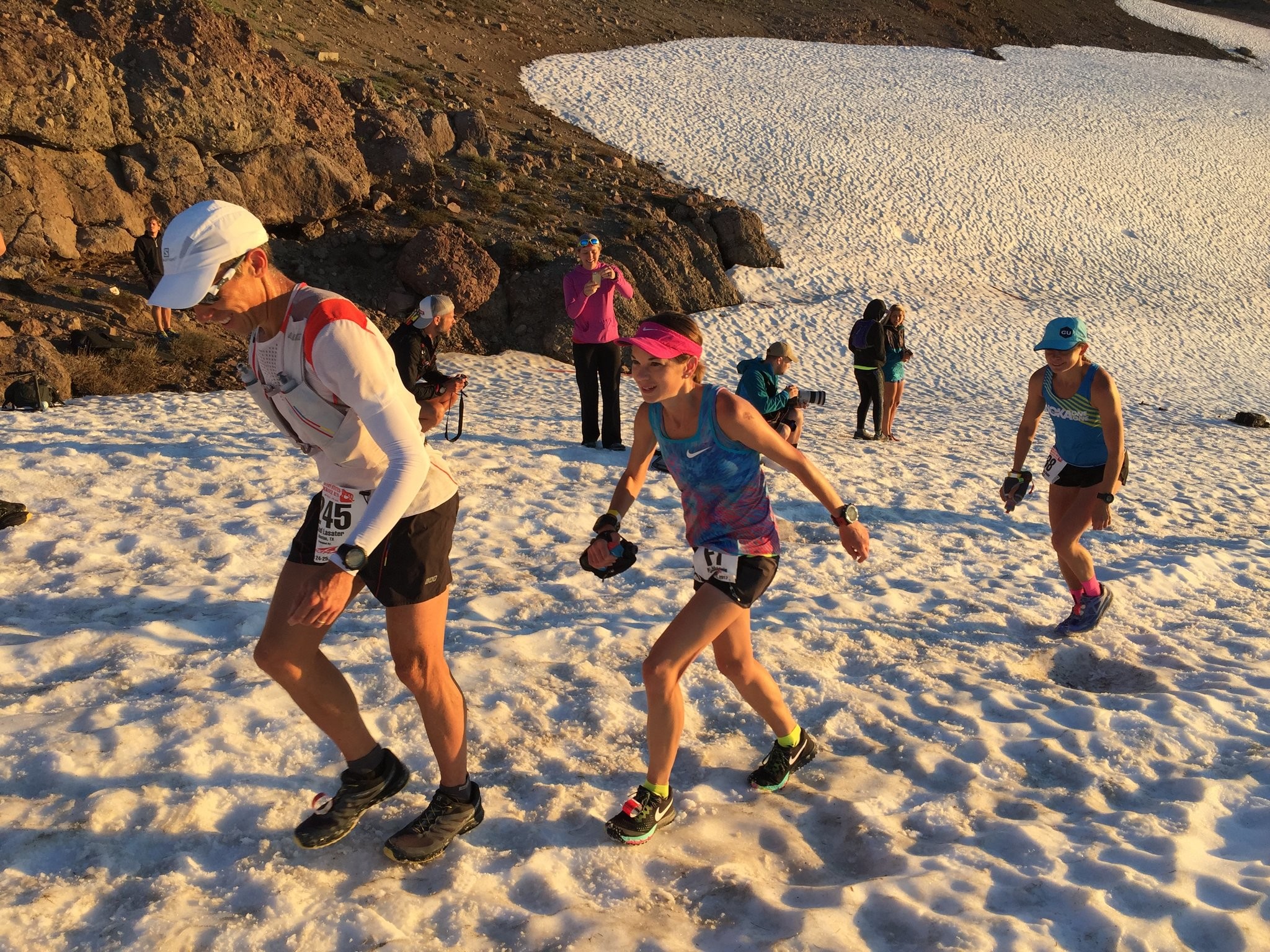
But rather than engage in a pissing contest with our fellow athletes over who is doing more to protect our common lands, I’d prefer to join forces to make us all more effective.
The definition of a parasite is something that exists by taking from or depending on something else. In that sense, I will happily embrace Peruzzi’s label. I am a trail running parasite: I truly rely on the trails to exist. For that reason, I see it as my duty to ensure that the trails I run on—and all the ones I haven’t yet—are protected. I will do this by working alongside my trail running companions, and learning from my mountain biking colleagues. The only way to make progress on these issues is to band together, not drive each other apart. As for the rest of Peruzzi’s article? Well, it’s going in a six-inch hole, where it belongs. See you out on the trail.
(Editor’s note: this is a condensed version of Stephanie’s article. Click on the link to read her entire article.).
by Stephanie Case for Outside Online
Login to leave a comment
No finisher at Barkley Marathons 2019
It might be hard to imagine a race in which the entire field DNFs, but it’s not unusual at the Barkley Marathons, and it happened for the second year in a row as the race came to an end earlier this morning. The results were somewhat better than last year, with six Fun Runs recorded (three 20-mile loops in under 40 hours). Last year Canadian Gary Robbins was the only runner to achieve a Fun Run, and there were no finishers.
Last night with only two minutes to go before the 9:23 p.m. cutoff, Karel Sabbe and Greig Hamilton set off on loop four. Shortly afterwards, Guillaume Calmettes arrived in camp, well within the cutoff for a Fun Run (which was 1:23 a.m. Monday) but too late to be allowed to attempt a fourth loop. He was tapped out (referring to the playing of Taps by a bugler for each runner who DNFs).
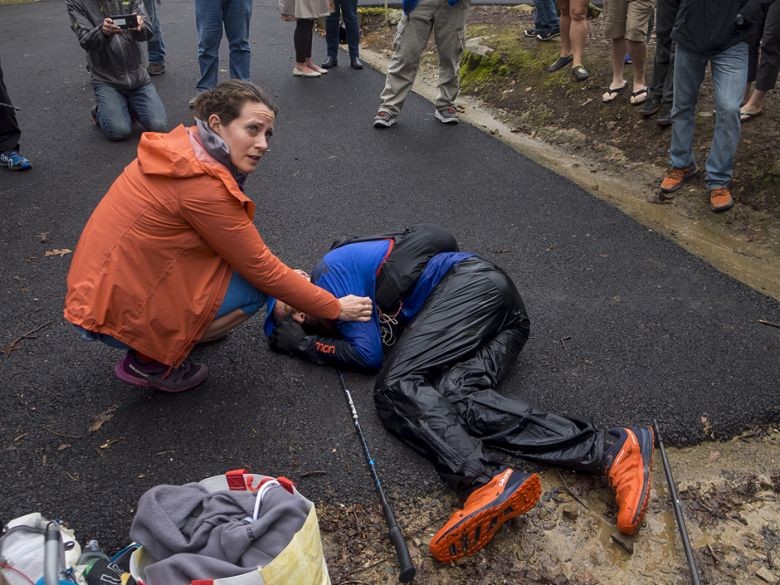
Tomokazu Ihara, Johan Steene and Jamil Coury all finished Fun Runs last night, but were tapped out upon returning to camp.
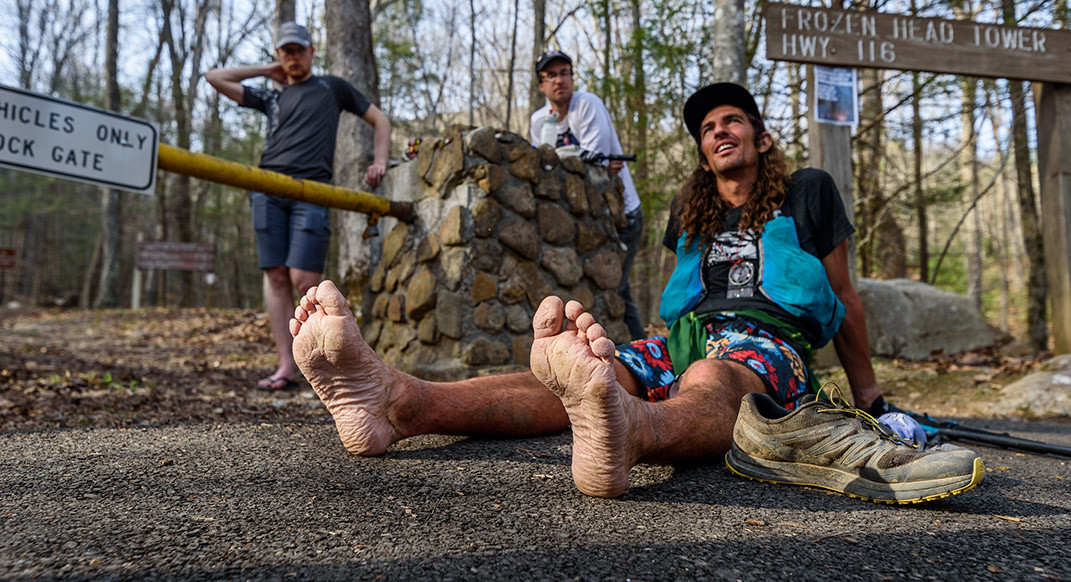
Greig Hamilton was the first to say “uncle” on loop four. Sabbe hung in for another few hours before packing it in and returning to camp around 3:30 a.m.
Gary Robbins noted the significance of the final two to drop out being Barkley “virgins.” Sabbe, a dentist from Belgium, got a lot of attention for setting the most recent FKT on the Appalachian Trail in August 2018. Hamilton, who is from Christchurch, New Zealand, was the 2016 world champion in rogaining (long-distance orienteering).
But at the Barkley Marathons, your race pedigree means very little. Two of this year’s strongest contenders, John Kelly and Jared Campbell, shocked everyone following with their early DNFs. 2017 finisher Kelly, with a strong lead after two laps, headed for his tent for a nap, emerging later to announce he no longer wanted to continue, and tapped himself out on the bugle. Campbell, with three Barkley finishes on his resume, kept fans guessing for hours as to his whereabouts after rolling his ankle badly on the first loop.
Login to leave a comment
2019 Barkley Marathons is 'love and puppies' for Laz
Some of the world's best runners are in Morgan County for this weekend's Barkley Marathons, a brutal 100-mile race that only 15 people have finished in 33 years.
Elite ultra-marathoners from six continents packed the campsite at Frozen Head State Park on Friday in Wartburg, Tenn. Now they patiently wait for the unpredictable start of the Barkley Marathons, a sinister 100-mile race filled with obstacles that pester routine-loving runners.
"There is nothing out there but love and puppies," laughed Gary Cantrell as he read the text on this year's shirt. "I think we'll have a higher finish-rate because of the positive wholesome attitude this year. Aren't there little hearts up in this corner [of my shirt]?"
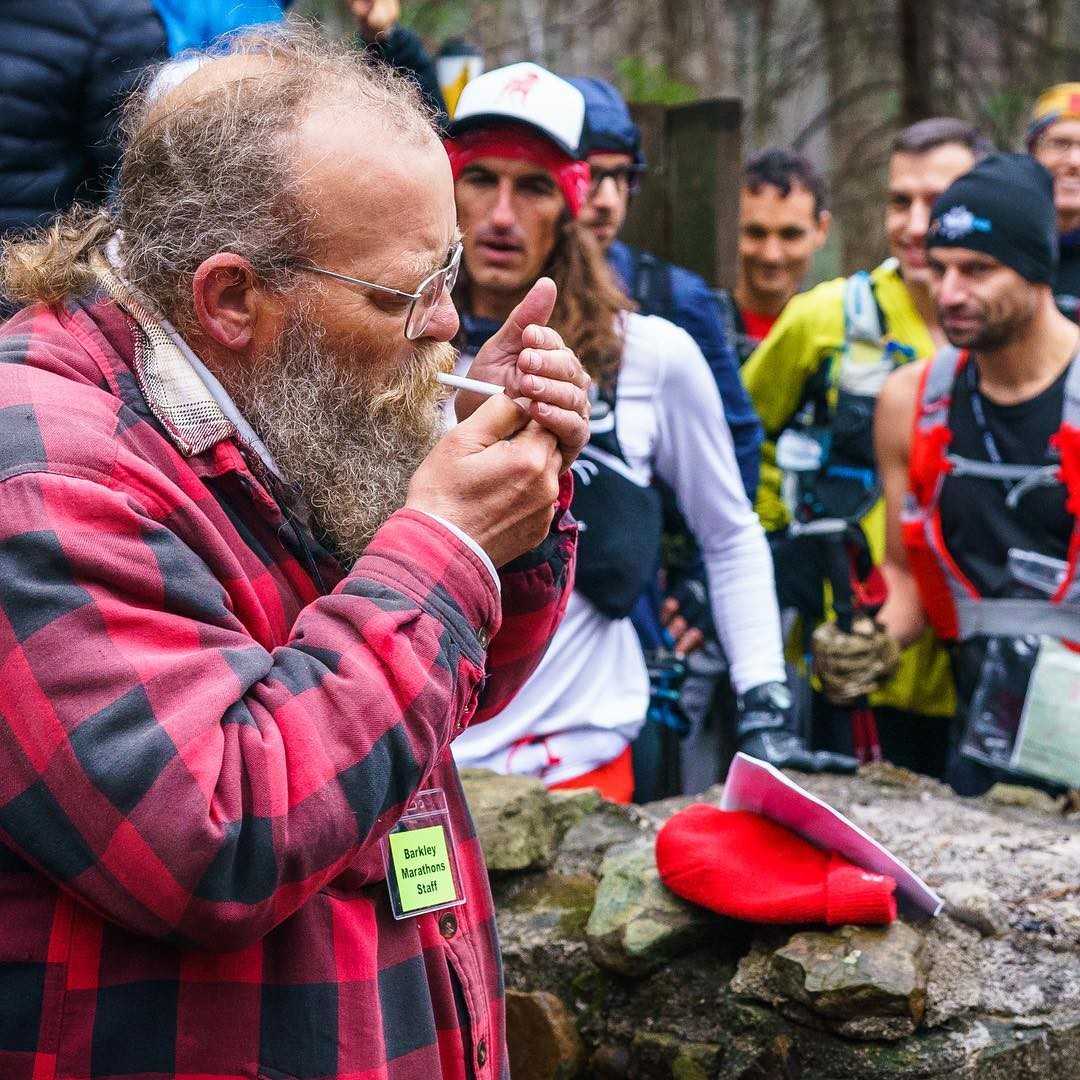
Cantrell, also known as Lazarus Lake or Laz, helped concoct the ridiculous race that only 15 people have finished in 33 years. Some runners are repeat-finishers, making a total of 18 times someone has completed the 100-mile race within the 60-hour time limit.
If you have missed WBIR's many reports on the Barkley Marathons in previous years, here is a brief synopsis of the event: Runners write an essay and apply for entry in the Barkley Marathons. 40 runners are chosen each year from around the world.
Runners have 60 hours to complete five loops of 20+ miles through Frozen Head State Park. The course is unmarked and changes every year.
Runners get a map (poorly-drawn) of the course before the race begins. The start time is unknown, other than sometime between midnight and noon on Saturday.
A conch shell is blown to signal one hour until the start. Laz lights a cigarette to begin the race.
The yellow gate at the campsite and Brushy Mountain prison are always part of the route. Keeping with Laz's positive attitude, there has technically been a winner every year of the Barkley: a runner or the mountain.
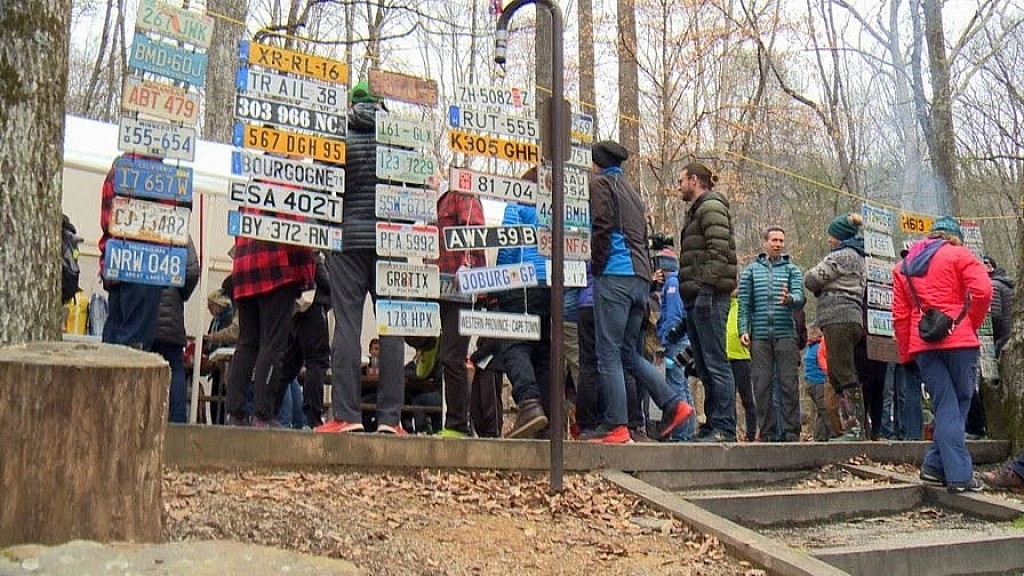
"The mountain has been winning a lot more often than the runners. I think it has won 1,302 and been beaten 18 times," said Cantrell.
Login to leave a comment
Nicky Spinks is hoping to be the first woman to finish the Barkley marathons
The Barkley Marathons, which is “rumoured” to take place this weekend, is surrounded by folklore about prison escapes and encounters with wild boar. If you’ve never been to Frozen Head, you might think of it as a mysterious, forbidding place whose only reason for existence is as the site of Laz Lake’sinfamous 100-miler.
But Jamil Coury who is returning to the Barkley for the fifth time this year, you’ll see that it’s just a state park like any other, with trails and campgrounds where families go to relax a little later in the season, just like they do in state, national and provincial parks across North America.
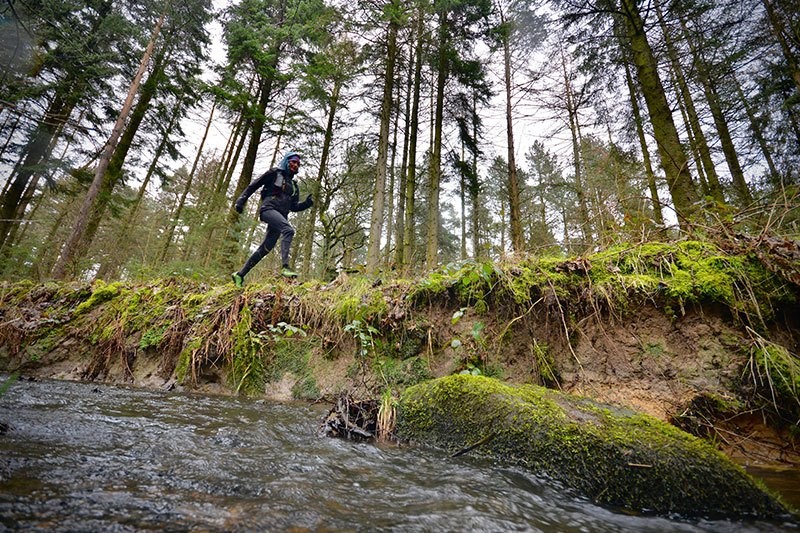
Coury and another Barkley veteran, Guillaume Calmettes of France, spent a few days together last month, running the trails in Frozen Head to get in shape for this year’s race. They make Frozen Head look positively benign.
Last year there were no finishers, thanks largely to terrible weather. Spring weather can be unpredictable anywhere, and last year Frozen Head got walloped with a massive rainstorm, dense fog and cold temperatures on race weekend.
Running five 20-mile loops in 60 hours with no course markings and no organized aid stations is hard enough–add bad weather to the mix, and any hopes of finishing were dashed for most people after a loop or two. Gary Robbins completed a “fun run,” three loops in under 40 hours.
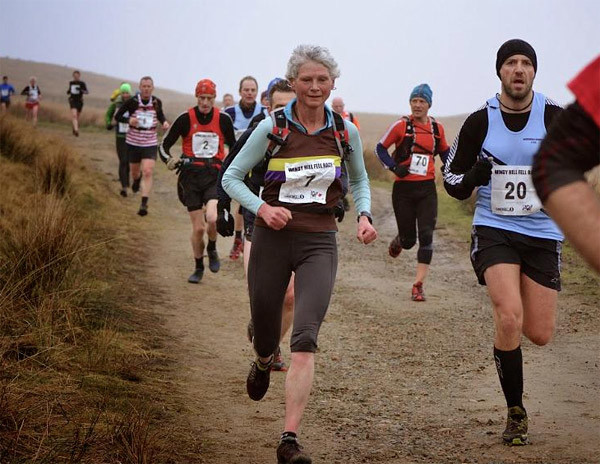
This year could be a different story. The forecast for Frozen Head is for temperatures of between 50 F (10 C) and 68 F (20 C), with thunderstorms possible on Saturday.
We’ve also just learned that Nicky Spinks is among the starters. The British ultrarunner ran a double Ramsay Round last year, has also run a double Bob Graham Round, and crewed for Damian Hall at UTMB last year.
Let’s hope the will be some finishers this year.
Login to leave a comment
These are the eight Gnarliest Races in the World and only a few have crossed the finish line
Login to leave a comment
No one finished the gruelling Barkley Marathons race this year
Login to leave a comment
The Barkley Marathons participants are in for a world of Hurt this weekend
Elite runners from around the globe are in for a world of hurt this weekend during the annual 100-mile Barkley Marathons in Morgan County.
The Barkley Marathons has grown from a small and ridiculous race in Morgan County, Tennessee, into an international phenomenon followed around the globe.
The brainchild of former ultra-marathoner Gary Cantrell has especially grown in popularity in the last few years, coinciding with the release of a documentary on Netflix and other high-profile media coverage. The added media attention is a burden and a blessing.
The media can help inform people about the event while also allowing them to stay away. "It is not a spectator event. I hate it, because everyone wants a piece of that feeling [of the Barkley Marathons]. We just don't have room for people to come here and watch. This is all set up at a small campground. The runners are gone for several hours at a time in the middle of the woods. We need the media to let people know about the race because that's the best way for them to experience it," said Cantrell.
The hoopla is the result of true substance. The race is as intriguing as it is insane. Runners have to complete five 20-mile loops up and down the hills of Frozen Head State Park within 60 hours. Runners do not know when the race will start, other than sometime between midnight and noon on Saturday.
They are given one-hour advance notice of the start when Cantrell blows a conch shell. The race begins when Cantrell lights a cigarette.
Login to leave a comment
This race is considered the Coldest Ultramarathon on the Planet
Epic Running Adventures
Login to leave a comment


